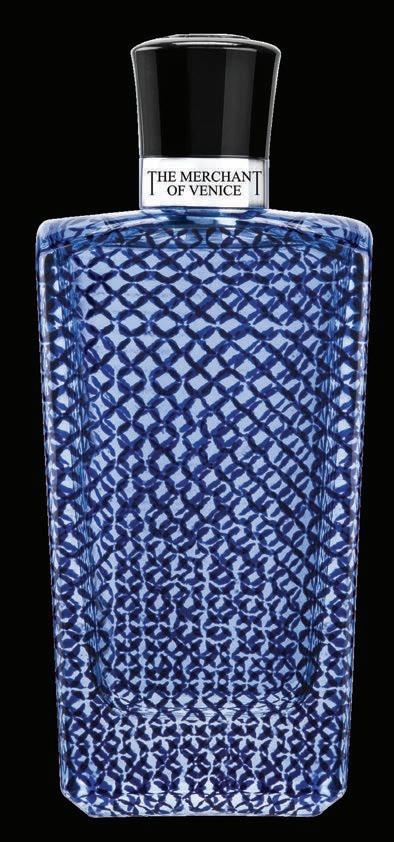ways to REFRESH YOUR FITNESS PICKLE RECIPES TO RELISH KEY HEART HEALTH ADVICE



ways to REFRESH YOUR FITNESS PICKLE RECIPES TO RELISH KEY HEART HEALTH ADVICE


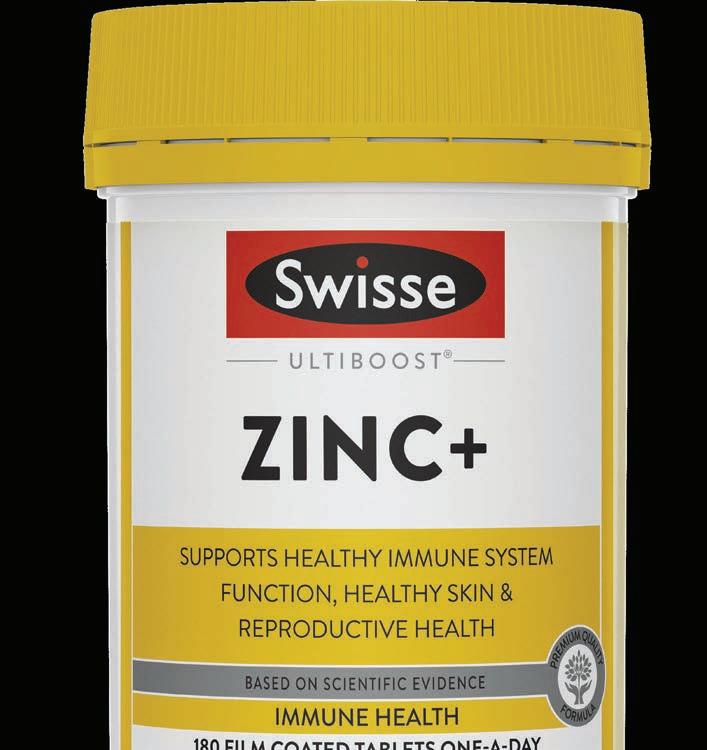
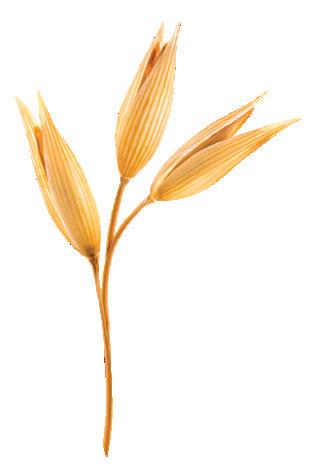
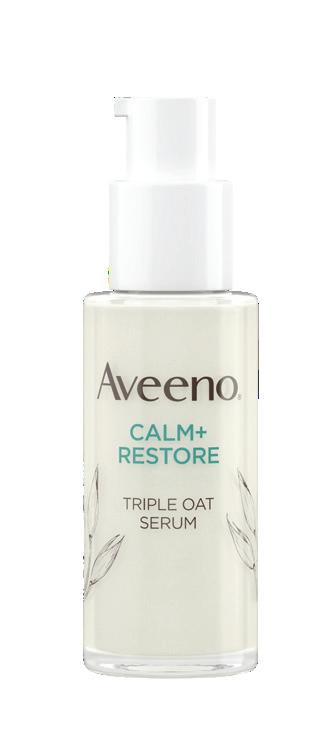
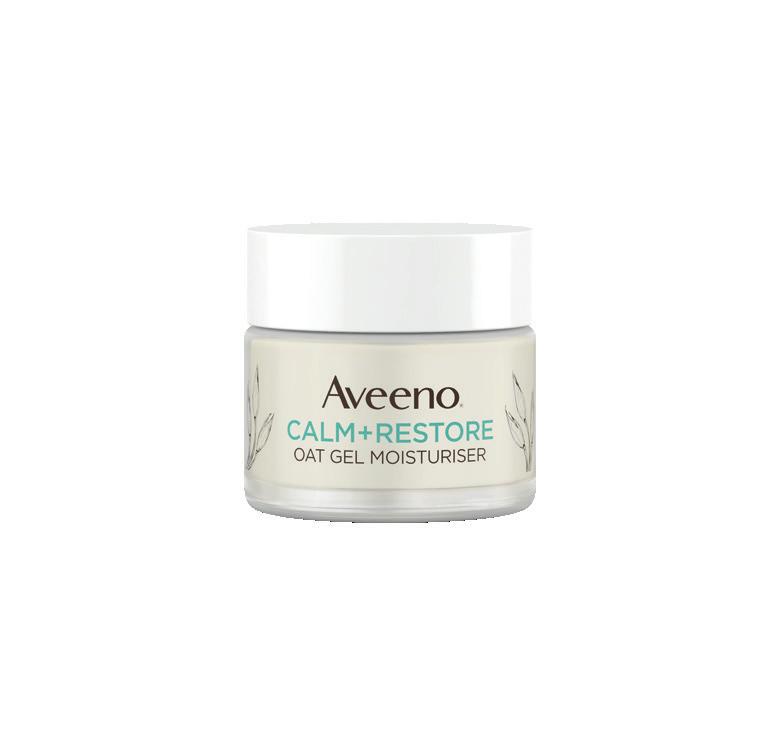
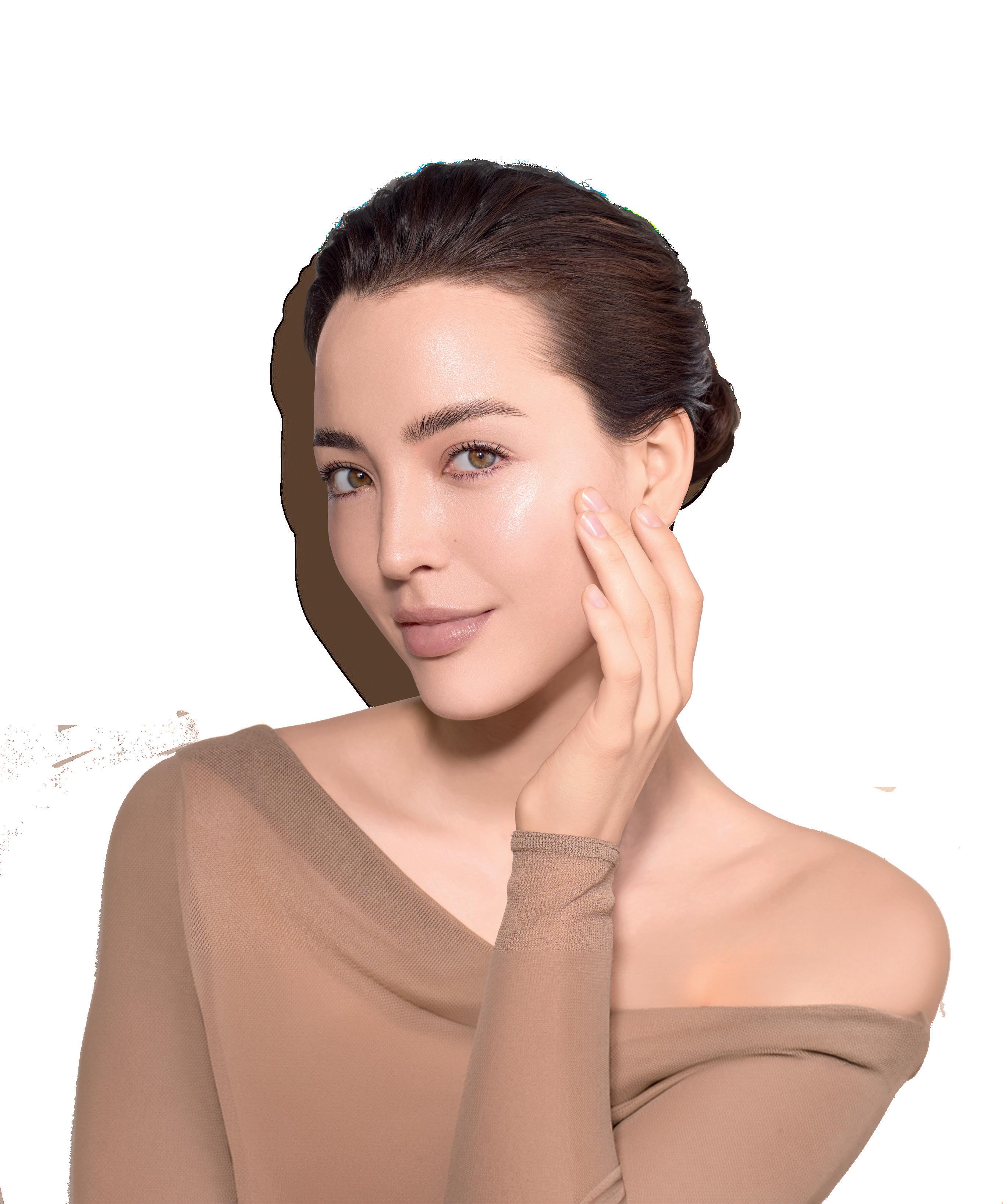

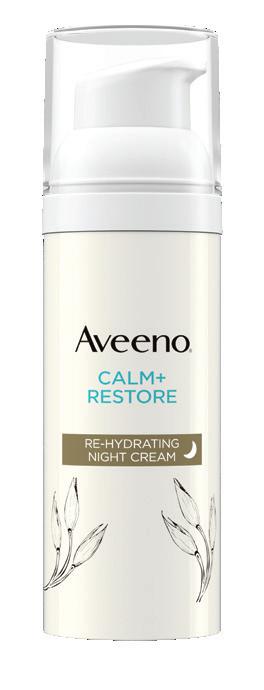
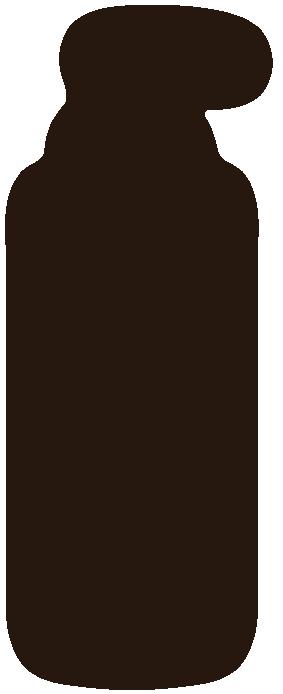

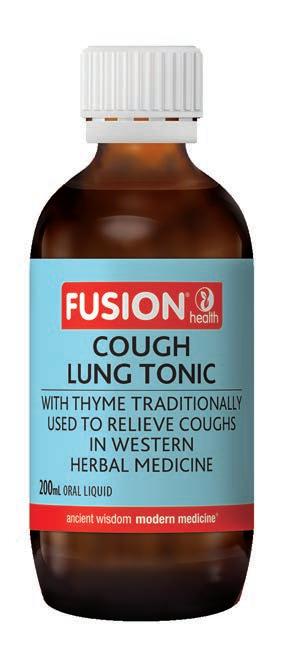



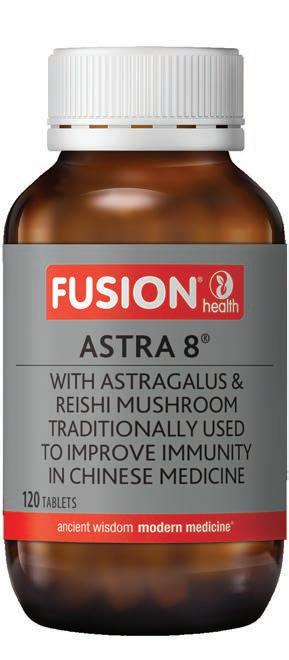


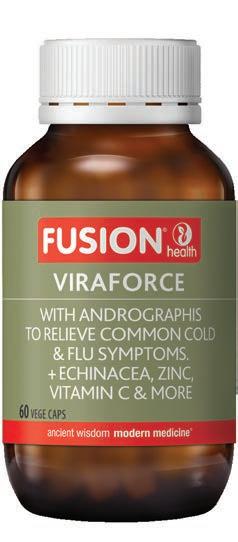
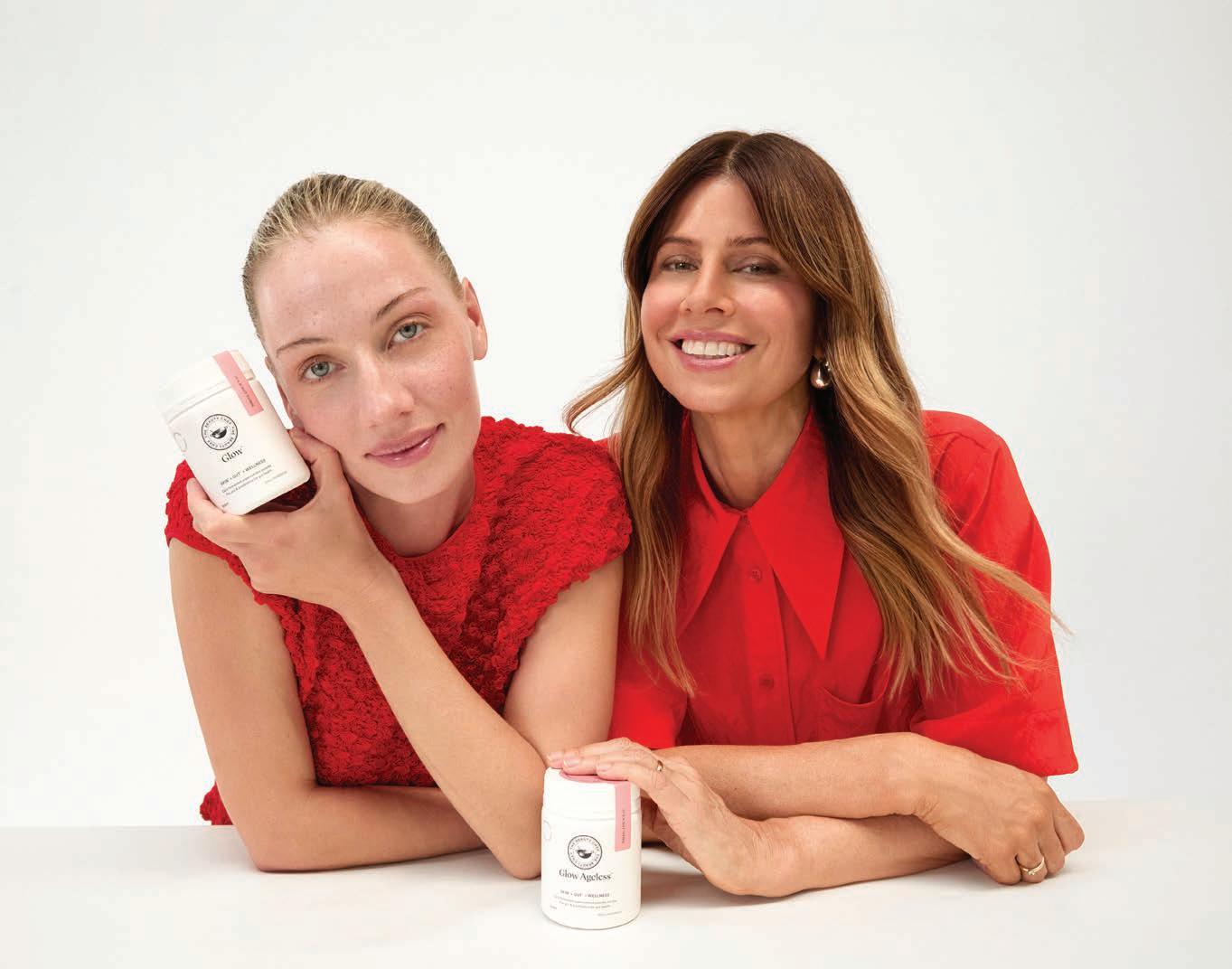





THE HOUSE OF WELLNESS
is published for Chemist Warehouse by News Corp Australia
PUBLISHER
Chemist Warehouse
SUDDENLY MANAGING DIRECTOR
Nick Smith
CREATIVE CONTENT DIRECTOR
Fiona Welsh
EDITOR
Laeta Crawford
CREATIVE
Pascale Clearihan
Meisha Reynolds
Sheridan Frawley
Michael Owen
SUB-EDITORS
Maureen Doyle
Joanne Trzcinski
Cathy Laird
PHOTOGRAPHY News Corp Australia
Getty Images
Snapper Images
The Herald & Weekly Times Pty Ltd ABN 49004113937
HWT Tower, 40 City Rd Southbank, Victoria 3006
COLOUR
SEPARATIONS
HWT Imaging
PRINTING IVE Group
CHEMIST WAREHOUSE
HOUSE OF WELLNESS
PRINT PRODUCTION
MANAGERS
Nikita Thomas
Kayla Elgaznieks
houseofwellness.com.au
thehouseofwellness@ news.com.au
The House of Wellness is published quarterly by The Herald & Weekly Times (ABN 49004113937) on behalf of Chemist Warehouse. Prices correct at time of printing. All products subject to availability. Not all products or promotions are available online. Information correct at time of going to print.
AC-007940
Carla Oates has always been intent on improving people’s health from the inside out.
After realising the connection between what we consume and skin health from an early age, she built her brand, The Beauty Chef, around improving both. Now with several books and a range of products targeting gut and skin health to her name, she is keen to help others embrace a more holistic health approach.
“Changing the paradigm of the beauty industry to focus on inner beauty rather than outer beauty hasn’t been easy,” Carla says.
“(But) it’s been so rewarding to be part of the revolution.”
Olympic swimming champion
Michael Klim and actor and charity founder Samuel Johnson share
Stay w l and enjoy!
From the team at The House of Wellness
what they wish they had told their younger selves, while The House of Wellness TV’s new co-host Melissa Doyle reveals why health is so important to her.
Sick of hacking and tracking your sleep patterns to no avail? We have some expert tips to help you relax and dream on, and we bring you everything you need to know about the upcoming flu season.
Plus, how to refine your make-up look to match a powerful print, the seven beauty staples you must own, and all our regular health and lifestyle features.
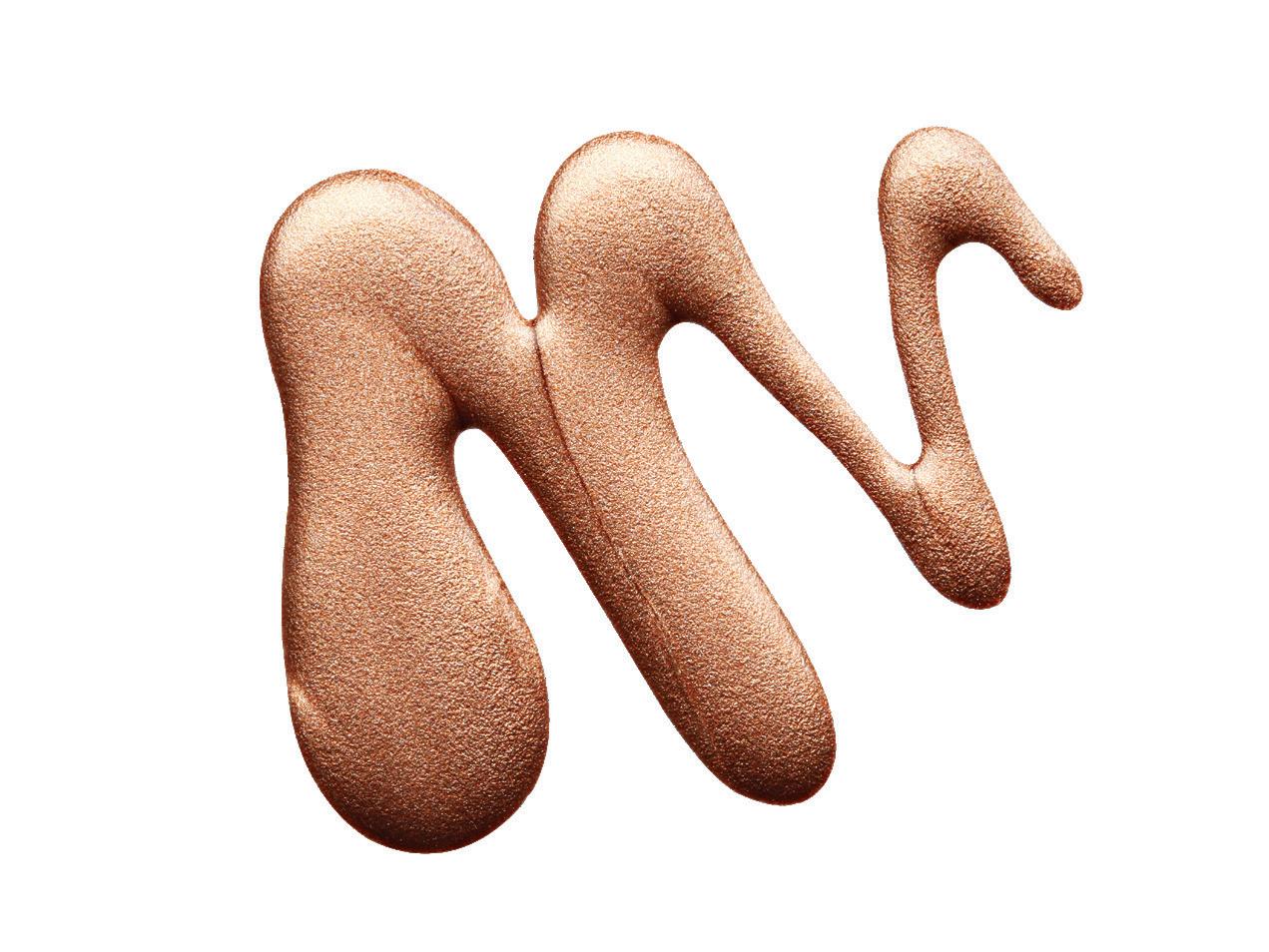





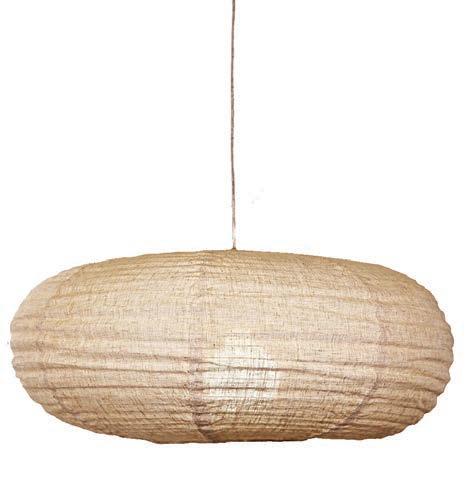

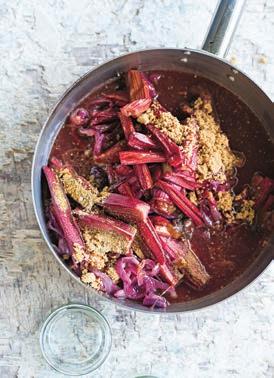

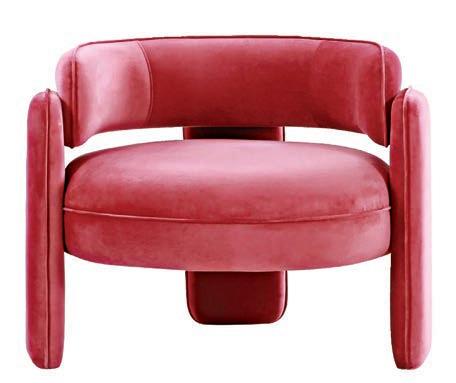
1 OF 10 COPIES OF THE BEAUTY CHEF
Simply tell us in 25 words or less your favourite healthy spin on a traditional recipe.
Competition entries open at 12.01am on April 5, 2025, and close at 11.59pm on Sunday, May 4, 2025. Email your entry, name and contact details to thehouseofwellness@news.com.au

Trends
8 We are loving
Casual, chic essentials with a touch of spice
Style
11 Season ready
Time to prep your skin to face the cold
17 Dry zone
Reasons to avoid sleeping with wet hair
20 Beauty forecast
New cuts and rich tones to know about
23 Cult classics
Add these staples to your beauty bag
24 Get the look
Make-up that rocks a strong print
27 Roar power
Lead the way with animal magnetism
28 Make your mark
Mix and match with on-trend pieces
31 By design
Sensational scents at a ordable prices
Features
41 The X-factor
How certain people attract success
43 Wise words
Advice Aussies would give their younger selves

48 In harm’s way
What to do when your child is bullied
52 My life
Aiva Anagnostiadis
57 Sweet dreams
Hacks for a good night’s slumber
60 Toxic fallout
Growing up with narcissistic parents
Health
65 Stay alert
Why heart issues aren’t always obvious
69 Sudden impact
The latest advice on concussion
70 Immune to it
Tips on staying healthy this season
73 Ageing well
Best skincare for every generation
74 Dopamine debrief Ditching a short-term rush for true happiness
77 Dr Sally Cockburn
Make your health checks a top priority
Live well
81 Far horizons
Older travellers busting stereotypes
86 Zest for life
Pickles and relishes to enliven your dishes
88 A new you
Simple steps for transformative change
Also
92 Decor
95 Books
96 What’s on and quiz
98 Melissa Doyle
Catch up with our new TV co-host
We’re keeping it casual and just a little bit chic as autumn rolls in with its warm, spicy tones
Compiled by Penny Harrison

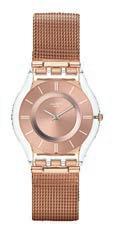

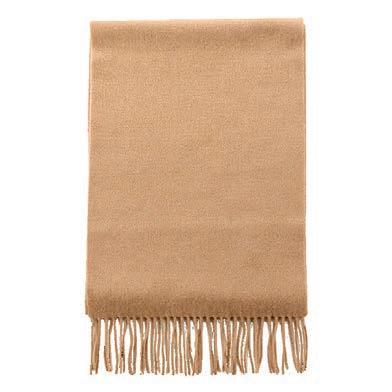

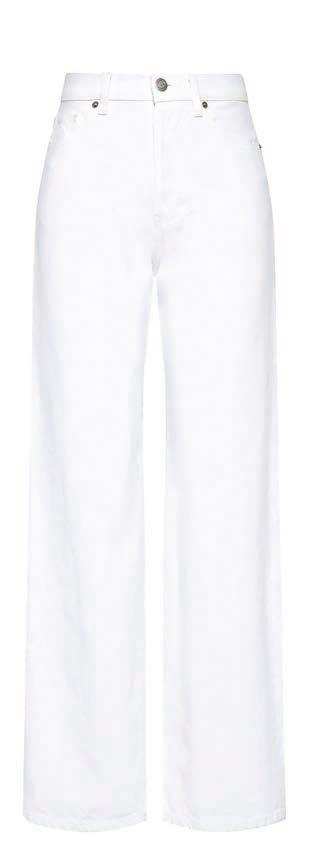
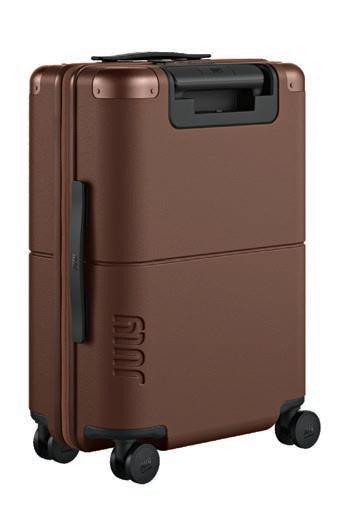
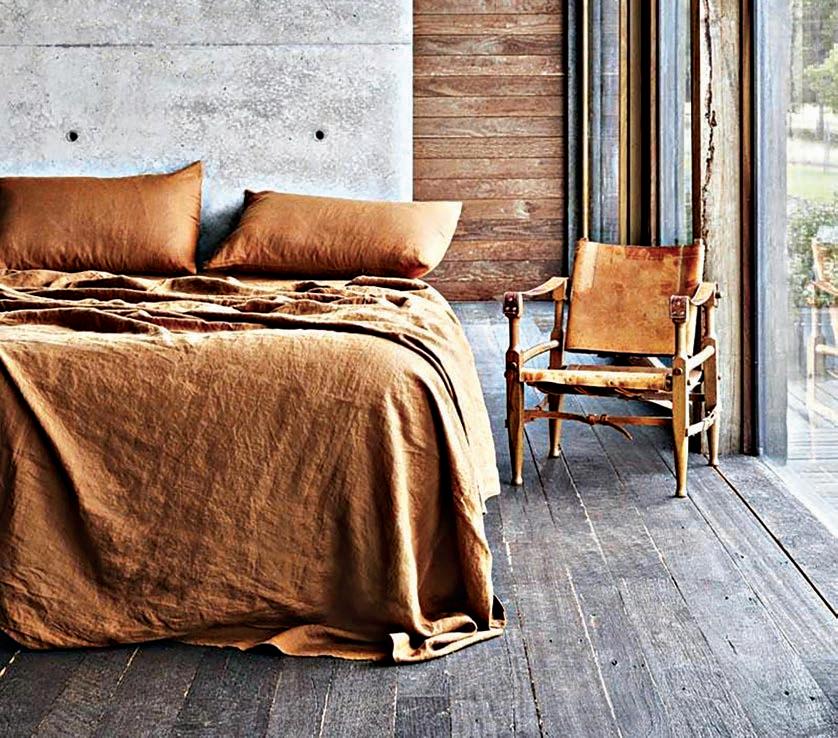
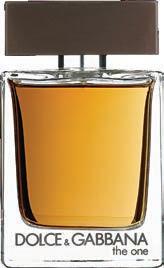

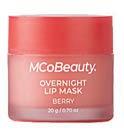
CLOCKWISE FROM TOP LEFT Loose fit tee, $34.99, hm.com/au; Valentina jeans, $229, henne.com.au; MCoBeauty Super Glow All Over Body Luminiser Bronze 75ml, $29.99; Greenhouse linen flat sheet, from $159 (queen size), greenhouseinteriors.com.au; MCoBeauty Overnight Lip Mask Berry, $14.99; Dolce & Gabbana For Men The One 100ml EDT, $99.99; Carry on suitcase, $325, july.com; Reebok Nano X5 shoes, $220, reebok.com.au; 100 per cent lambswool scarf, $69, creswickwool.com; Hello Darling watch, $235, swatch.com




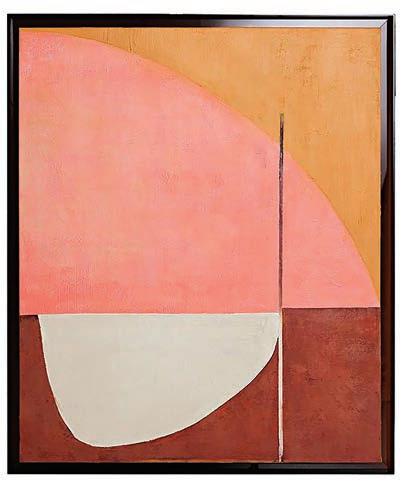



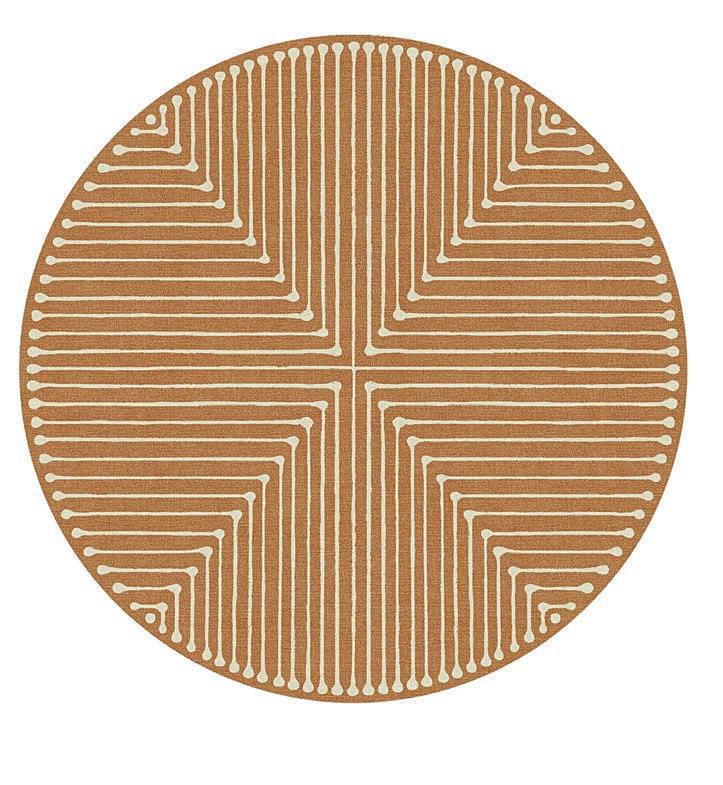
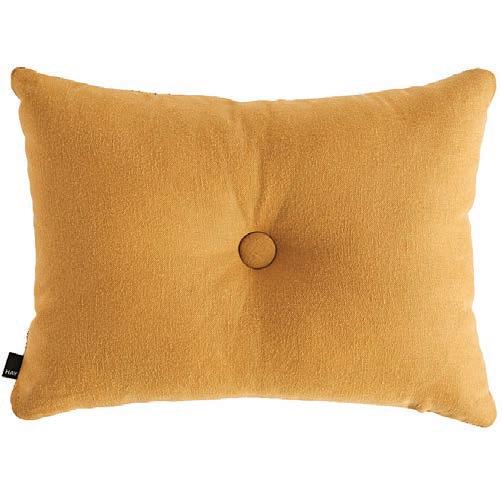

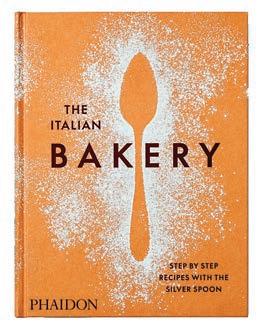
CLOCKWISE FROM TOP LEFT Flynn rust linen-blend tiered top, $129.99, and maxi skirt, $169.99, dissh.com.au; framed artwork, $1499, houseoforange.com.au; Zander Lighting Ryla pendant shade, $119, templeandwebster.com.au; Jonathan Adler Inkdrop rug, from $489, ruggable.com.au; The Italian Bakery : Step by Step Recipes with the Silver Spoon (Phaidon), $65, milligram.com; Studio Milligram tea brewer, $69.99, milligram.com; Ziggy stump, $390, fentonandfenton.com.au; Dot cushion, $181, hayshop.com.au; Mosman hoops, from $180, finerrings.com; Revlon Super Lustrous Lipstick Caramel Glace, $23.99



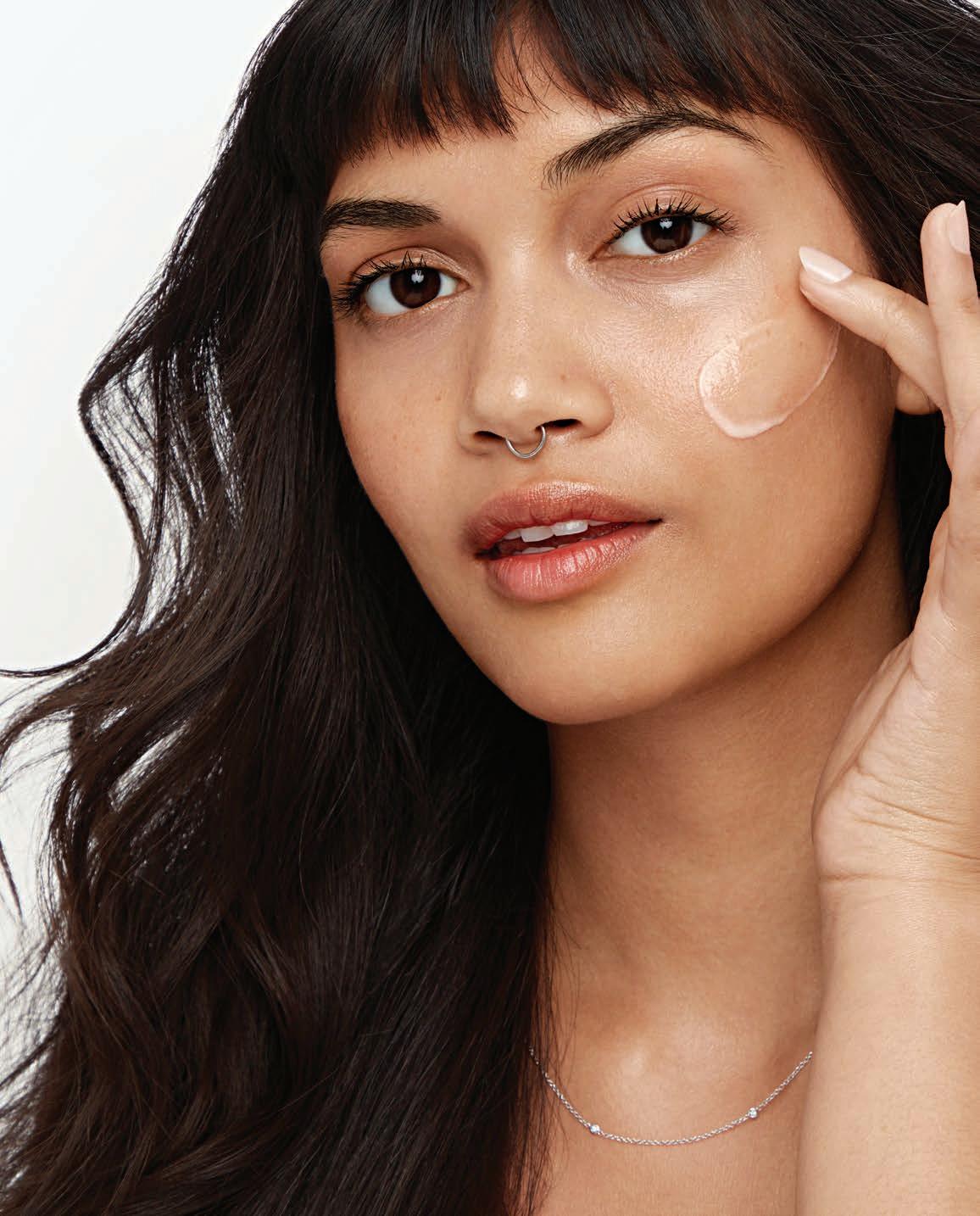
As the weather cools, it’s time to rethink your routine and take advantage of the latest trends
Words Charlotte Brundrett
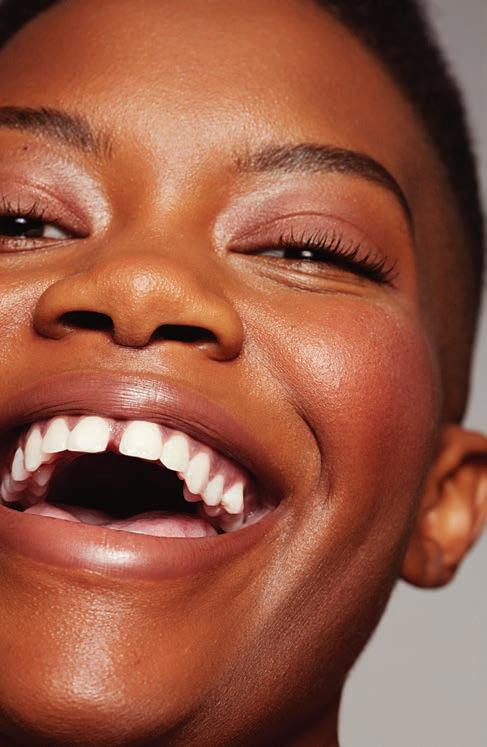
Invest in a quality multipurpose balm this winter. Not only is it great for chapped lips and flaky skin, it can even alleviate irritated nostrils.
WE LIKE Bloom & Blossom Wonder Worker Multitasking Balm, $17.99
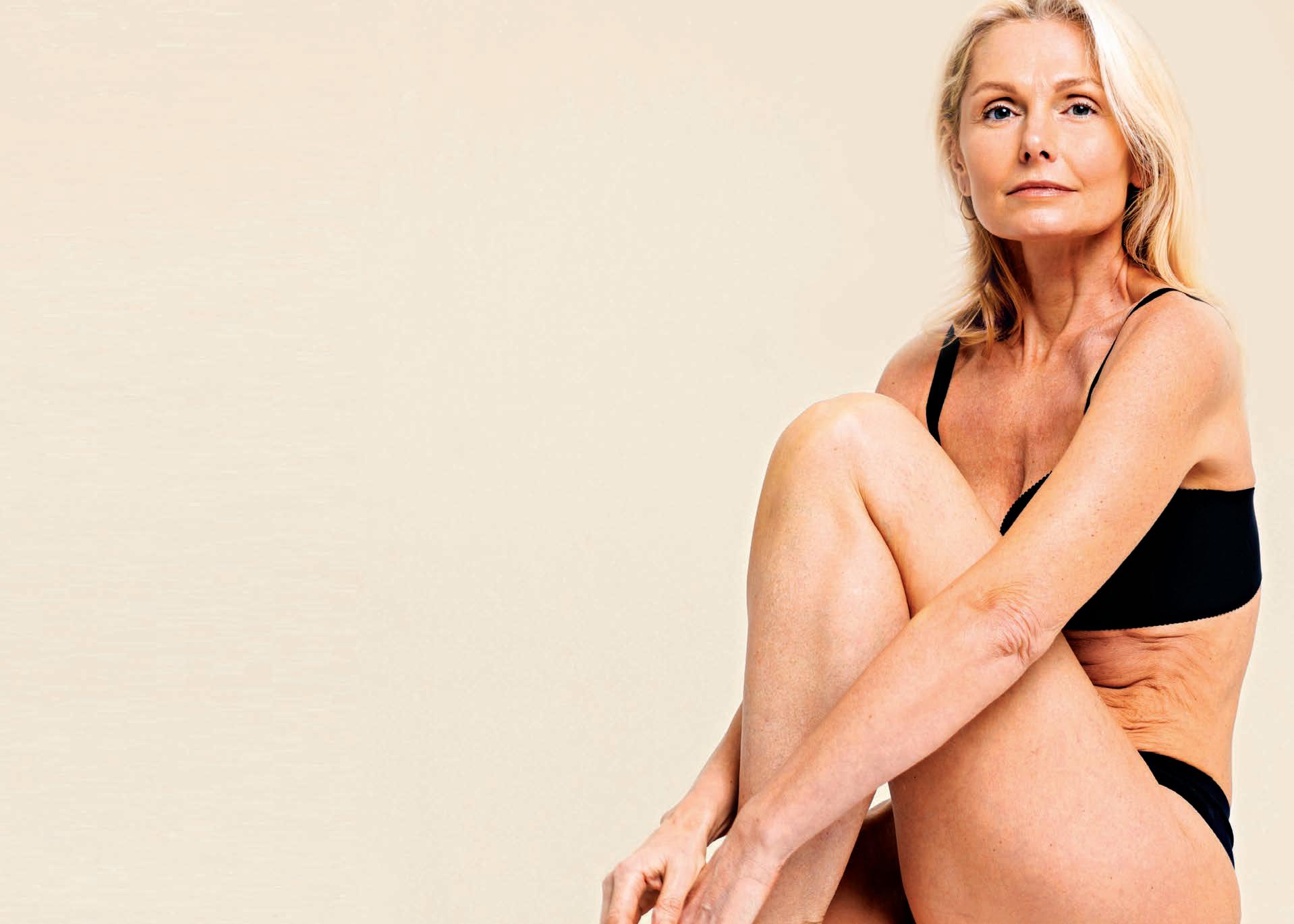
Rather than give your skincare routine a complete overhaul in the thick of winter, consider a transitional approach instead.
“It’s always better to gradually transition to your winter skincare routine in autumn before the cold fully kicks in,” says Rohan Widdison, chief executive of New Laboratories cosmetics manufacturer.
“It takes a while for the skin to adjust to a changing climate. But if your routine already includes products targeting common seasonal skin concerns, your skin is less likely to experience flare-ups.”
WE LIKE Avène XeraCalm Cleansing Oil 400ml, $31.99; Weleda Skin Food 30ml, $14.99
Rohan says there is always room for advancements in skincare, particularly those targeting premature ageing.
“Some really exciting developments are happening in the skincare space, particularly microbiome-based and biomimetic skincare, which mimics the composition of skin,” he notes.
According to The Skin Bar founder and aesthetician Samantha Appel, the cooler months are ideal for targeted treatments that require downtime.
“There’s nothing quite like a skin needling treatment and going home to hibernate and watch the skin renew over five days,” Samantha says.
WE LIKE Manicare Salon Firming Face & Body Sculptor, $118.99; Colgate Optic White LED Whitening Device, $83.99
Keeping skin hydrated in winter has long been ingrained in us.
“Richer formulations are needed in winter as the cold and dry climate can lead to irritated, dry, cracked skin,” Rohan says.
“Look for a balance of humectants to draw in moisture, emollients to smooth and hydrate, and occlusives like petroleum and beeswax to seal in moisture and protect the skin. For winter, cream-based formulations are best. Leave the gels and lighter products for summer instead.”
WE LIKE Ego QV Ceramides Cream 500g, $20.99
After years of glass skin dominating beauty, supple skin is having its moment. Although it’s closely
associated with healthy, youthful skin, the skin finish is more often acquired through a combination of targeted treatments, products and lifestyle adjustments.
Collagen has been heralded for its ability to help the skin appear more hydrated and look smoother, contributing to a refreshed and supple look.
More recently, exosomes have become the latest skincare ingredient gaining buzz.
“Skincare is getting extremely high-tech these days and exosomes are a case in point,” Rohan says.
He says they are cutting-edge because they operate to visibly “improve skin tone, texture and hydration”.
Exosomes help deploy ingredients to make the skin visibly smoother and more refreshed, supporting a healthy looking complexion.
WE LIKE Olay Super Serum, $69.99
Gentle is the way Actives such as vitamin C, AHAs and retinol have been skincare mainstays for decades, but now gentler alternatives are emerging as equally effective options, without the associated irritation.
One ingredient that is particularly on the rise is mandelic acid.
“Mandelic acid is fast becoming the preferred way to exfoliate in the cooler months,” Rohan says. “Winter is all about skin maintenance and repair, so it pays to choose gentler options.”
WE LIKE Skin Republic Niacinamide 10% Serum 30ml, $16.99; Skin Republic Hyaluronic Acid 1% + Niacinamide 2% Serum 30ml, $19.99
The power of nourishing ingredients such as hyaluronic acid, glycerin and ceramides can’t be overstated, according to Rohan. Not only do they help offset dehydrated, flaky skin, they can also help to reduce the appearance of fine lines.



Korean beauty has long been at the forefront of innovative technology and formulations, particularly when it comes to skincare. And in an exciting development, one of the leading K-beauty brands, SKIN1004, is now exclusively stocked at Chemist Warehouse. The hero ingredient of the brand — which prides itself on natural, hypoallergenic products — is high-quality Centella asiatica from Madagascar. All of the products are sensitive-skin friendly due to their mild, soothing and noncomedogenic properties.
WE LIKE SKIN1004 Madagascar Centella Light Cleansing Oil 200ml, $26.99; SKIN1004 Madagascar Centella Hyalu-Cica First Ampoule 50ml, $20.99; SKIN1004 Madagascar
Centella Hyalu-Cica Moisture Cream 75ml, $26.99
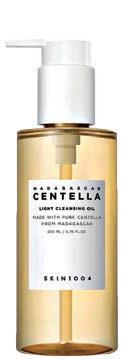
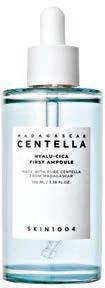

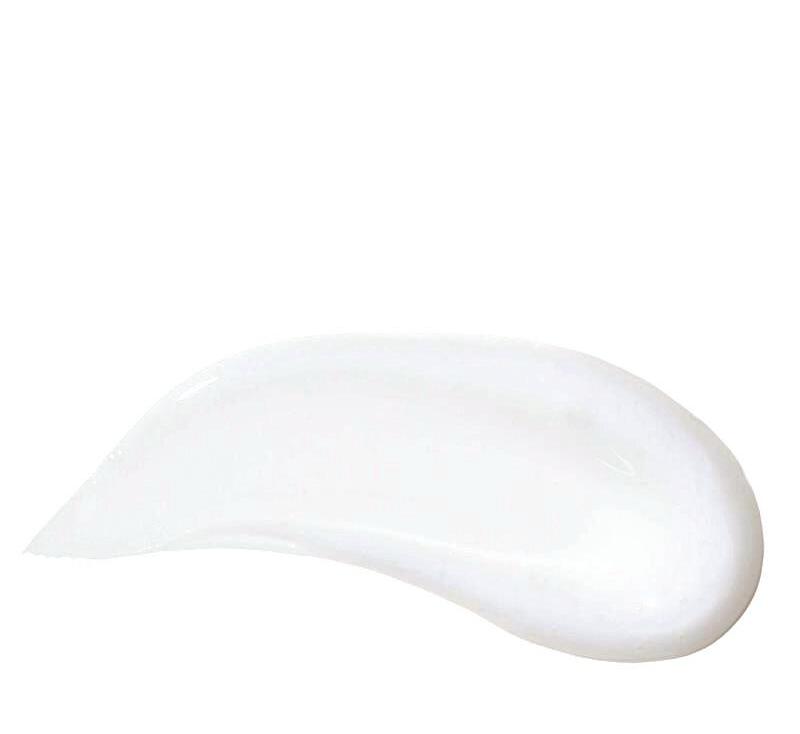
The seasonal skincare shift has many of us stumped, but making the right adjustments are easier than you think
Charlotte Brundrett
If you naturally have dry skin, it’s likely to be exacerbated by the extremities of the cold. To counteract this, Australian dermatologist Dr Eshini Perera advises looking for a moisturiser formula that hydrates and protects the skin.
“If you have dry skin, a richer, cream-based formula with deeply hydrating ingredients like ceramides and hyaluronic acid will help lock in moisture and prevent flaking,” she says.
WE LIKE CeraVe Moisturising Cream 454g, $25.99

While those with oily skin are less prone to moisture loss, adequate hydration is just as important as for those with dry skin. “Oily skin benefits from a lightweight, oil-free moisturiser that hydrates without clogging pores,” Dr Perera says.
WE LIKE CeraVe Oil Control Moisturising Gel- Cream 52ml, $21.99
Much like those with dry skin, people with sensitive skin are susceptible to flare-ups during the colder months.
“Those with sensitive skin should look for gentle, fragrance-free options that soothe and protect against irritation,” Dr Perera says.
WE LIKE CeraVe Advanced Repair Balm 88ml, $22.99

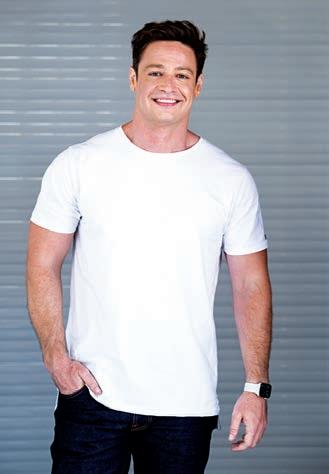
Skincare mistakes to avoid
A lot of Australians are familiar with skincare actives and exfoliants, but underestimate their strength, which can lead to a compromised skin barrier.
“Many people use harsh products and often layer harsh exfoliating cleansers with actives and anti-acne products,” Dr Perera says.
“Each of these products strip the skin of its natural barrier and overloading the skin with too many harsh treatments at once can weaken the skin barrier, leading to dryness, irritation, breakouts and sensitivity.”
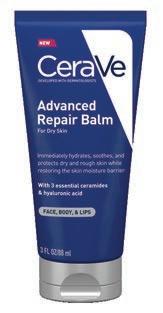
Instead, Dr Perera advises prioritising barrier care by choosing cleansers and moisturisers that support and strengthen the skin.
“By focusing on hydration, protection and gentle care, you can build a routine that works with your skin rather than against it,” Dr Perera says.
‘THE ONE’
Dr Matt Agnew grew up knowing the importance of sun protection, but it wasn’t until the scientist and “edutainer” reached adulthood that he paid more attention to his skin.
“I’d seen a bunch of stuff about CeraVe through social media, so I decided to give it a go and started using CeraVe Moisturising Lotion,” he says.
“Needless to say, I loved it.”
In addition to the nourishing moisturiser, CeraVe’s Hydrating Cream-to-Foam Cleanser is another one of Dr Matt’s top picks.
“I like to keep my skincare simple, and because all CeraVe products are developed with dermatologists and formulated with three skin-identical ceramides to strengthen the skin barrier, I know they’re reliable, backed by science and good for my skin,” he says.
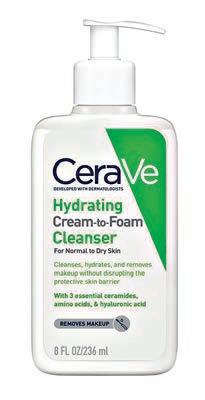
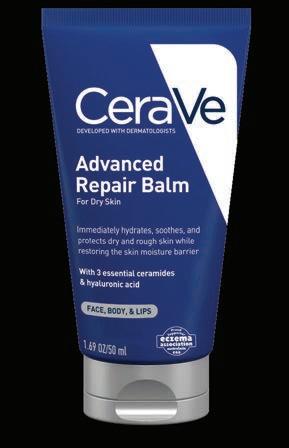

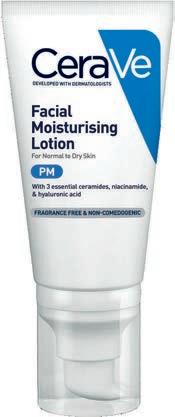
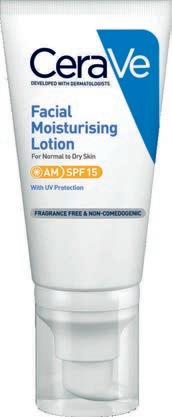

Start your routine with a fresh face, using a gentle cleanser to wash away impurities.
STEP 2: MOISTURISE
Twice daily, apply moisturiser to damp skin after cleansing to help trap more moisture.
DEVELOPED WITH DERMATOLOGISTS
3 ESSENTIAL CERAMIDES
GENTLE ON SKIN Non-drying & non-irritating
STEP 3: PROTECT
Help protect against premature ageing by wearing broad spectrum sunscreen every day, rain or shine.
DRY SKIN NORMAL SKIN COMBINATION SKIN OILY SKIN
• Dull, rough, flaky &/or scaly skin.
• Less natural oils than other skin types.
• Balanced skin – neither too dry nor too oily.
• Areas of dry & oily skin.
• The T-zone is commonly oily and the cheeks are commonly dry or normal.
• Shiny and greasy skin.
• Especially throughout the T-zone (forehead, nose, and chin).
• Can be more prone to blemishes.
SENSITIVE SKIN is often referred to as a skin type, but it’s possible to have oily sensitive skin, dry sensitive skin, or normal sensitive skin.
If you have sensitive skin, it is a good idea to use minimalist, fragrance-free formulas.
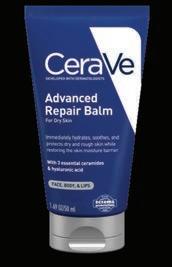
For VERY DRY SKIN, this ointmentlike texture immediately soothes and protects dry and rough skin.

For NORMAL TO DRY SKIN, I am lightweight and will keep your skin hydrated for 24HR thanks to my unique MVE technology.

For NORMAL TO DRY SKIN, my creamy texture paired with SPF15 is ideal for your morning moisturisation step.
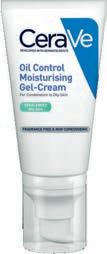
For COMBINATION TO OILY SKIN, this mattifying moisturiser absorbs excess oil while hydrating skin. All the hydration with none of the shine.



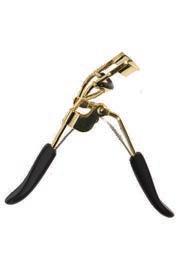
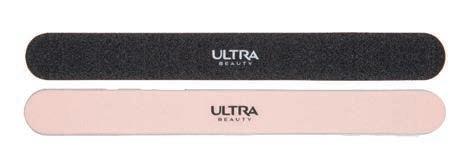
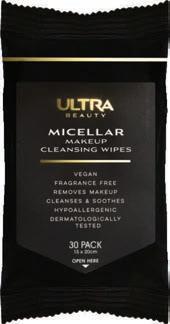



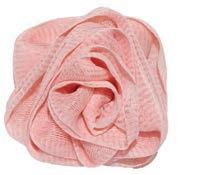
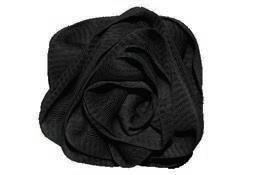

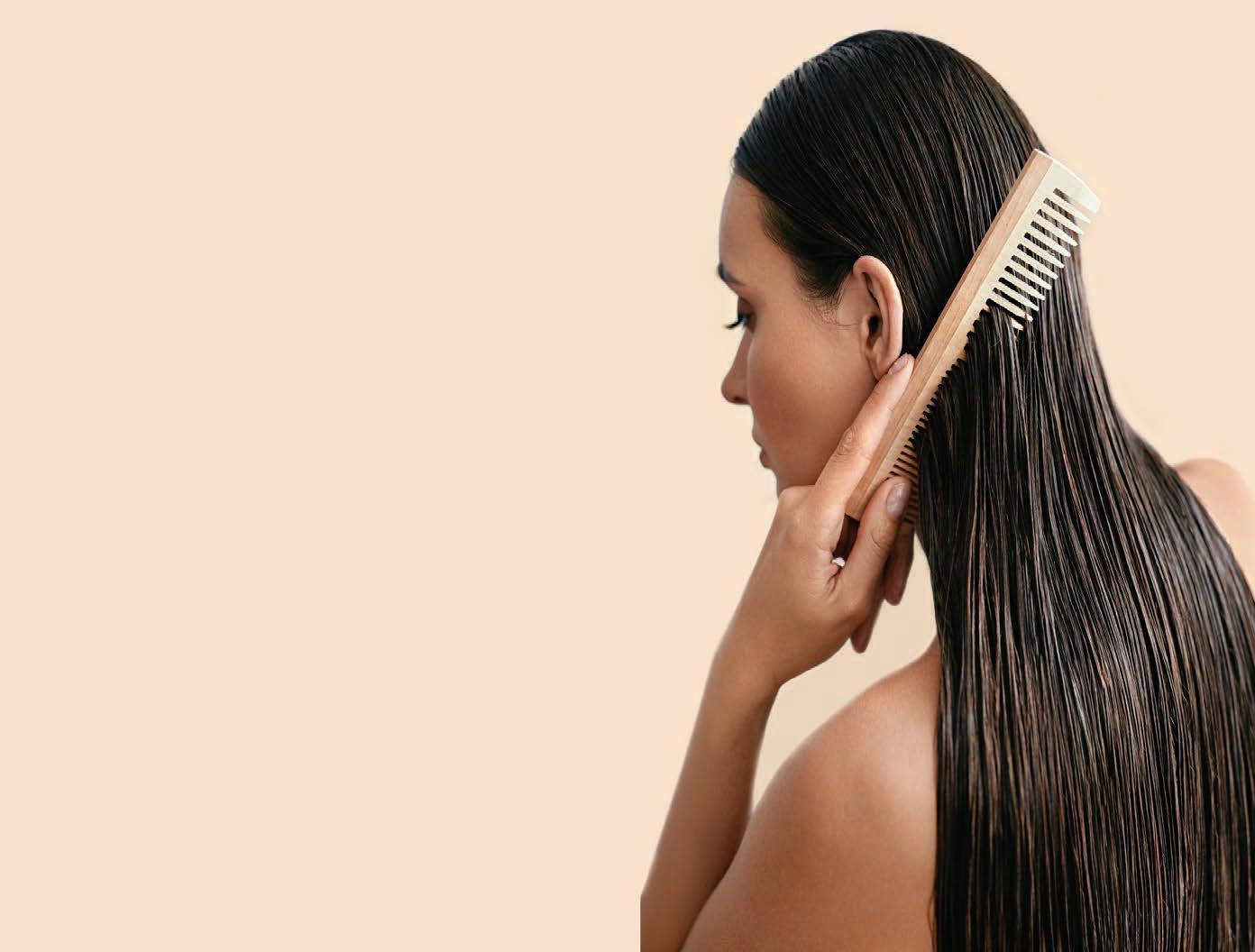
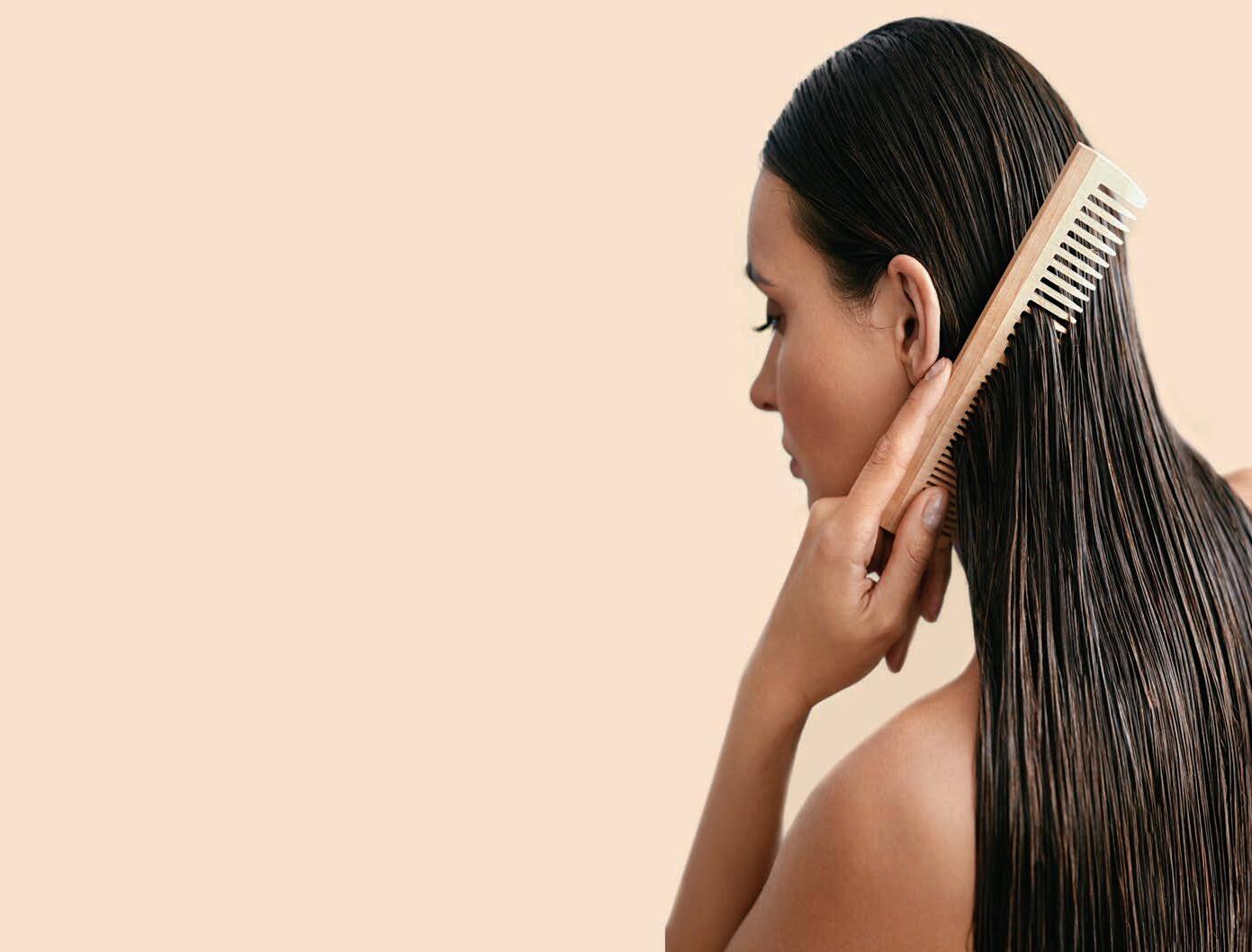

Words Sharon Hunt
Sometimes all you want to do at the end of a long day is have a quick shower before falling into bed.
But if you’re guilty of regularly going
to bed with wet hair, you might want to think twice.
Sleeping with wet hair can create a warm and damp environment that’s not only prime for
bacteria to flourish, but could have potentially harmful consequences for your scalp, skin and hair.
Here, the experts explain the risks.
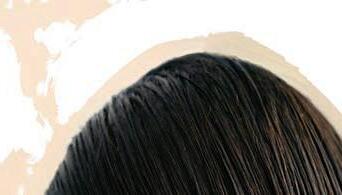



Going to bed with a head full of wet hair is asking for scalp troubles, according to dermatologist Dr Leona Yip from Brisbane clinic Skin Partners.
“What you’re essentially doing is trapping moisture, which can affect the scalp’s moisture barrier integrity,” Dr Yip says.
She explains that aggravating an imbalance of the microbiome triggers the “resident scalp yeast malassezia and bacteria staphylococcus to grow in higher proportions”.
“All of this can lead to development of scalp issues like dandruff, seborrheic dermatitis, folliculitis and acne,” Dr Yip says.
Sleeping on wet hair also potentially creates a breeding ground for bacteria and germs within your pillow — so spending hours every night with your face lying on a contaminated pillow could increase the risk of bacterial infections.
To avoid these nasties, Dr Yip strongly advises washing your pillowcases at least once a week.
Beyond the scalp and skin, hairstylist and educator
Yovanka Loria warns that sleeping with wet locks can cause hair damage.
“Hair is weaker when wet because the hair shaft swells, raising the cuticle and weakening the bonds,” the founder of Adelaide’s Yovanka Loria Salon explains.
“This makes the strands more prone to stretching and breakage.”
Add in some friction between your hair and the pillow, caused by tossing and turning in bed, and Yovanka says the result can be “tangled, frizzy or even breaking hair”.
The bottom line?
“Going to bed with wet hair is a big haircare no-no!”
If scalp issues, bacterial infection and damaged hair aren’t bad enough, Dr Yip also notes broader health issues can arise from going to bed with wet hair, including disrupted sleep and waking with headaches. Also of concern is that dampness “can increase dust mites or mould housed in your bedding, potentially aggravating allergies, eczema and possibly asthma”.
The experts have simple solutions to minimise any of these problems — dry hair thoroughly before bedtime or simply switch to a morning wash routine.
Yovanka recommends ideally towel drying hair and then letting it air dry 70-80 per cent before blow drying on a low-heat setting.
However, on the occasional night when going to bed with wet hair is unavoidable, she suggests reducing the risk of damage by styling your hair into a loose braid or bun to minimise friction.
“You could also wear a protective silk or satin sleep cap,” she adds.
A silk pillowcase is another useful option, with Dr Yip noting it wicks moisture away, but it’s not a cure-all and like any other bedding needs to be washed regularly.
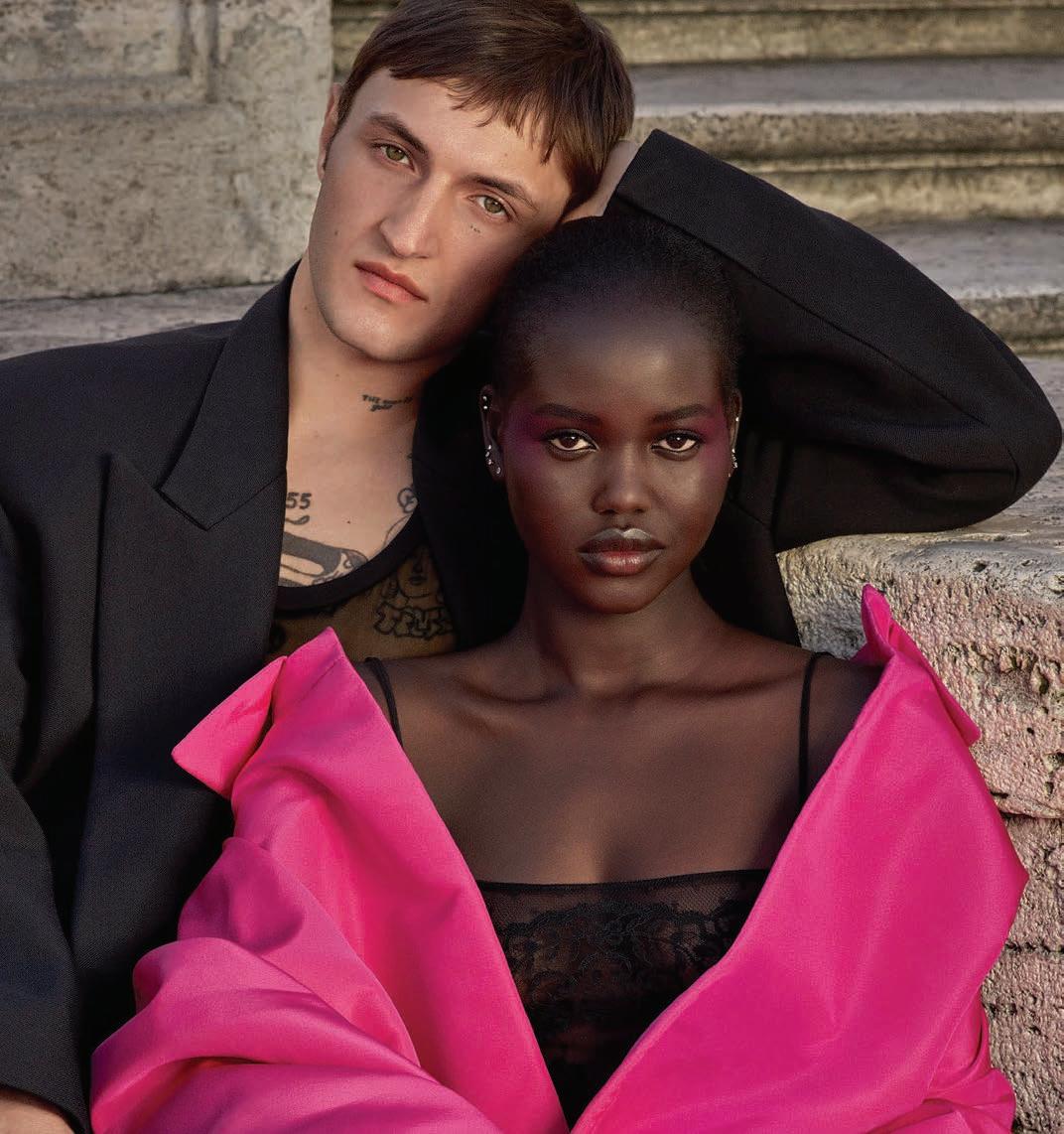
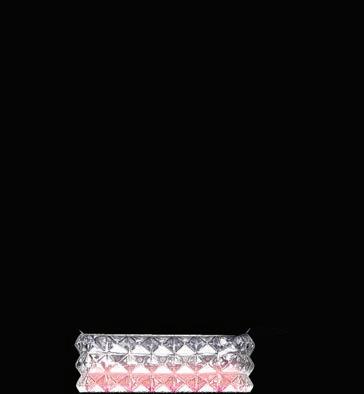




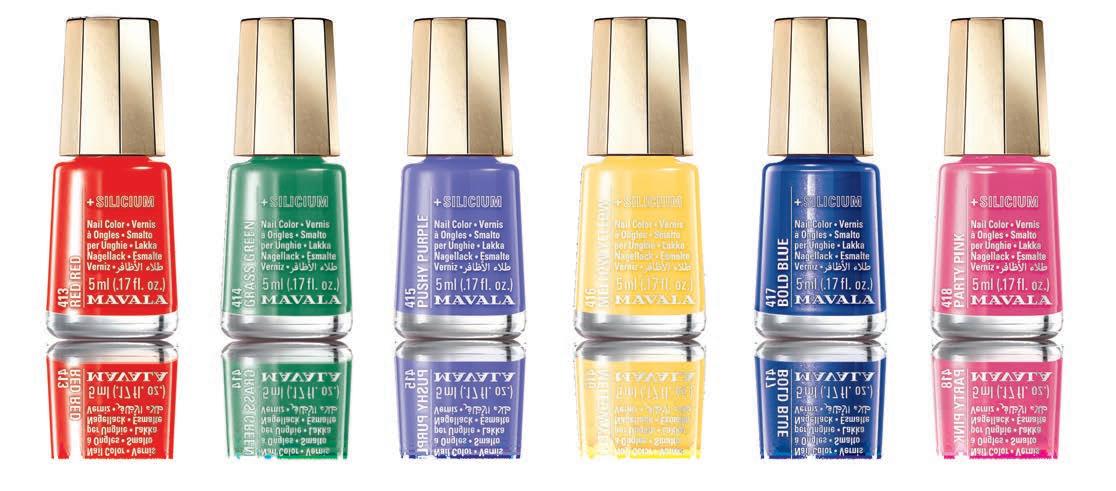

Fresh cuts, rich tones and captivating eye make-up are set to dominate beauty, providing an instant update to your look

If ever there was a time to take a risk with your hair, now is the moment. From jaw-grazing bobs to Mia Farrow’s iconic pixie cut, experimental hair is thriving. And it’s not just the girls embracing the bob renaissance, with hair similar to that worn by ’90s boy bands an increasingly common sight at fashion weeks. And while it’s great to see different looks in the mainstream, don’t choose a major hair transformation

without considering the maintenance involved and whether it flatters your features. In contrast, hair colour is taking a more conservative approach this season as many revert to their natural shade or replicate childhood hair colour, which tends to be lighter and brighter. The takeaway is that it’s never been more acceptable to leave your comfort zone and do something different with your hair shape.



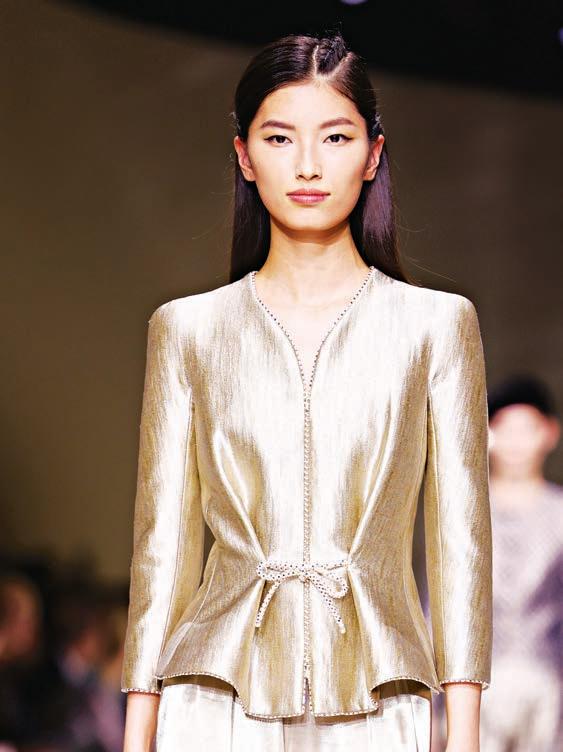
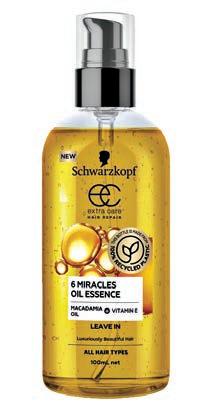
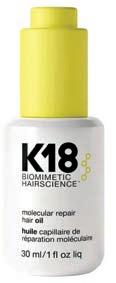
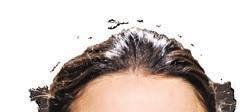
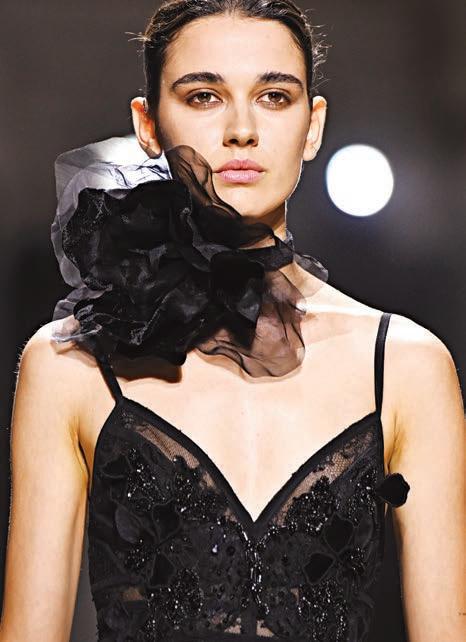




When Mocha Mousse was announced as Pantone’s Color of the Year, it paved the way for rich tones of brown, red and terracotta to enter the beauty mainstream. Better yet, the shade family makes the perfect autumnal colour palette. If you’re unsure how to introduce these rich hues into your beauty routine, a brick-red lip and ruddy-toned blush are a lethal combination.

Attention has shifted to the eyes, with smoky, diffused eye make-up surging in popularity. If you’re keen to try the trend, but worry it could look harsh, substitute black eyeliner and eyeshadow with bronze and chocolate shades. Your eyes will still pop, especially those with blue or green eyes, due to contrast theory. “Using complementing and contrasting shades are the easiest ways to create a striking make-up look,” hair and make-up artist Jenna Bellhouse says. WE LIKE Revlon ColorStay Lipliner in Wine, $20.99; Revlon Super Lustrous Lipstick Raisin, $23.99; L’Oréal Paris Colour Riche Volume Matte Lipstick 346 Rouge Determination, $20.99
It’s hard to avoid pastiness in the cooler months without a little helping hand, and the latest crop of product launches have you sorted. From the new fake tans from St.Tropez and Le Tan, to Palmer’s Shimmer Radiance Body Oil for the ultimate Y2K throwback, you’ll be glowing in no time.

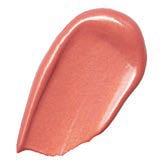




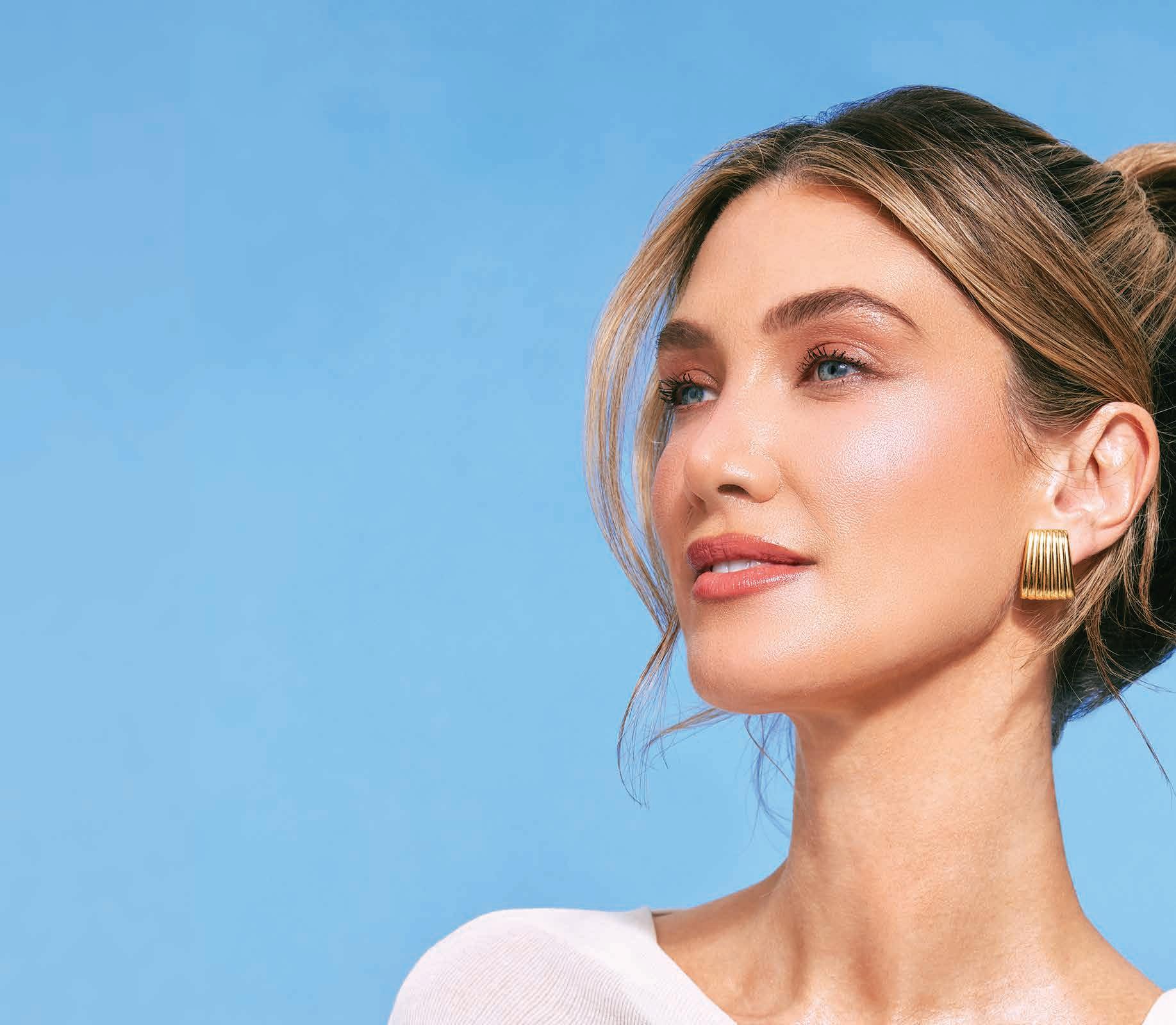


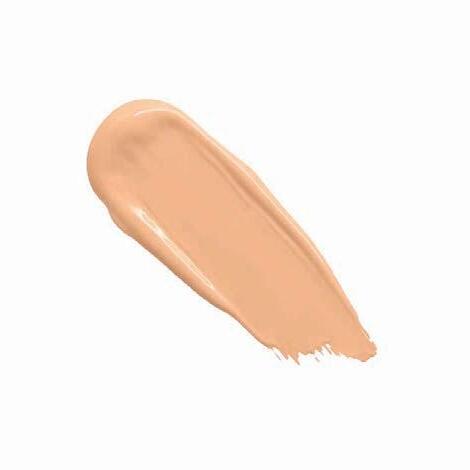


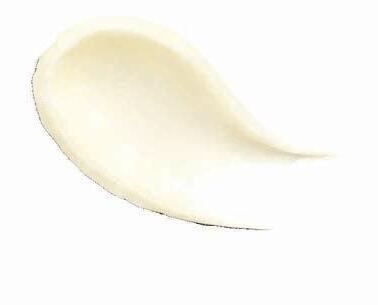
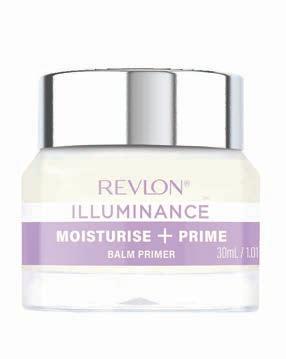






These product powerhouses have a cult following for a reason
Words Charlotte Brundrett
1
L’Oréal Paris Bright Reveal Tinted SPF50 Fluid Light 50ml, $32.99
If you’re looking for an all-in-one base product that features sun protection, light coverage and a glowy finish, the new tinted daily SPF fluid from L’Oréal Paris has you sorted. Its buildable formula is great for touch-ups, while its sleek, portable design is a must-have in your everyday make-up bag.
2Blistex Ultra Lip Balm SPF50+, $4.49

Despite the lips being highly sensitive to sunburn, very few Australians extend their sun protection to this area. But here's where the classic fave Blistex comes in handy, with its SPF lip balm helping to reduce sunburn and its associated risks of skin cancer and premature ageing.
Always read the label and follow the directions for use. Wear protective clothing, hats and eyewear when exposed to the sun. Prolonged

7Dermal Therapy Very Dry Face Cream 50g, $12.99
Best known for its viral lip balms, Aussie skincare brand Dermal
Therapy has many more hidden gems in its range. One example is its Very Dry Face Cream, which boasts an impressive ingredient list. Rich in urea, ceramides, hyaluronic acid and colloidal oatmeal, the intensively hydrating formula serves to treat dry, irritated skin from the outside in.
3Maybelline SuperStay Active Wear Concealer, $20.99
While it’s great to see more people embrace lightweight, sheer base make-up, those with skin concerns who prefer full coverage make-up may feel a little isolated. That’s where heavy-duty, long-lasting concealers come in handy. Simply go in with your favourite sheer base and follow it up with spot concealing on areas that require more coverage.

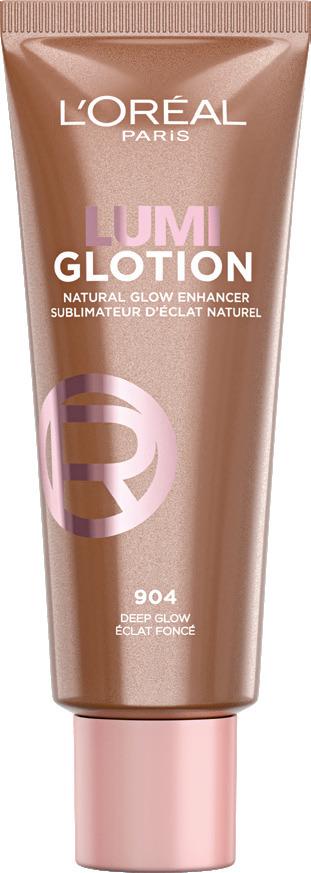
4

L’Oréal Paris Lumi Glotion, $33.99
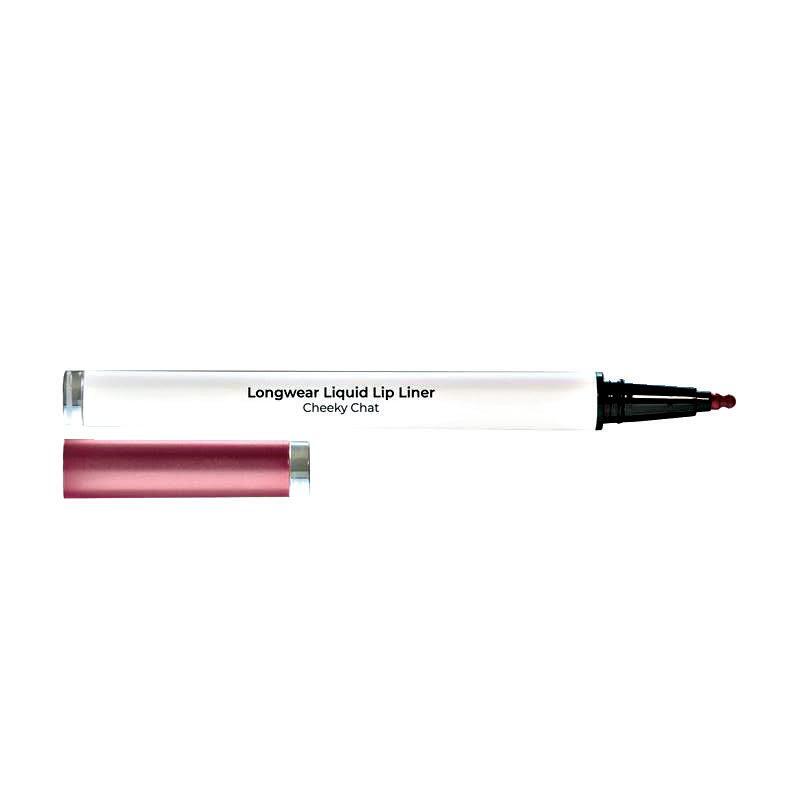
This multipurpose luminiser went viral on BeautyTok almost instantly, which is hardly surprising considering its bang-for-your-buck uses as a glowy primer, tinted moisturiser, liquid highlighter and all-over body luminiser.

6MCoBeauty Liquid Lip Liner in Cheeky Chat, $13.99
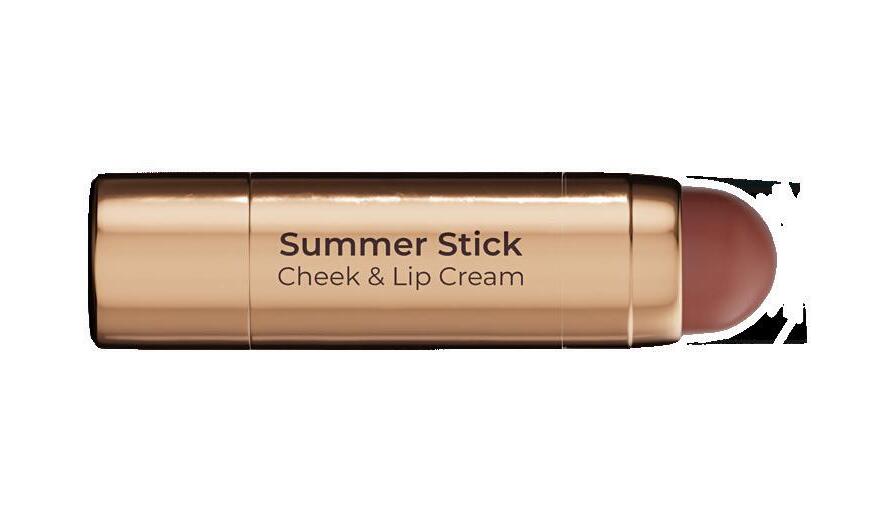
Reapplying your lip products over the course of the day can become tedious, but felt-tip liners are a game changer. This long-wear formula from MCoBeauty refuses to budge. If you opt for a shade close to your natural lip, then any patchiness from the product wearing off is far less noticeable.
5MCoBeauty Summer Stick
Cheek & Lip Cream in Mykonos, $16.99
Lip and cheek products tend to be the first areas of make-up that wear off, which is why this two-in-one cheek and lip cream stick is a great option for no-fuss touch-ups.

When fashion goes to the max with a powerful print, it’s best to keep make-up sheer, sleek and simple
1It’s great to see the rise of maximalism in fashion and beauty; however, the trend is rarely put together — for good reason. This is because when too much is happening at once with hair, make-up and your outfit, our eyes don’t know where to focus. Instead, I always recommend my clients keep their beauty simple, sheer and sleek when wearing anything loud. To achieve this, start with your favourite base make-up using a very light hand, blending until the product looks melted into the skin. For added dimension, use a deeper shade of your base make-up around the outer perimeter of the face, effectively but subtly contouring it.
2
For the eyes, we’re taking inspiration from leopard print and using brown, earthy tones — but the delivery is very minimal to avoid taking away from the print. Using a soft-brown eye pencil, line the upper and lower eyeline and with a fine-angled brush or your nails, drag the product past the end of the outer eye, creating a soft feline flick. Keeping with the brown theme, coat your lashes with a brown mascara to add further intensity to the eyes while keeping the make-up soft and diffused. For a monochromatic finish, add a brown glossy lip, but if you prefer a touch of colour, a plum glossy lip is a nice autumnal touch.


3
To complete the look, add a touch of highlighter over the high points of the face, including the browbone as well as the nose bridge, inner eye and cheekbones. If you’re wearing anything that shows off your collarbones and shoulders, extend the highlighter application to these areas, creating an inner glow. Add some bronzer to bring more colour and dimension back to the face. Lastly, use a clear brow gel to brush up your brows and set them in place. The product also doubles as a hair tool for taming any flyaways or stray baby hairs.
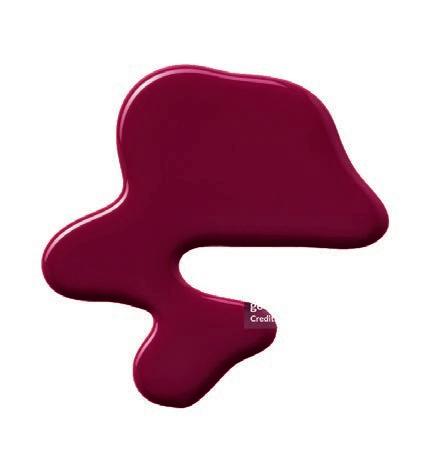

Pops of plum
Forget red nails — this season, it’s all about rich shades of plum, wine and burgundy. To tie everything together, match your nails to your lip shade of choice.
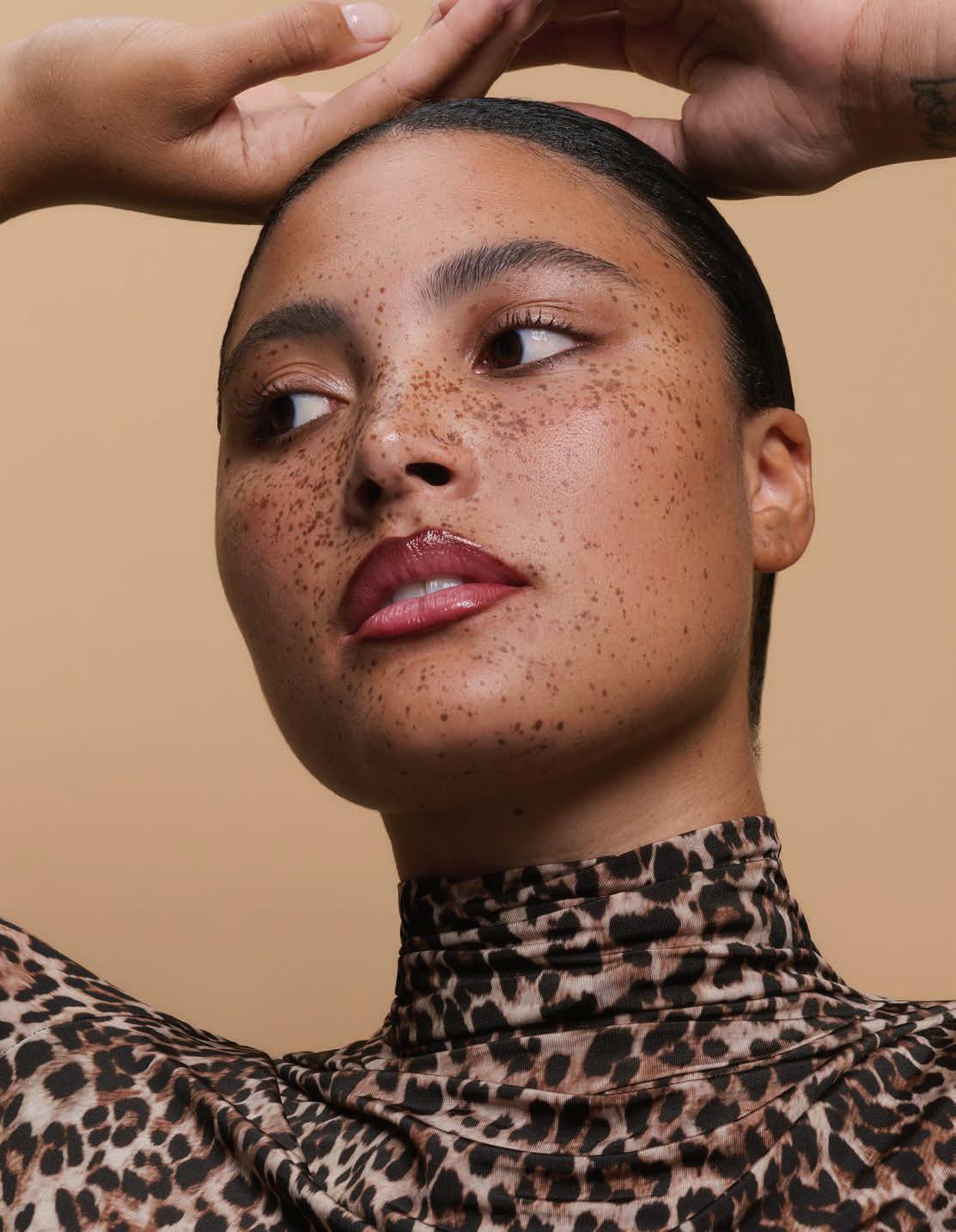


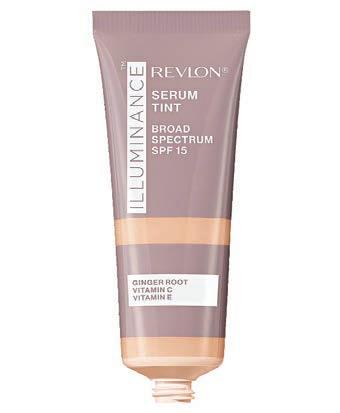

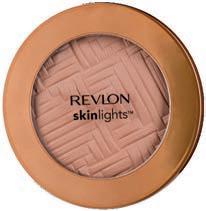








Maximalism is fi nally having its moment, with animal print leading the way to stand out from the pack
Compiled by Charlotte Brundrett

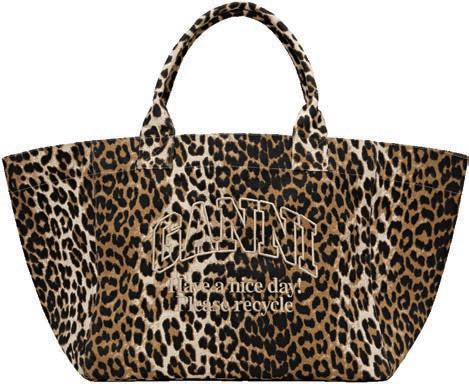

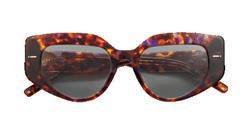


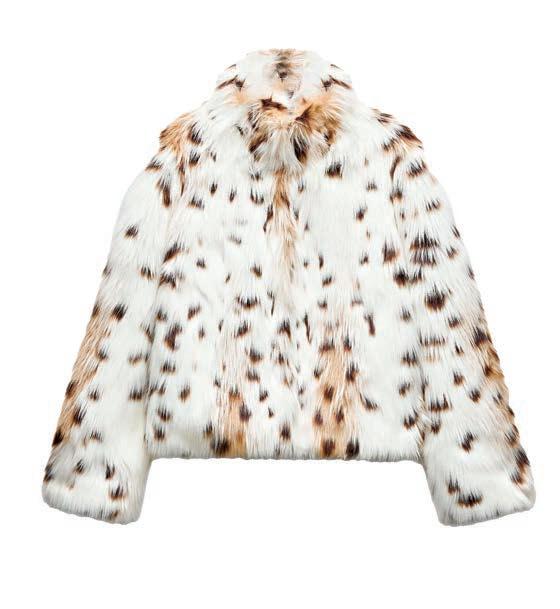


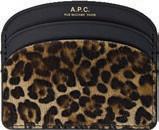

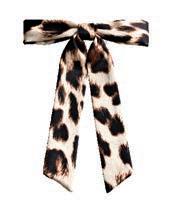
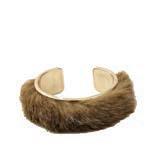
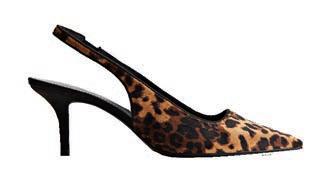

Single-breasted brown tiger stripe wool blend blazer, $475, stories.com; Mimco tortoiseshell sunglasses, $249, sunglasshut.com/au; Leopard print T-shirt, $49.95, mango.com; Pack of faux fur bracelets, $79.95, zara.com.au; Slingback heels, $49.99, hm.com/au; Leopard bow clip, $25.95, mango.com; A.P.C demi-lune card holder, $295, ssense.com/en-au; Faux fur jacket, $269, zara.com.au; Cleo wide leg jeans, $129.95, decjuba.com.au; Samba OG shoes, $220, adidas.com.au; Oversized leopard print canvas tote, $285, ganni.com/en-au; Covergirl Trublend Skin Enhancer Contour 110 Defined, $19.99; L’Oréal Paris Rouge Signature Plump Lip Gloss 414 I Escalate, $22.99; Essie Nail Polish No To-Do, $13.99
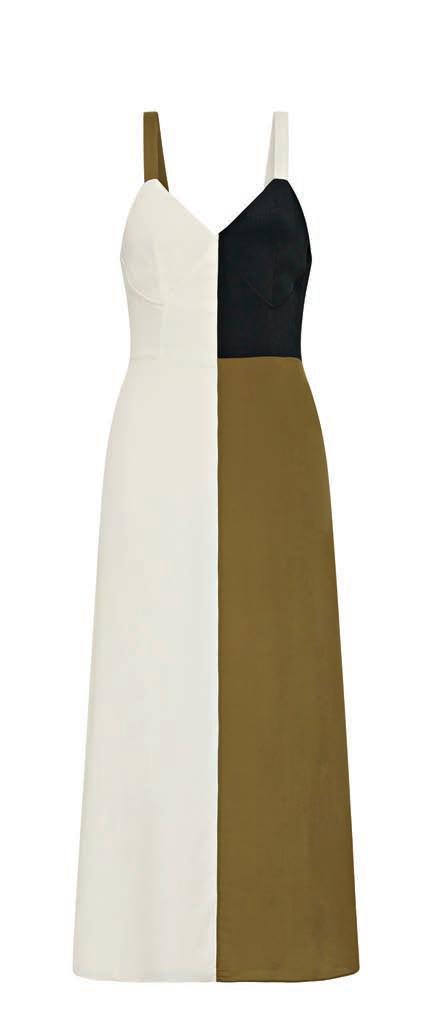

Who said basics had to be boring? Innovative textures and prints can enhance your look with ease
Compiled by Charlotte Brundrett




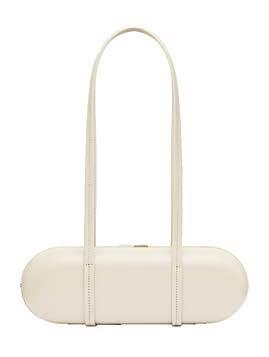
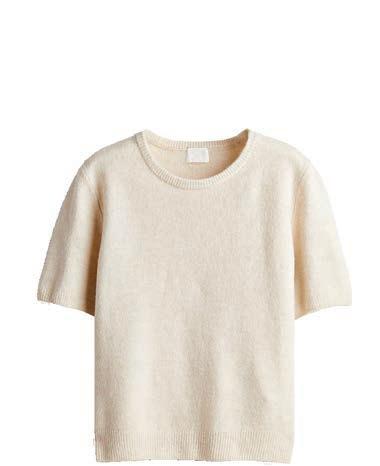

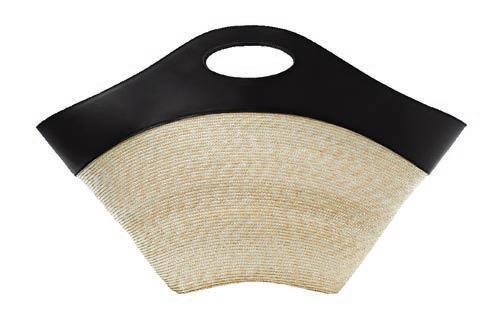
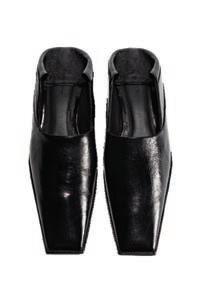



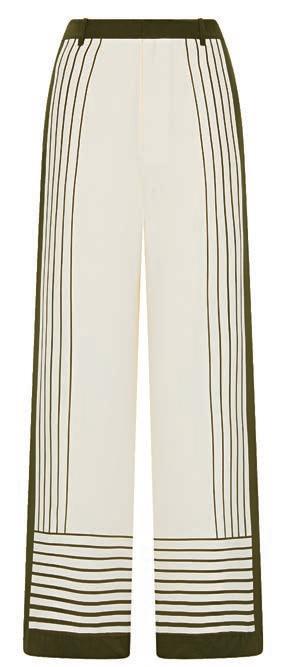
CLOCKWISE FROM TOP LEFT
The Block dress, $550, deering.world; Bassike x Local Supply 03 sunglasses, $250, bassike.com; Blaise Cocoon cotton shirt, $350, camillaandmarc.com; Set of earrings, $49.99, hm.com/au; 8 Other Reasons hair tie, $77.99, revolve.com; Capsule cream bag, $499, st-agni.com; Cashmere tee, $149, hm.com/au; Leilana tailored pants, $440, sirthelabel.com; Rimmel Scandaleyes Micro Eyeliner, $13.99; Yves Saint Laurent Myslf 100ml EDP, $159.99; Leather loafers, $199, hm.com/au; The Tour skirt, $320, deering.world; Market mini tote, $159, cos.com/en-au; The Icon watch silver, $434, heavenmayhem.com

Updating your wardrobe doesn’t require a complete overhaul. Instead, build an autumnal capsule containing classic designs and on-trend pieces that can be mixed and matched for maximum outfit rotation.
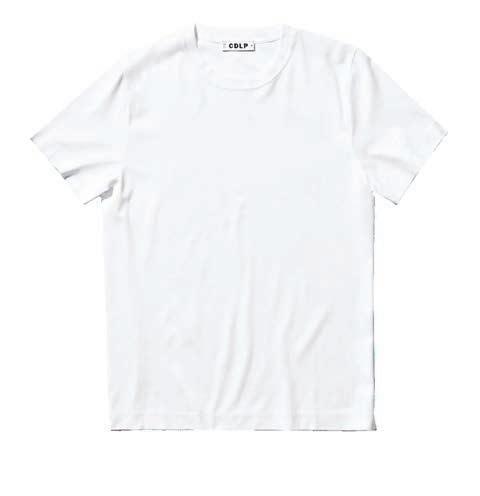


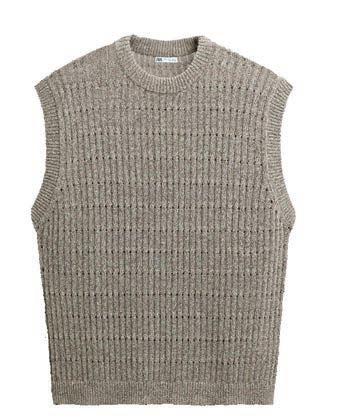


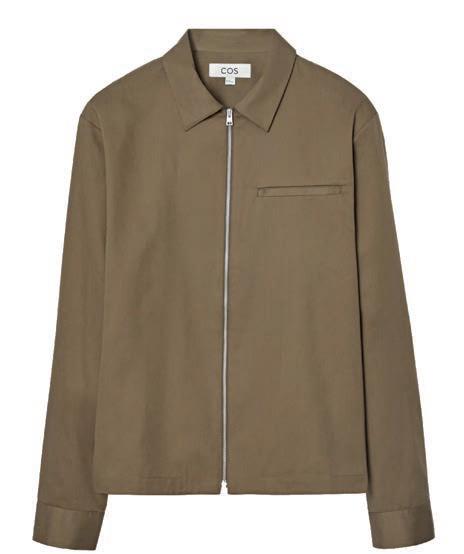
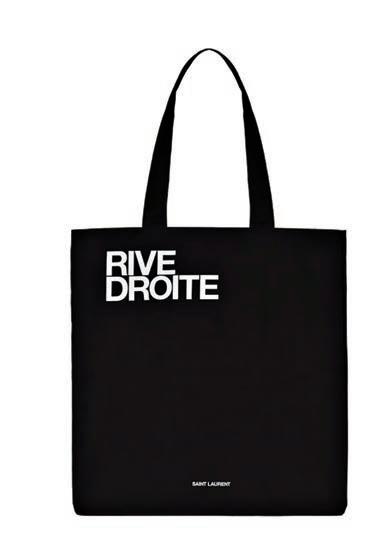
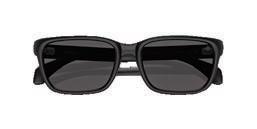


CLOCKWISE FROM TOP LEFT Embroidered knit shirt, $379, calibre.com.au; Zip-up twill overshirt, $159, cos.com/en-au; Moncler Slicka sunglasses, $404, sunglasshut.com/au; Tote bag, $125, ysl.com/en-au; Paisley print bandana, $35.95, zara.com.au; R.M.Williams boots, $699, theiconic.com.au; Smart ankle pants, $59.90, uniqlo.com; Nike Free Metcon 6 sneakers, $180, theiconic.com.au; Open knit vest, $79.95, zara.com.au; Natio For Men Oil Free Face Moisturiser 100g, $15.99; Midweight T-shirt, $152, cdlp.com; Three-pack rings, $24.99, hm.com/au
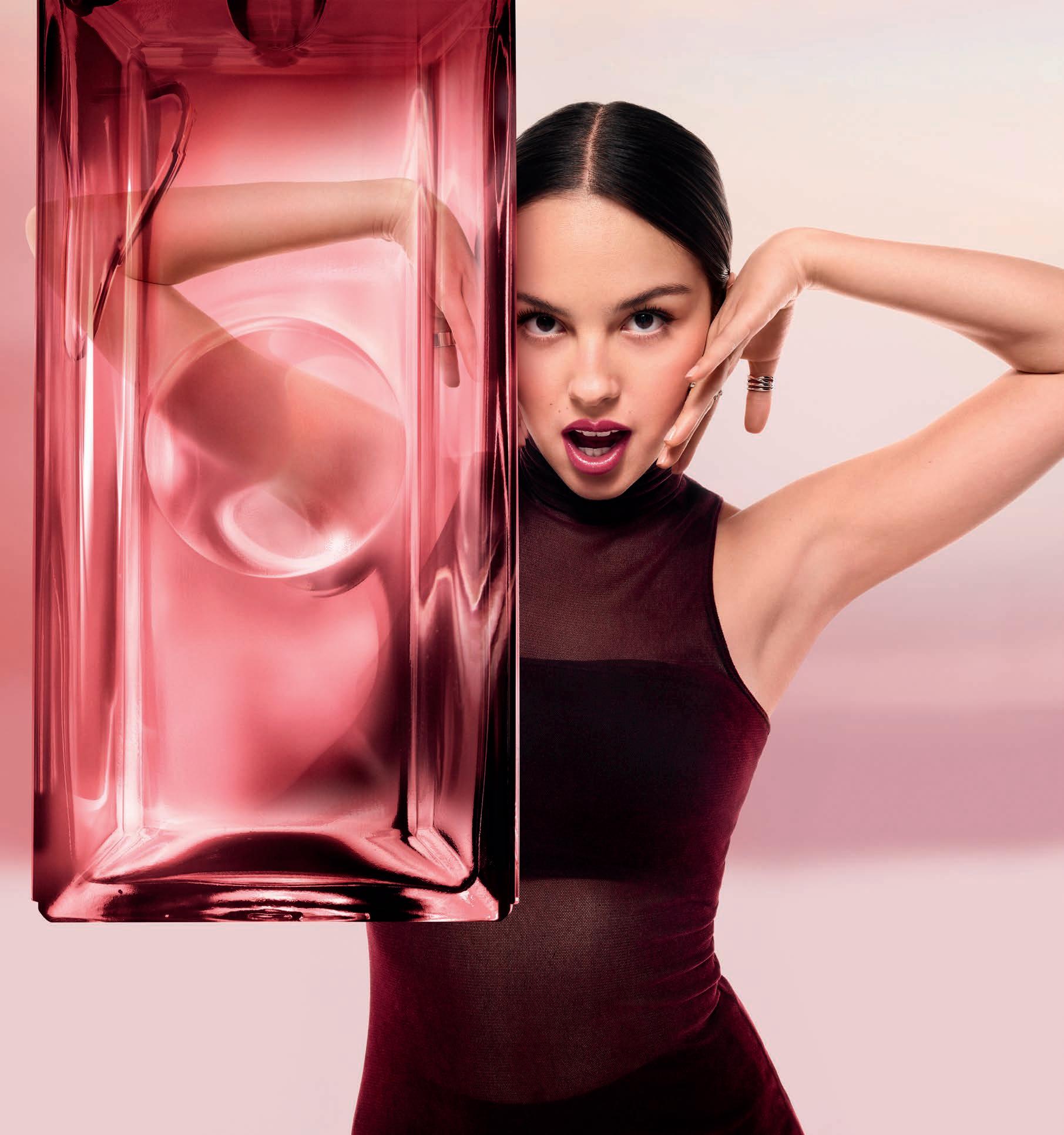
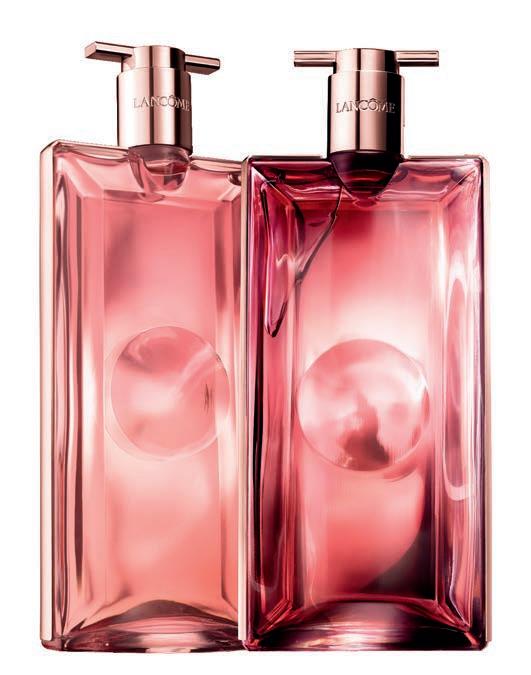
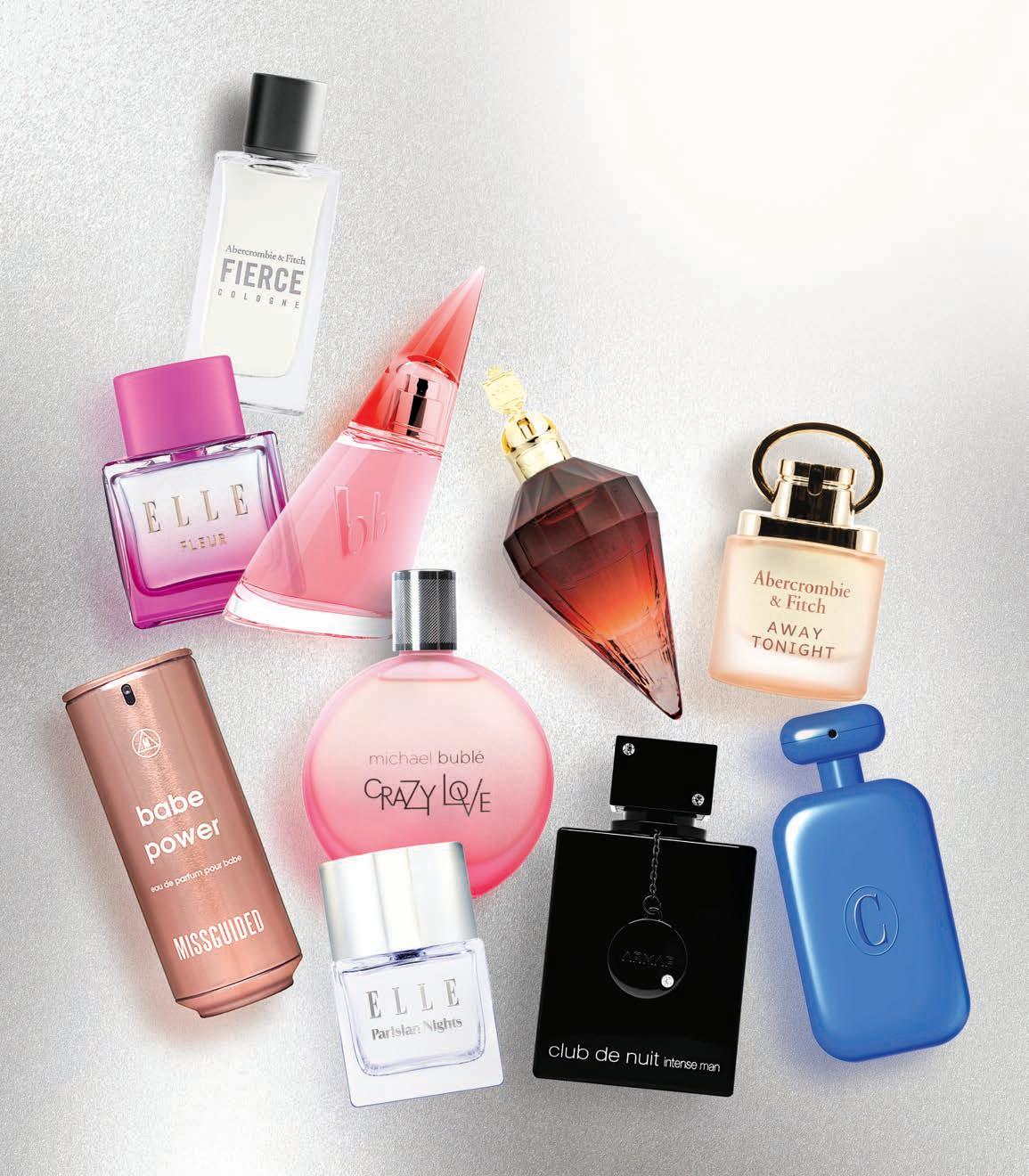
Indulge in a designer scent without a designer price with these savvy swaps




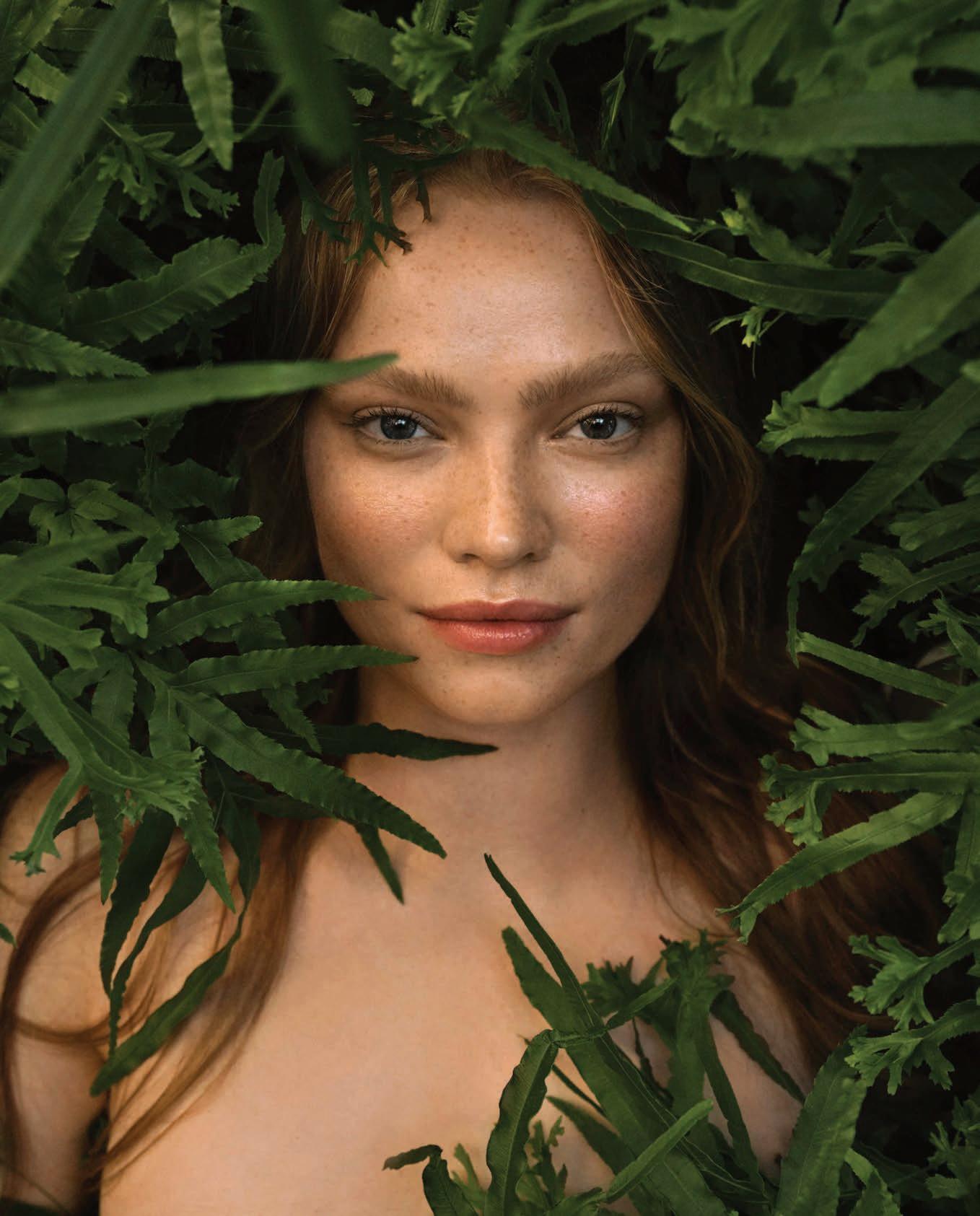

Words Charlotte Brundrett
Considered one of Australia’s pioneer beauty entrepreneurs, Carla Oates founded The Beauty Chef at a time when ingestible beauty was considered obscure. Sixteen years on, The Beauty Chef has become one of the world’s leading inner beauty brands.
No stranger to trailblazing, the 52-year-old business owner and mother of two has championed holistic health and beauty since her early teens, long before it was trendy or the gut-skin connection had scientific backing.
In fact, Carla’s own skin journey first sparked her interest in holistic health.
“I suffered from skin problems in my teens that really affected my confidence, so my mum (late magazine maven Carolyn Oates) took me to a naturopath who completely changed my diet,” Carla says.
After embracing a healthy lifestyle through gut-friendly nutrition, Carla’s perspective on skin health and supporting
overall vitality was forever changed. “From a very young age, I saw the connection between what you consume with your skin health and overall wellness,” she says.
Carla always had an inkling she might do something in the world of nutrition, but her career went in a completely different direction at first. Given her mother’s connection to the magazine industry, her love of fashion and a natural flair for writing, journalism seemed like the more obvious fit.
“I ended up in magazines, and I went on to study naturopathy later on. At one point I was studying while juggling a full-time job with two babies, and something had to give, so unfortunately I stopped my studies.”
Despite the roadblocks, Carla’s passion for a natural approach was unwavering. During her time as a beauty editor in her late 20s, she familiarised herself with the endless supply of beauty PR sent her way, including the ingredient lists.


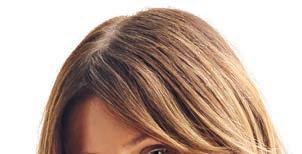

“I’ve always loved science, so I started researching what ingredients were being used and it left me feeling disillusioned with the state of the beauty industry at the time,” she says.
“While this was happening, I also had readers writing to me asking for skin advice, and it didn’t feel right recommending what was on the market, especially when I knew first hand that looking after your skin is an inside-out job.”
Wanting to preach what she was already practising, Carla’s changing relationship with beauty inspired her to incorporate natural, DIY skin remedies and recipes in her columns.
which became the blueprint forThe Beauty Chef.
“The feedback drove me to formulate my own products to target gut and skin health, which eventually evolved into The Beauty Chef’s debut powder called Glow Inner Beauty Powder,” Carla says.
Since its 2009 launch, Glow has remained one of The Beauty Chef’s bestsellers,
“The beauty industry has a long way to go when it comes to sustainability. At The Beauty Chef we are conscious of the quality and source of the ingredients and materials we use. We work closely with sustainability bodies, such as the Marine Stewardship Council and Australian Organic.” When she’s not
On the subject of family, Carla isn’t the only ambitious member in her household, with both Jeet, 27, and son Otis, 24 (who she shares with husband Davor Pavlovic), making a name for themselves away from the beauty industry.
“I SUFFERED FROM SKIN PROBLEMS … THAT REALLY AFFECTED MY CONFIDENCE.”
Not only was the new direction well-received, it led to Carla being approached by Penguin to publish her debut book, Feeding Your Skin, which was recently updated to celebrate its 20th anniversary.
The book put the focus on what Carla was truly passionate about; an interest further fortified when daughter Jeet experienced skin issues, leading Carla to reexamine the gut-skin connection just as she did in her teens.
Much like her mother, Jeet began embracing a balanced lifestyle that supports skin health and she saw an improvement.
It was during this time that Carla’s research discovered the nutritional benefits of fermented and probiotic-rich foods and it inspired her to create products that promote inner health and beauty through nutrition,

and the brand — now stocked at Chemist Warehouse — has expanded its range significantly.
“Changing the paradigm of the beauty industry to focus on inner beauty rather than only outer beauty hasn’t been easy,” Carla reflects.
“Back when I was a beauty journalist, I never gravitated to certain aspects of the industry. But nowadays, the diversity of beauty ranges is finally expanding and evolving.”
As The Beauty Chef approaches two decades on shelves, innovation and sustainability have always been at the forefront of Carla’s mind.
leading an inner beauty revolution, Carla unwinds by reconnecting with nature and spending time with loved ones.
“Walking is my daily meditation and it’s something I really value because that’s when I get a lot of my ideas; the activity itself stimulates the problem-solving part of your brain,” she says.
“I also think it’s really important to prioritise relationships with friends and family. There’s so many studies into the happiest, healthiest places in the world, and a running theme is the importance of community.”
“My kids grew up seeing me chase my passions, and the highs and lows that come with running my own business, while my husband also has an incredibly strong work ethic,” she says.
“It’s rubbed off on them from an early age, so they understand the importance of staying curious and pursuing what really interests them, even if that involves having to roll up their sleeves.
“Both Jeet and Otis are clever with their creativity. Otis (as one-half of popular music duo Royel Otis) is very talented and really consistent with his craft. Jeet is a creative powerhouse, working as a graphic designer and model. My kids inspire me every day and I’m always learning from them.”
As Carla reflects on her unconventional journey to becoming a beauty brand chief executive, she remains grounded to her original goal of helping empower people to be the happiest, healthiest versions of themselves.
“I had this unwavering vision for what I wanted to do and in the years since launching The Beauty Chef I haven’t strayed from that, which is something I’m really proud of,” she says.
“It’s so rewarding to be part of the revolution. I’ve been on this journey since I was 27, actively promoting a holistic view of beauty.
“The way I see it, beauty is wellness and wellness is beauty. It’s not just about looking good, but also feeling good.”
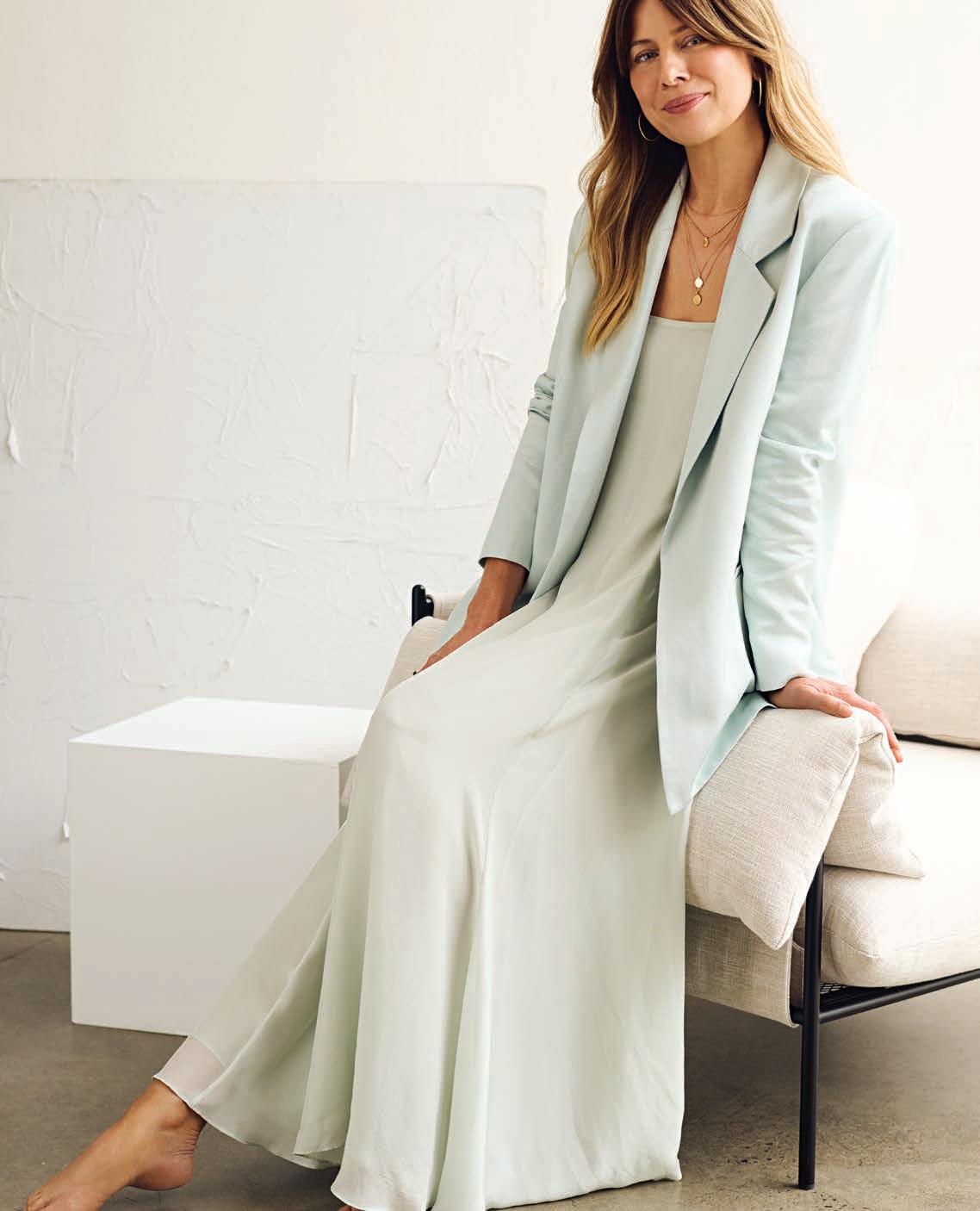


“FROM A VERY YOUNG AGE, I SAW THE CONNECTION BETWEEN WHAT YOU CONSUME WITH YOUR SKIN HEALTH.”


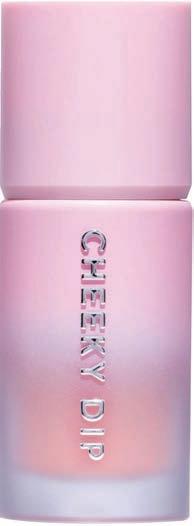

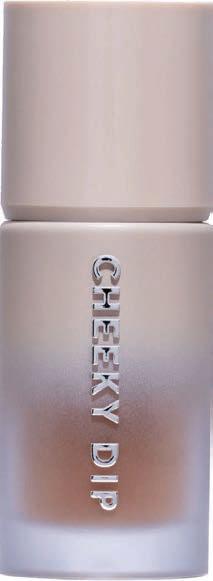

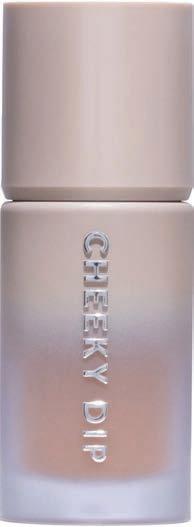
DIP, BLEND & DEFINE with W7’s Cheeky Dip Liquid Blusher or Bronzer!


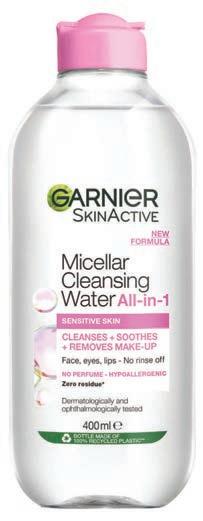


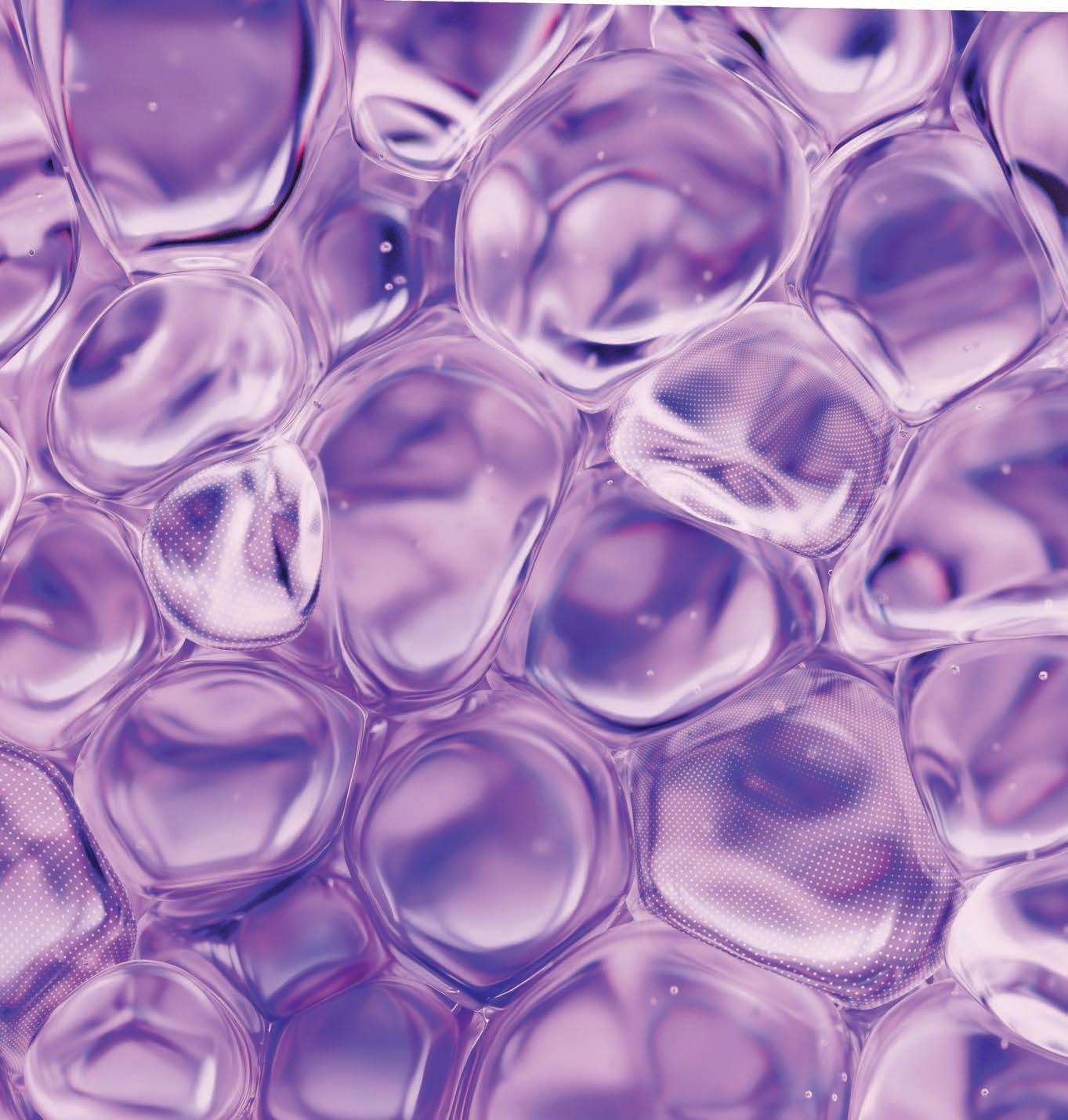

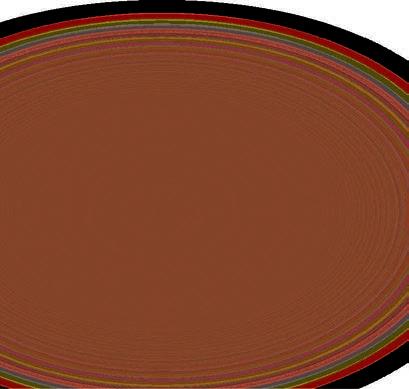



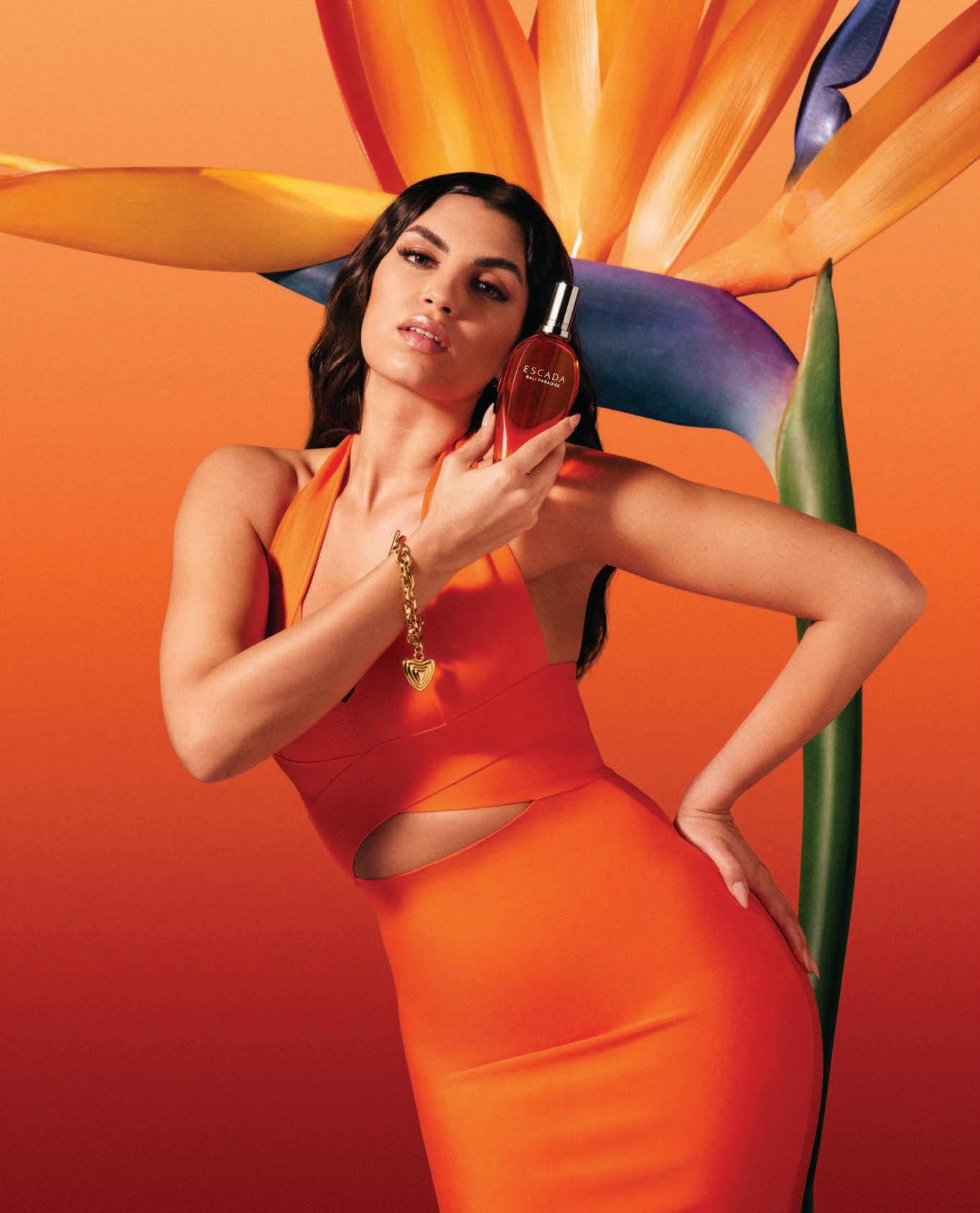
Triumphs and victories seem to come easily for some of us. How do they do it?
Words Joanna Hall
Some people appear to have the uncanny ability to turn every endeavour into a success.
Whether in business, art, innovation or life, their ventures shine, and it begs the question: What is their secret?
High-performance mindset coach and neuroscientist
Simone Boer says a mix of factors is involved.
“One is that success often creates a success mindset, in that achieving a goal strengthens the neuronal pathways that also increase confidence, motivation and the ability to set and achieve goals,” Simone says.
Testing the “success breeds success” theory is tricky.
“It is difficult to measure, as there are many interconnected factors that are important to the achievement of and perception of success,” says Simone, the author of Ultimate Brain Hacks
“It’s a complex mixture of mindset, adaptability, resilience, confidence, skills, networks, timing, perception of opportunity, goal setting
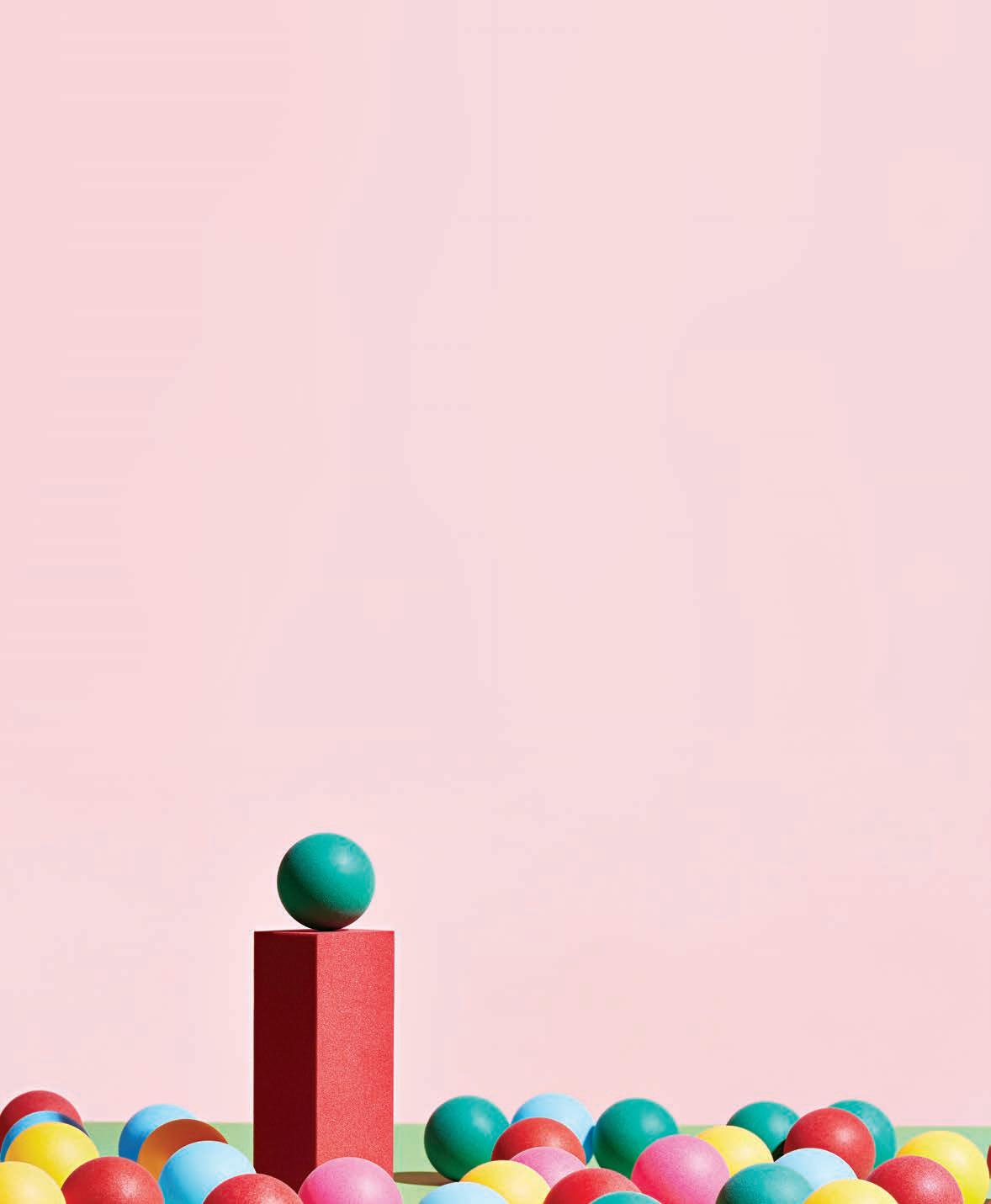
and even circumstance. And there is also an element of randomised luck involved.”
A 2014 study randomly awarded successes to study participants and found receiving a modest reward early on triggered a cascade of success for those participants.
In a 2022 study, researchers enlisted players to compete in a best-of-three contest. Results revealed players who won the first round enjoyed better performance later. But winning alone was not the cause — it was that they had more confidence.
“There is a momentum effect, and when people start to have successes, even if they are relatively minor, this builds confidence to be more likely to achieve the next success,” Simone says.
The “Matthew effect” is a term that describes how those who already have advantages, such as wealth, status or knowledge, tend to accumulate more, while those with fewer advantages often struggle to gain more.
“When we reach a goal, particularly with high social or financial rewards, our self-belief that we are successful is elevated,” says psychologist and coaching director Sarah Godfrey.
“Our confidence grows, which can be a signal to others that we are highly capable of accomplishing tasks. And this in return encourages others to support and reinforce the self-belief of being successful.
“This process can be more powerful than talent and skill alone.”
Simone notes failure doesn’t necessarily inhibit success.
“It’s how a person interprets, internalises and responds to the failure. A person’s mindset, resilience and adaptability is the key to being able to rebound from failure.”
A sense of accomplishment, better mood, more energy and motivation and a better outlook on life are all regarded as benefits of success.
“When a goal or success is achieved, the brain releases dopamine, a feel-good neurotransmitter,” Simone says. “This also strengthens the neural pathways related to goal setting and problem solving, making it more likely that we will repeat these same behaviours in the future.”
How do you cultivate success?
“The starting point is self-belief (and) to develop self-awareness and insight,” Sarah says.
“Understand ‘self stories’ and ‘life rules’ that may be blocks to taking on new challenges and opportunities that could lead to success in the future.”
Simone says the key is to start small and build momentum. “With each small win, you establish more confidence that enables you to take on more challenges and continue upward.”











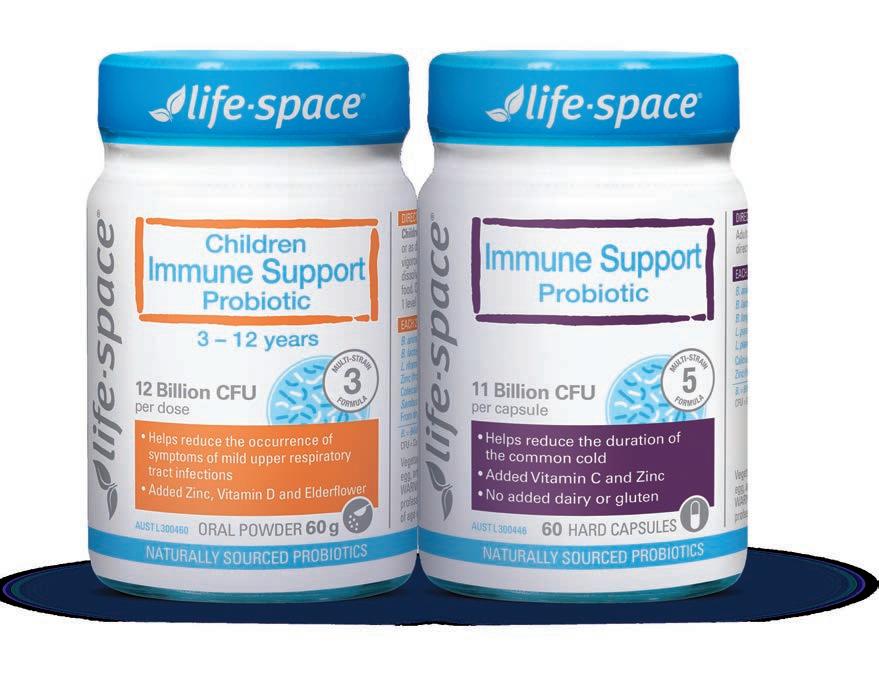

With the benefit of hindsight and some life experience, what words of wisdom would you share with your younger self? We asked five Australians what they wish they’d known back then …
Words Sarah Marinos
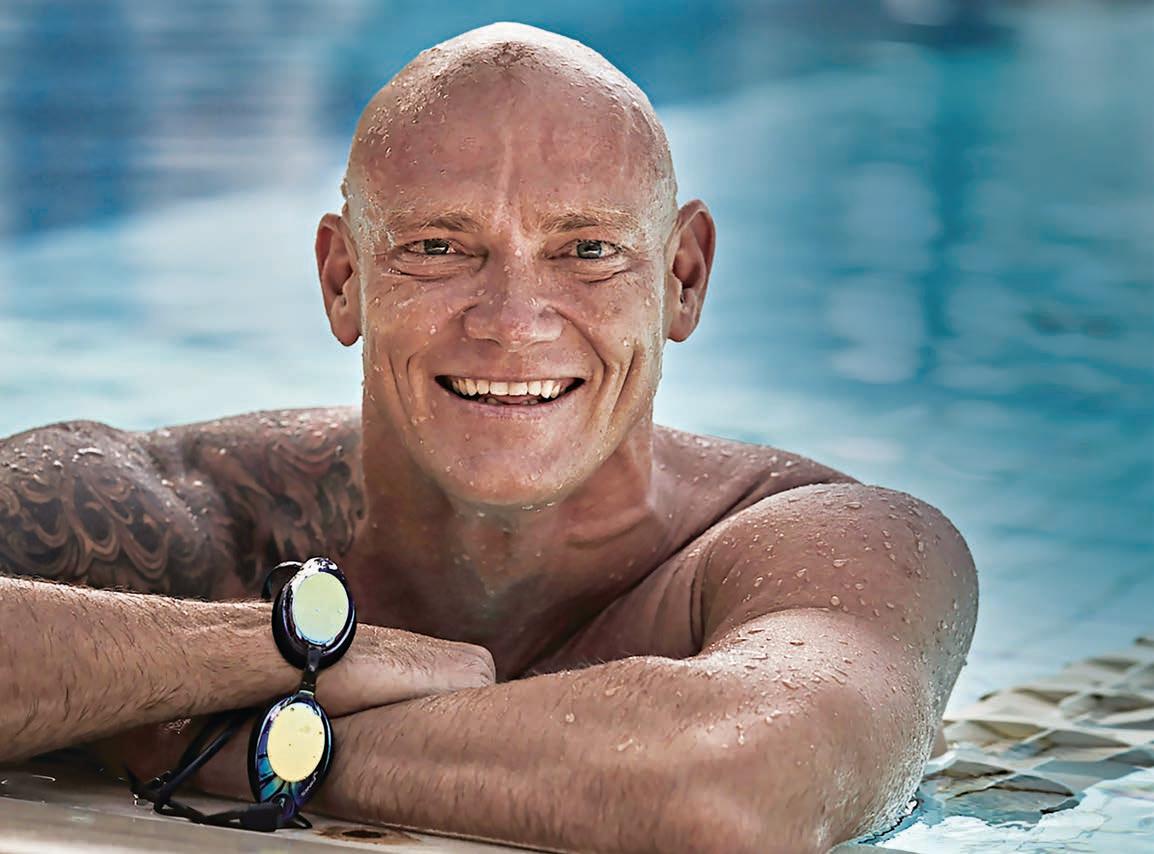
“I’D TELL MY YOUNGER SELF THAT HEALTH IS A PRIORITY AND TO SLOW DOWN AND BE MORE PRESENT.”
Micha Klim
BUSINESSMAN, AUTHOR, WELLNESS AMBASSADOR
Michael Klim, 47, made headlines as an Olympic gold medallist and a world champion in the pool. He is also a successful businessman, author, a wellness ambassador for Greencare and a campaigner for the Australian Red Cross Lifeblood donation program.
“After being diagnosed with a rare autoimmune disorder called chronic inflammatory demyelinating polyneuropathy, or CIDP, I’ve gained a new perspective on a lot of things.
When you’re in your teens and 20s, you live life believing you are invincible and that illness won’t ever affect you. I lived life at 100 miles an hour. I felt great and I was fit and I had this innate drive to see how far I could push my body and push the limits in my sport. I had a great team around me, too — the likes of Ian Thorpe, Grant Hackett and Susie O’Neill.
Now I wish I’d paid more attention to my health — those aches, pains and niggles. I’d tell my younger self that health is a priority and to slow down and be more present. When life is so fast-paced and you are always looking ahead to the next goal and the goal after that, you don’t enjoy life for what it is at that moment.
Because of my health and probably because of my maturity now, I count my blessings. I have a beautiful partner and kids and I live in a beautiful place — I’m mostly living in Bali but travel to Melbourne regularly for my treatment. I would tell my younger self to enjoy special moments and to appreciate the people around you. Enjoy life for what it is in the present.”
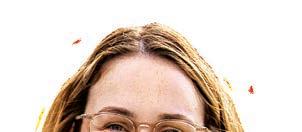

At 16, Madeleine Buchner, 32, founded Little Dreamers to support young carers. As a child supporting her brother and mother through illness, Madeleine understood the challenges. In 2017, she received a Queen’s Young Leaders Award from the late Queen Elizabeth at Buckingham Palace.

“My brother had a range of chronic health conditions and was in and out of hospital.
From the age of six, I knew how to pour his medicine, what to do when he had a seizure, how to check his breathing and how to call an ambulance.
Then when I was 14, Mum was diagnosed with breast cancer and my
know other children around me were having similar experiences. At nine, I started organising fundraising events for siblings of children who are unwell. Then I founded Little Dreamers because there wasn’t support or recognition of what young carers do and how the responsibilities impact their lifestyle and opportunities.
I’d tell my younger self it is OK to ask for help and to admit you can’t do it all. If you share what is going on in your life, then you can get support.”
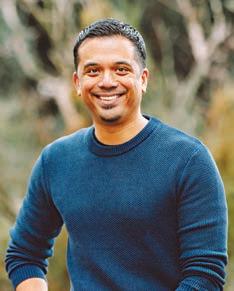
dad and I also cared for her.
Around that time, I realised how different my life was compared to other children at my school, but one in 10 children in Australia grow up as a young carer. There would have been other children at school with the same responsibilities as me, but nobody talked about it. It would have made such a difference to
Shaun Chandran, 44, from Perth, is the Australian Community Father of the Year 2024 and a psychologist with the Australian Childhood Foundation. He began the Belmont Dads Group to bring together fathers who support each other through parenthood. Shaun has a 10-yearold daughter, Syreeta, and a six-year-old son, Marley.
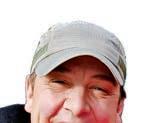

“If I could send a message back in time to my pre-dad self, I’d remind myself that when a child is born, a father is born, and it’s OK to not have all the answers. You grow into being a dad and every moment, mistake and success teaches you something about the person you are becoming.
I’d also tell my pre-dad self that fatherhood is so much richer and easier when you connect to a community. Why dad alone when we can dad together? Finding the people who lift you up and remind you that you’re not alone is one of the most important things you can do.
I’d let my younger self know that mistakes aren’t failures — they’re stepping stones. There will be times when you feel you’ve messed up but don’t try to be a perfect dad. Just show up, be present and lead with love. What kids need most is a dad who’s there, who cares and who’s willing to learn and grow alongside them.”
Samuel Johnson, 47, first gained recognition as an actor but for more than a decade his focus has been on leading Love Your Sister, the charity with a mission to ‘vanquish’ cancer. Samuel founded the charity with his cherished sister Connie, who died of breast cancer in 2017. This year, the grassroots organisation is on target to have raised $20 million for vital research.
“My advice to my younger self would be ‘go backwards to go forwards’. My approach to self-care when I was young was harm minimisation — I spent years trying to do less damage to myself. Now, I’ve worked out that the best way to take care of myself is to reinstitute things from my childhood that I enjoyed.
I was a happy young paperboy and initially had paper rounds in
(Melbourne’s) Black Rock. My last round was in St Kilda when I was 21, just before I got a role in The Secret Life of Us. I loved getting up early, whizzing along the roads on my bike. I’ve brought that back by becoming a postie in Tallarook (Victoria) and I live near a rail trail, so early in the morning or late at night I ride. I listen to my favourite tracks on my headphones and look at Mother Nature’s work.

Dr Melika Sheikh-Eldin, 71, fled from war in Eritrea and spent two years in a refugee camp in Sudan where she volunteered with international aid organisations. She later studied marine biology in Egypt and migrated to Melbourne in 1991. She completed a PhD and began working with AMES Australia in 2001, supporting other migrants to build a new life.
When I was young I liked photography, so I’ve bought a camera and take photos of what I see around me. I had binoculars as a kid, too, and I pull out those whenever I see birds overhead because I used to be a member of The Bird Watching Society. Essentially, I’m living like a kid and while my life has been a series of unending mistakes, I feel I’m finally getting the hang of it!”
“I was born in an agricultural village where my father was the manager of an Italian-owned cotton plantation and my mum was a teacher. She established the first girls’ school in western Eritrea and education was very important in my family. I finished high school and was studying medicine when the revolution started and we had to flee to a refugee camp.
I’d come from a middle-class family and in the camp, I realised life wasn’t just about looking after yourself.
It was crowded and life was hard but I remember everyone helping each other.
People stood for hours for a small ration of food but they were patient and shared what they had.
My advice to my younger self would be to be ambitious — but not over-ambitious. My dad used to say, ‘Don’t always look up, because you may fall’ and encouraged me to look out for people, be kind and considerate and to thank God for whatever you have.”
3 steps to wellness.
SCRUBS UP NICELY Polishing Body Cleanser. Salicylic Acid & Natural Sugar Crystals to gently buff, brighten and hydrate skin.
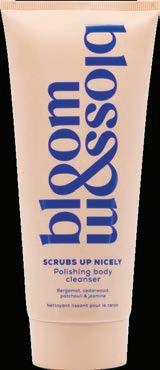
LOVELY JUBBLY
Bust Firming Gel. Co-enzyme Q10 & Quince-hydrogel to tone and firm your neck, decolletage and boobies!
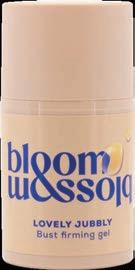
BOOTY GAINS Bum, Hips & Stomach Firming Cream. Cupuaçu Butter & Caffeine to help skin look sculpted, contoured, and firmer.
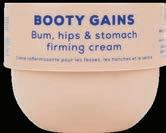
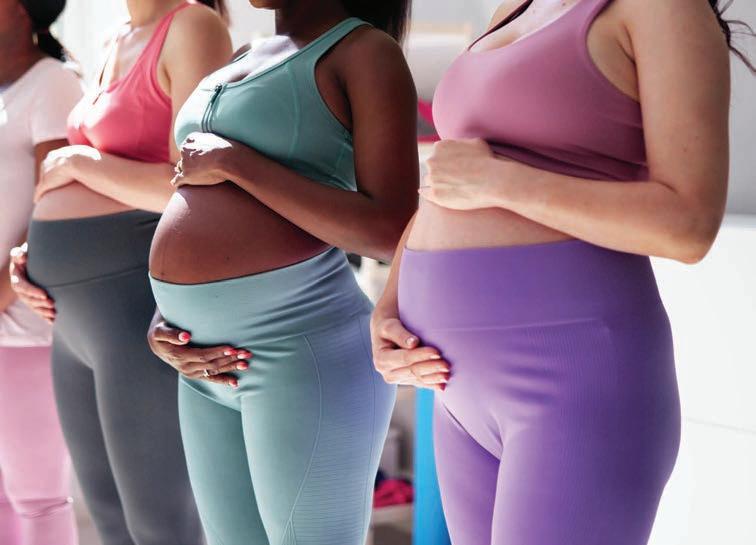

ALL NIGHT LONG
Calming Night Spray. Frankincense, Linden Blossom and Rose Water Flower creates a soothing scent for your bedtime routine.


With Argan Oil & Sweet Almond Oil. The appearance of your hips, thighs and, of course, baby bumps will all enjoy the attention of the toning ingredients.



a good night’s sleep is as easy as A to Zzz…
PYJAMARAMA Dry Body Oil. Fast-absorbing body oil with Evening Primrose Oil quickly nourishes, leaving no residue or sticky feeling. Perfect for bed!
Horsetail Leaf Extract a superhero ingredient that visibly fights stretch marks and smooths wrinkles whilst boosting the appearance of skin firmness.


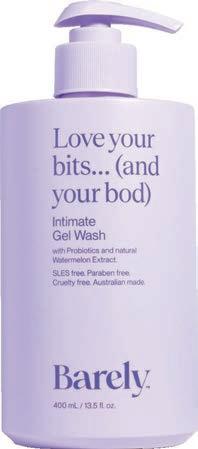

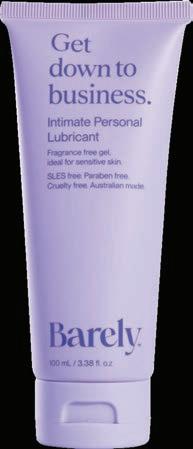




Cyberbullying of young people is rampant and can have devastating consequences. Here is some advice for parents on what to do
Words Karen Fittall
For Maggie Ciobanu’s daughter Eva, the cyberbullying began when she was just 12 years old.
“We’d landed home from an overseas holiday and as soon as Eva switched on her phone I saw this look of pure terror on her face,” Maggie recalls.
“Kids in her class, many who I knew, had created a Snapchat group called Kick Eva, which they had added Eva to as well.
“The messages just kept pinging, body shaming her and calling her fat. I jumped on and tried asking them to stop, and the profanities they sent back, even knowing I was an adult and Eva’s mum, were astounding.”
Maggie took screenshots and approached the school for help, but the cyberbullying continued in waves for the next three years.
“Eva became very isolated at one point and developed an eating disorder. We needed professional help to rebuild her self-esteem.”
Research suggests that kids in Australia are among the most bullied in the world.
And statistics released late last year about cyberbullying are nothing short of alarming.
Research by the University of the Sunshine Coast revealed 98 per cent of girls aged 14 to 19 who were surveyed had been cyberbullied. For 62 per cent, it was specifically about their appearance.
Virtually all of the appearance-related cyberbullying victims expressed a desire to change their appearance as a result, with researchers flagging this can lead to harmful behaviours such as extreme dieting and excessive exercise.
Any type of bullying can be profoundly damaging for a child or young person, but cyberbullying tends to amplify the reach of the harm, says clinical psychologist Dr Charlotte Keating.
“For example, a young person can repeatedly read what’s been said over and over if it’s in a direct message or a comment on a post and that can really compound the negative experience,” says Dr Keating, an advisory board member of Dolly’s Dream, which focuses on addressing the impact of bullying, anxiety, depression and youth suicide.
There are many pathways for
cyberbullying to occur, she adds.
“Where there is a social element to the platform being used, there’s potential for it to be used in the context of cyberbullying. It could be derogatory ways of speaking to or about someone in a group chat, or it could be being removed from the group chat without explanation.
“It could be rumours being started on a gaming platform or creating fake accounts on social media to post nasty comments.
“As the years have progressed, the ways in which it’s possible for bullying to occur online have become more and more sophisticated.”



Dr Keating says young people are often reluctant to disclose that they are being bullied.
“So it’s really important for parents to be on the lookout for tell-tale signs,” she says.
“That could be changes in their behaviour or in their emotions, or even in the way they interact online or behave around their devices.”
She also suggests paying attention to whether their confidence or engagement levels with things they typically enjoy have shifted.
“And then try to open the door to the conversation. Ideally, families may have laid the foundation for this in earlier years by talking about how common bullying is and asking whether any of their friends have experienced it and what that was like for them.
“But another way of doing it can be watching a movie or show together, where these themes are explored. This can provide opportunities to discuss what’s happening on screen and ask more direct questions about what they may be experiencing if you’re worried something’s going on.”
She adds that if you establish they have been bullied, it’s important to talk calmly about their experience, which can often be “quite complicated”.
“Importantly, you want to let them know they’re not going to be in trouble for anything. It’s just about seeking to understand what their experience has been.”
“TRY TO OPEN THE DOOR TO THE CONVERSATION. IDEALLY, FAMILIES MAY HAVE LAID THE FOUNDATION FOR THIS IN EARLIER YEARS BY TALKING ABOUT HOW COMMON BULLYING IS AND ASKING WHETHER ANY OF THEIR FRIENDS HAVE EXPERIENCED IT AND WHAT THAT WAS LIKE FOR THEM.”
CLINICAL PSYCHOLOGIST
It’s vital to avoid threatening to take away a device if you discover your child is being cyberbullied, says Alex Merton-McCann, who is global cyber security firm McAfee’s cyber safety ambassador for Australia and New Zealand.
“All that does is risk them not coming to you in future,” Alex explains.
“What I would advise is saving a copy of the bullying content or interactions by taking screenshots and then helping your child change the settings on their device to block the sender or delete them from their accounts.
“If the bullying continues online and there’s some common ground involved, for example, a school or sports club, approach them for help.”
If you need the cyberbullying material removed, you can also report it to the social media platform, gaming site or app that was used.
“And if that doesn’t prove effective, eSafety is a wonderful resource and may be able to help,” Alex says.
Dr Keating says doing what you can so your child doesn’t feel entirely defined by difficult and damaging connections online is crucial.
“If a young person has experienced bullying, hopefully what they have at home is a family that’s nurturing and warm and a place that they feel genuinely safe. We know that’s a protective factor in life.
“And what you also want to try and create for them is places or groups, whether it’s with family or through extracurricular activities,
“THE MESSAGES JUST KEPT PINGING, BODY SHAMING HER AND CALLING HER FAT. I JUMPED ON AND TRIED ASKING THEM TO STOP AND THE PROFANITIES THEY SENT BACK, EVEN KNOWING I WAS AN ADULT AND EVA’S MUM, WERE ASTOUNDING.” Ma ie Ciobanu
where they get to experience a sense of connection and of feeling valued and worthwhile, particularly considering the teenage years are such a sensitive developmental time in life where we’re often questioning who likes and accepts us.”
Dr Keating adds that if you notice a sustained change in your child’s behaviour or emotions — or both — for a two-week period and you are concerned or know they are being bullied, do not hesitate to seek extra support from a professional.
“If they are being bullied, the potential ramifications of waiting can be devastating in both the short and the longterm. For young people, the legacy of bullying can impact them academically, socially and even in terms of their adult opportunities.”
A range of support services is also available for kids, teens and young adults at Kids Helpline.
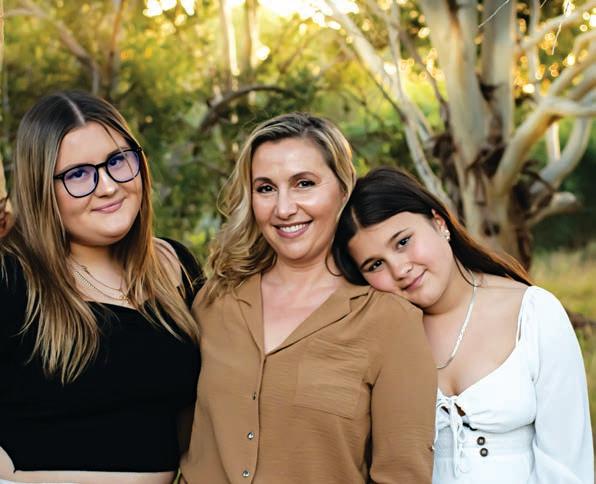
Maggie Ciobanu with daughters Eva, left, who completed year 12 last year, and Mia.
According to research by McAfee, most cyberbullying among young people does happen on social media, but group chats and online gaming are not far behind.
So will Australia’s new law (to come into effect by December) that bans children from certain social media until they are aged 16 curb cyberbullying?
“I love the fact that we’re one of the few countries in the world that’s talking about this,” Alex says, “but I am concerned people will think it’s going to be a silver bullet when, in fact, there are so many layers to this, including that so much cyberbullying occurs on platforms other than social media.”
For her part, Maggie is passionate about encouraging kids of all ages to develop and use critical thinking skills when it comes to their behaviour online — so much so, she created an app for the cause.
“Yoochooz can help prevent cyberbullying by empowering kids to stop, think and reflect before they hit send on a message that the app has identified as being harmful by picking up on keywords,” says Maggie, who launched the app in early 2023.
“It’s not only designed to educate kids about what’s wrong with their message and how it could hurt or harm someone, it also alerts parents if their child decides to send it anyway, providing an opportunity to have that important conversation about online behaviour.”
FURTHER HELP
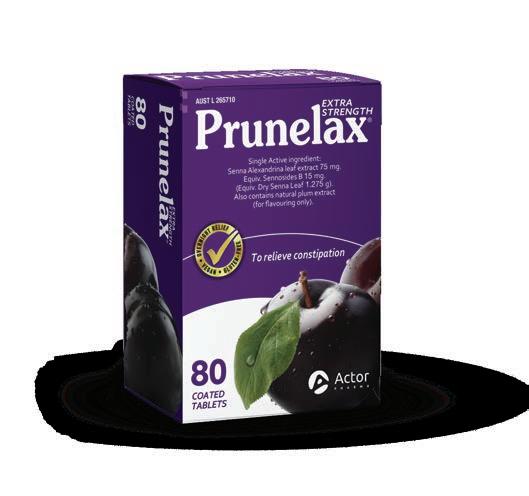
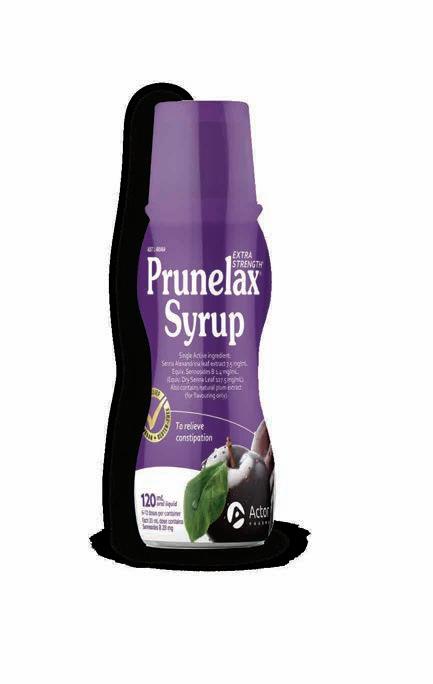

Words Jacqui Felgate
Aiva has been a competitive go-kart racer since age six.
Now the 17-year-old selfconfessed adrenaline junkie from Melbourne will be driving in the F1 Academy in cars that can reach speeds of 230km/h. Launched in 2023 by Formula 1 to develop young female drivers and ready them for higher levels of motorsport, the academy provides top-tier training, funding and competition in the hope of propelling female drivers into Formula 1. Aiva hopes to become the first female F1 driver of the modern era, inspiring the next generation of women motorsport drivers.
Driving is in her family’s blood.
“My mum’s dad owned a kart shop and that’s how my mum got into karting. Mum (Barbara)
gave it up when she had my brother (James) and me, but when I was about six and my brother was three she got back into the sport. I instantly wanted to jump into the kart and I just fell in love with it. My dad (Adam) was the mechanic for my mum since she was 15, and he was the mechanic to all three of us at one stage.”
Aiva moved to the UK with her family in 2024 to further her racing dreams.
“I was accepted into the Alpine Rac(H)er Academy in late 2023. It was an amazing opportunity, but it meant moving to the other side of the world. It was a huge sacrifice for our family and it’s been challenging at times. It’s brought our family closer


together — in particular my brother and I. He’s a racer, too (in the Mercedes F1 junior program) and we support each other with our racing and training.”
Aiva knew from the moment she first sat behind the wheel of a go-kart that she wanted to be a competitive driver.
“It’s hard to explain but there’s just a feeling when you drive. There’s total clarity of mind — of course it’s a team sport but when you’re in the car it’s only you out there and whether you end up on the podium is down to you.”
The sport’s physical side is challenging. “I’m in the gym every day, sometimes twice a day,

because the physical training is vital to success. I work with a trainer doing weight training five times a week and cardio every single day. To be successful as a driver there’s skill and strategy but you need to be super fit. When the car is going at 230km/h I’m burning upwards of 500 calories in 30 minutes.”
Taking her place in the F1 Academy, Aiva joins other Aussie drivers Oscar Piastri and Jack Doohan in a line-up punching above their weight.
“The Aussies kind of stay close overseas. I’ve known Jack for years and seeing these two
Aussie boys at the top level of motorsport, it’s pretty amazing.
When you think about the small Australian population compared to the number of people racing in Europe, it’s just insane what we’re achieving.”
She believes more women will enter the sport in the future.
“When I was a kid, the only female I knew who was racing was my mum. But now the F1 Academy means girls like me can access incredible opportunities to showcase our skills and give us seat time. It’s opened up little girls’ eyes and shown them

how their dreams can become a reality. The F1 Academy has given us the belief that we can get there. If we get a female in F1, it is going to grow even more. Now we have the backing and support to reach the top — and the partners that are part of it are pretty awesome, too.”
Until the time a female driver takes to the F1 grid, this determined teen is already living her dream and doing everything she can to succeed.
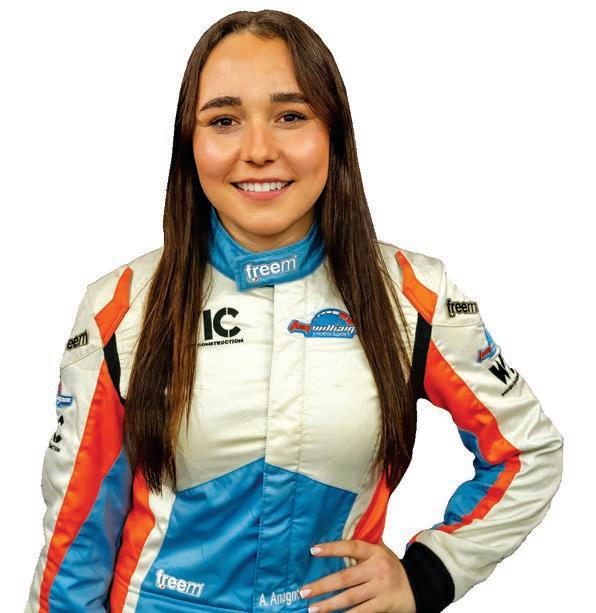
“At this level, motorsport isn’t something you can just do on the side. I live and breathe motorsport. To be successful in the sport, it has to be your top priority.”
AIVA ANAGNOSTIADIS



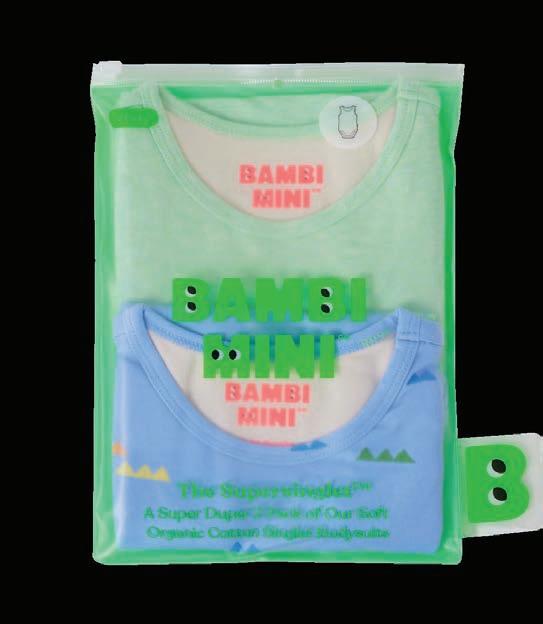

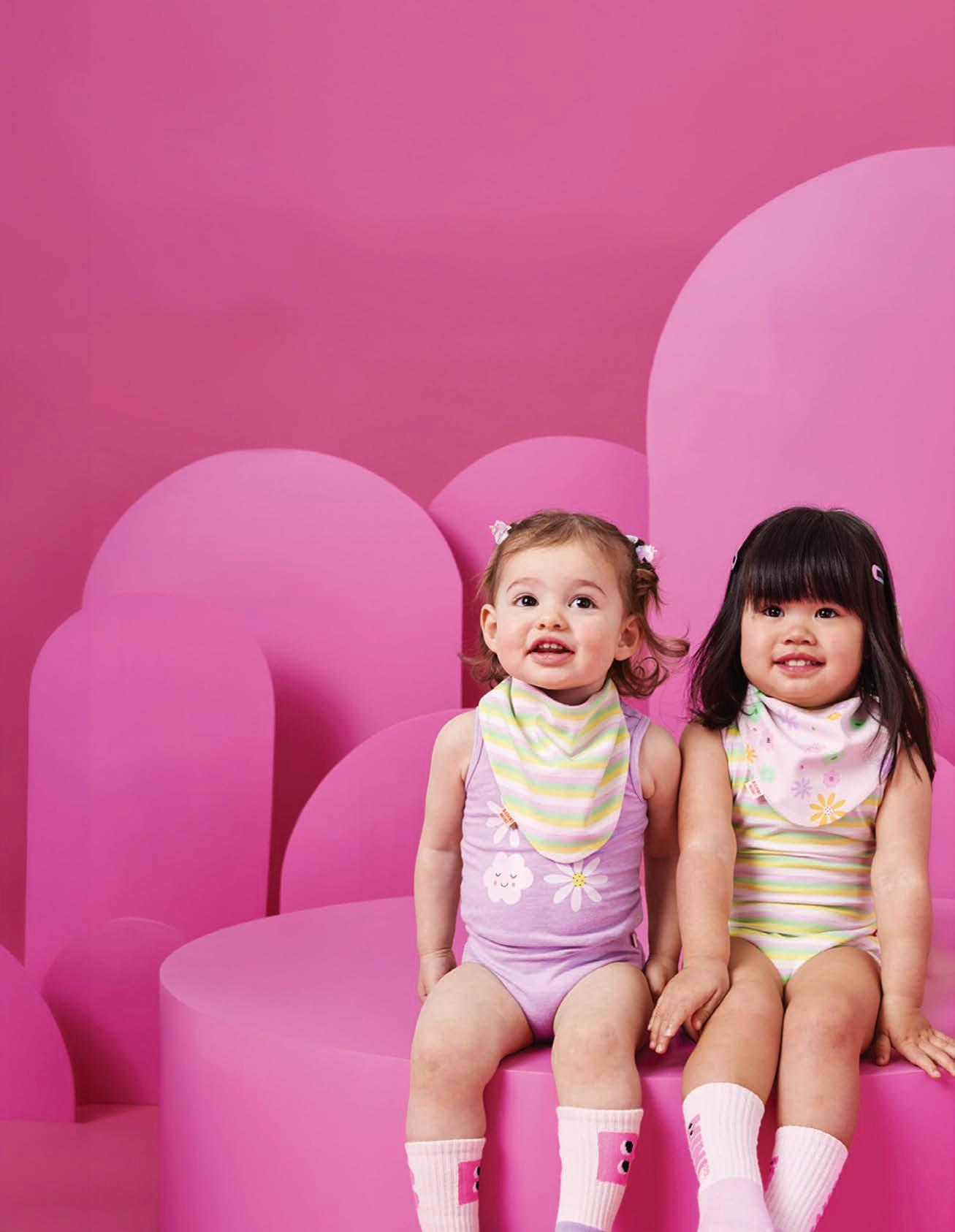


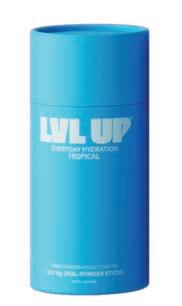

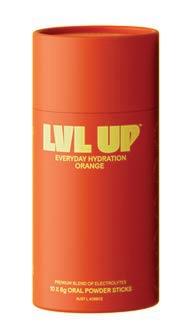
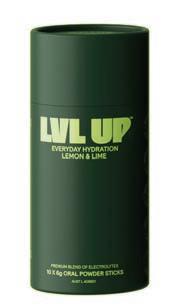
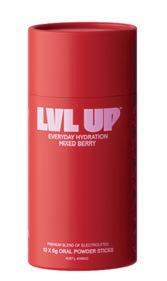
If pressure for perfect sleep is derailing your peaceful night, calm the nocturnal noise with these expert strategies
If hacking and tracking your sleep leaves you more exhausted than energised, add these relaxing expert tips to your toolkit
Words Alex Davies
FWords Alex Davies
rom weird and wonderful hacks to trailblazing tech, sleeping more soundly has become the ultimate wellbeing pursuit.
More than a third of us track our shut-eye using apps or devices, reveals ResMed’s global 2024 Sleep Survey, while forecasters put the value of the world sleep market at about $170 billion by 2032.
Ready for the not-so-dreamy catch?
Experts worry that striving for perfect sleep — a social phenomenon known as “orthosomnia” — can actually be counterproductive to a peaceful night. “When people become overly fixated on sleep or optimising every aspect of it, this can create worry and anxiety,
which then leads to trouble sleeping,” says Dr MariaElena Lukeides, clinical psychologist and founder of The Wellness Fountain. “It’s almost like performance anxiety.”

So, how can you dial down the pressure and find a happy, healthy mindset come bedtime? We ask those in the nocturnal know. Doonas at the ready …
Tune into your headspace
There’s a tipping point between respecting sleep and letting it live rent-free in your mind.
“Identifying the potential signs or behaviours that we might need to ease the self-pressure is the first step towards making changes,” Dr Lukeides says.
Do you obsessively worry about your sleep score and tracking data, or keep such a strict schedule that it crowds out socialising and other activities? “People may also become preoccupied with clock watching, constantly monitoring how much time is left to ‘capitalise’ on sleep,” Dr Lukeides says.
Clinical psychologist Dr Giselle Withers, spokeswoman for the Sleep Health Foundation and founder of A Mindful Way online sleep program, adds: “Try to avoid the idea of having a ‘good’ or ‘bad’ night’s sleep, as the less judgment we have, the less it impacts on our emotions like anxiety or frustration.”
Ultimately, it’s about reflecting on what you might need, which could be simply stepping back to reset or even seeking professional support.
Be flexible with bedtime rituals
Whether it’s turning into a prune in the tub, reading with a mug of (decaf) tea or stretching to your favourite podcast, winding down can encourage your body to prepare for Zs. But what’s also helpful? Allowing yourself flexibility and not holding your pre-bed rituals too tightly.
Dr Lukeides says: “The goal is simplicity and overall consistency, not perfectionism

or rigid adherence that will stress you out if you can’t follow your routine one night.”
Crucial to this is building confidence that sleep isn’t dependent on a concrete regimen. “It’s about understanding why we do these things (to reduce stimulation before bed) rather than being fixed to certain behaviours,” Dr Withers says.
See the bigger picture
One for the tech-loving trackers — if you’re tangled in the nitty gritty of last night’s data, zoom out. “I really encourage people to look at sleep patterns across two weeks, which moves you away from that night-to-night evaluation,” Dr Withers says.
“It can also help you to see that things often balance out across the week to make up for nights you have not slept as well.”
You could also embrace a pen-and-paper sleep diary — a chart with boxes to represent hours across the night for two weeks. Each morning, shade the times you think you’ve slept (by the half hour or so) and leave blank the ones you didn’t.
“It’s a more flexible monitoring approach that still gives useful insights,” Dr Withers says. “We’re not looking for precise information,
but rather a general sense of patterns and how you’re sleeping each night. Then say, for example, I see somebody’s wake-up or bedtimes are all over the place, we can start to make those more consistent.”
Counting marks on the ceiling at 3am? Self-criticism can be our default mode when slumber doesn’t come, but try to have compassion for yourself. “It’s normal to have nights of not sleeping well, so we need to be kind to ourselves when that happens,” Dr Withers says.
Switch your focus to rest and relaxation, rather than striving for sleep. Not only can letting go help ease the pressure, but it may bring on Zs as a happy by-product. Both experts recommend a mindfulness practice you can use at night and during the day — check out apps such as Headspace, Calm and Insight Timer.
Dr Withers, who blends mindfulness-based practices with cognitive behavioural therapy for insomnia (CBT-I) in her work, says: “Mindfulness is about acceptance and being in the present moment, not worrying too much about the night before or how tonight will go.”
1BOOST MODE
Go for a morning walk or workout. Natural light supports your body clock and melatonin levels, while University of South Australia research has found exercise is linked to better sleep quality.
2REJIG TO-DO LIST
Tackle challenging tasks earlier when you have more mental energy, Dr Lukeides says. “Have compassion for yourself and accept you may not be at peak performance today — and that’s OK.”
3MICRO BREAKS Yawning at your desk? A five-minute break (to stretch, chat or grab fresh air) can help us to feel more energised and engaged at work, a US study reveals.
4NO LATE LATTES
Experts generally recommend capping caffeine at least three to seven hours before bed, or by lunchtime if you struggle with sleep.
5BE NAP SMART Crashing? The secret to a power nap is keeping it short. “You don’t want to move into deeper sleep, which happens after around 20 minutes,” Dr Withers says. “Even just resting can be restorative.”







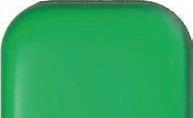
Navigating life with a self-centred mother or father isn’t easy, but with boundaries and support, healing is possible
Words Bianca Carmona
You may have noticed the word “narcissism” bandied about a lot lately, especially on social media.
In many cases, people are complaining about a narcissistic partner or love interest and warning of the “red flags” to avoid.
However, what if it’s your parent who is the narcissist? And how can you handle the challenges that may crop up in this relationship like no other?
Psychotherapist Amanda Robins, who specialises in helping daughters of narcissistic mothers, says the experience can leave mental and emotional scars.
“It is often under-recognised how damaging emotional abuse can be,” Amanda says.
Mothers or fathers who are narcissistic are often selfish and self-directed, Amanda explains. “They tend not to have much empathy for their child.”
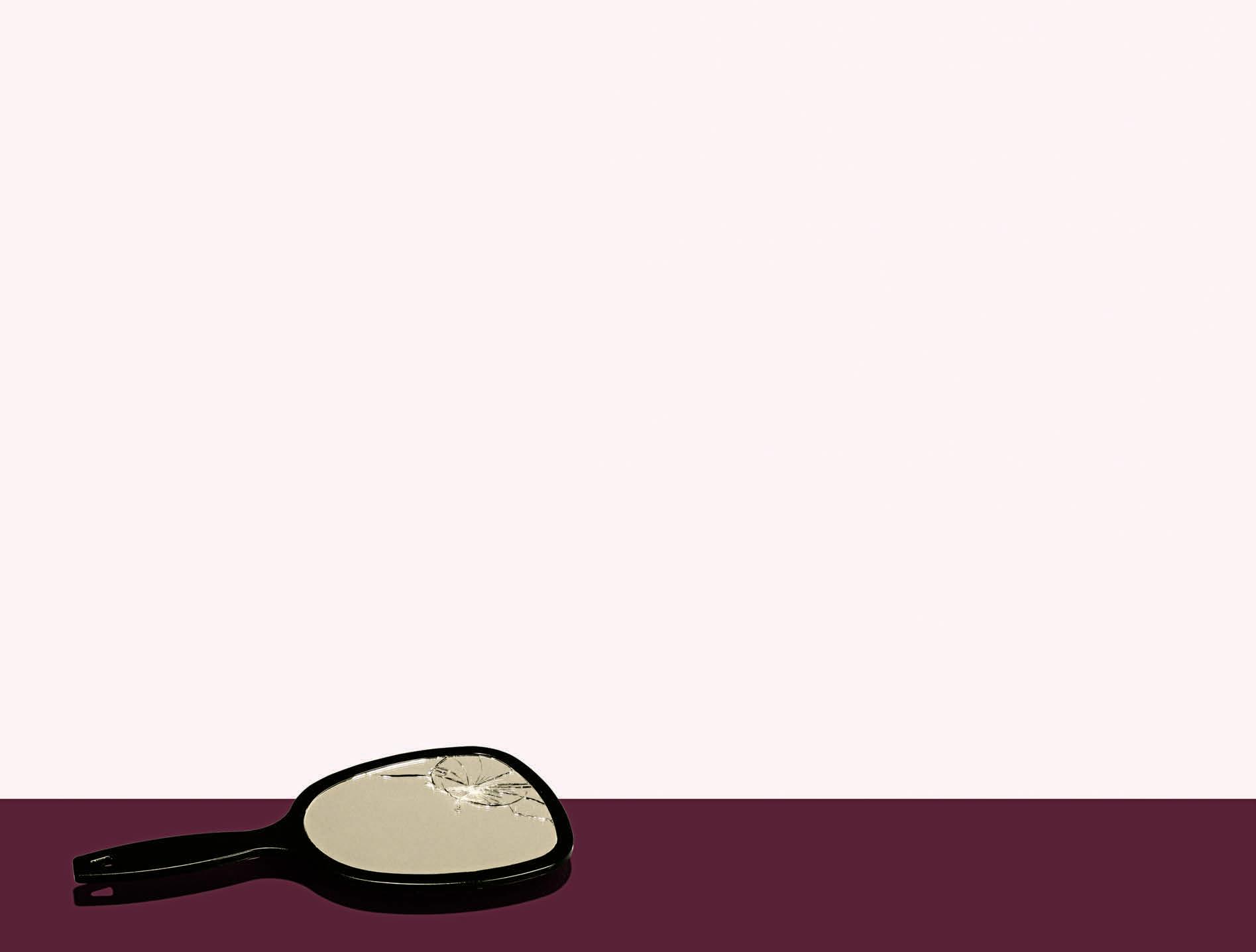
Parents with narcissistic tendencies prioritise appearances over emotional depth, resist self-reflection and expect others to do all the work in repairing relationships, she adds.
“Generally they’re not really interested in your point of view. They will become defensive if you try to mention any problems.”
A UK study in 2023 noted narcissism is a personality trait characterised by selfishness, coldness, entitlement and grandiosity.
Children of narcissistic parents often suffer life-long problems, Amanda says.
She says adult children of narcissists can have trouble meeting their own needs, often become people pleasers and perfectionists, and are generally not good at asserting themselves.
“They’re not good at saying
no — they’re too scared to,” she notes. “They often feel the relationship might be at risk if they don’t meet the other person’s needs.”
A 2021 study from the Netherlands noted narcissistic parenting can badly affect a child and lead to low selfesteem, trauma, anxiety and a sense of isolation.
Meanwhile, the 2023 UK study noted parental narcissism can cause depression in young adults and relationship problems later in life.
Relationship therapist Jonathan Hartley from positivesdating.com has witnessed how growing up with a narcissistic parent can wreak havoc on a person’s romantic life.
“The trauma that occurs in these childhood relationships can lead to a tolerance for abusive bonding behaviour
in adult relationships,” Jonathan says.
These individuals often struggle with self-worth and have a distorted view of what love should look like, he adds.
“They often find themselves attracted to partners who mirror their narcissistic parent, unconsciously recreating familiar dynamics.”
When navigating the relationship between your narcissistic parent and your own children, caution is key.
Amanda recommends monitoring interactions closely to ensure the grandparent doesn’t engage with the child in the same harmful way they did with you. She suggests supervising visits to keep an eye on things.
“If there are truly personality disorder level problems, then I personally wouldn’t leave my child alone with them,” Amanda says.
‘How it affected me’
Growing up with a mother with narcissistic tendencies profoundly shaped Maria’s* understanding of love and relationships.
While her mother was never formally diagnosed, Maria says the traits became evident during her own therapy sessions.
Maria says yelling was masked as “passionate discussions” and “part of our culture”, when actually it was a toxic relationship.
“As a child I learnt that a healthy relationship dynamic is one in which I am always giving, where the other person is taking,” Maria says.
“It’s important to remember that nobody is born a narcissist; these behaviours are self-preservation and based on fear.”
Reflecting on her upbringing, Maria realised that much of her understanding of love and relationships came from learnt patterns where self-sacrifice was expected and normalised.
In early 2024, Maria came to recognise that her then boyfriend also exhibited narcissistic tendencies.
“The experience I had was extremely hurtful and included pathological lying, using me for money and cheating in a committed relationship,” Maria says.
His behaviour reflected the unhealthy dynamics she had grown up with, she explains.
After ending the relationship, Maria embarked on a healing journey that reconnected her with her family, reshaped her understanding of love and self-worth, and began a career helping others.
*Name has been changed.

“THE TRAUMA THAT OCCURS IN THESE CHILDHOOD RELATIONSHIPS CAN LEAD TO A TOLERANCE FOR ABUSIVE BONDING BEHAVIOUR IN ADULT RELATIONSHIPS.”
Jonathan Hartley
THERAPIST
Amanda says talking with a professional can help with setting boundaries, expressing anger constructively and connecting with others without feeling overwhelmed or controlled.
“It’s important to remember your trauma symptoms are not your fault. Therapy can’t undo the trauma but it can help you change and learn new skills. It is possible to recover.”
A supportive partner, friends and family can also help.
2
Confronting a narcissistic parent often doesn’t work, Amanda says.
“They won’t respond well to criticism, and you won’t get what you want. Unfortunately you often have to accept the fact that you’re probably going to have to wear a bit of guilt and grief.”
Instead, she recommends lowering your expectations and accepting the parent the way they are.
“Obviously you shouldn’t have to do that, but that’s the sad reality. People often start grieving for the mother they never had. This is one of the first steps in recovering from a narcissistic parent.”
3BE CLEAR
Attempt to set clear and transparent boundaries, Amanda says. “Try to be very low-key and say what you want and just leave it at that. They may come to the party; they may not.”
4STAY CALM
Interacting with a narcissist can be hard work, she acknowledges.
“If you get into a heated argument you’re probably not going to win because they often want to dominate. They want their world view to dominate. They want to feel like the victim.”
She says the “grey rock method” may help. Popular on social media, it essentially means making yourself as uninteresting and unresponsive as possible. This includes maintaining emotional distance, limiting personal information and using neutral responses.
5STEP AWAY
For some, healing may involve limiting or even having no contact with their narcissistic parent — a choice that is often difficult, Amanda says.



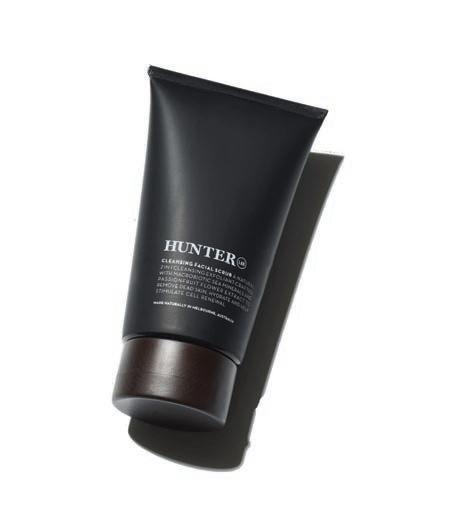


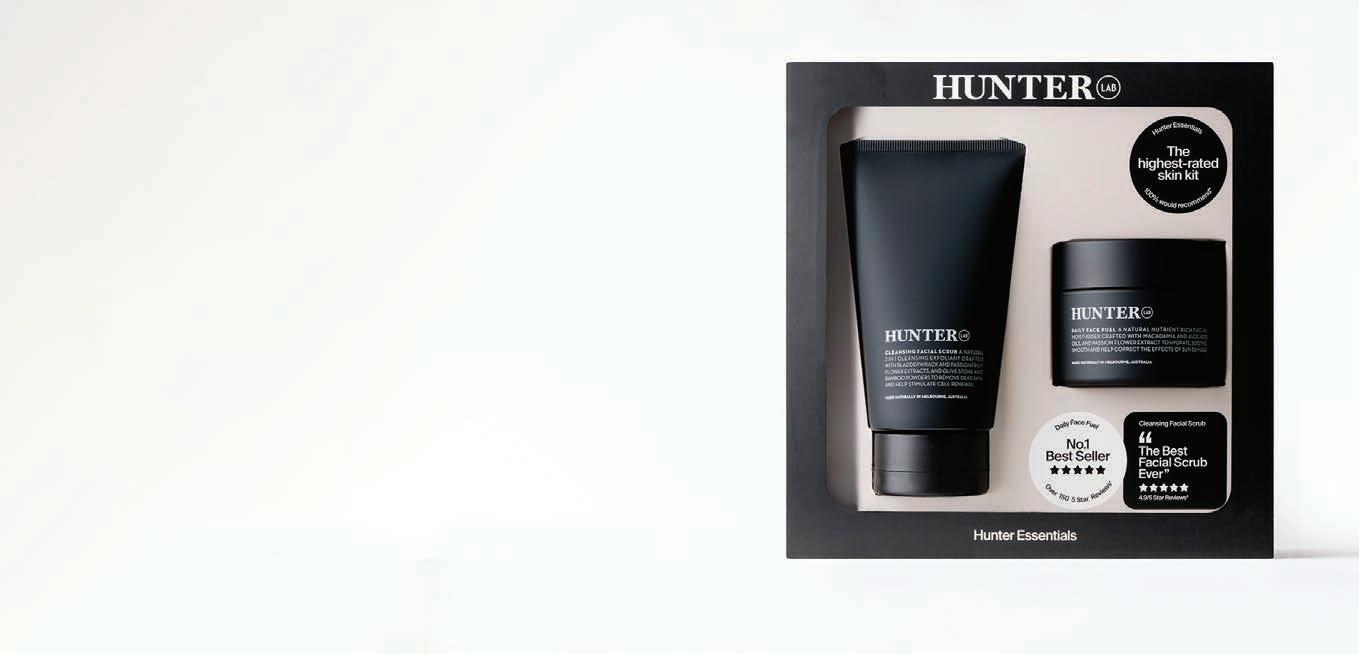



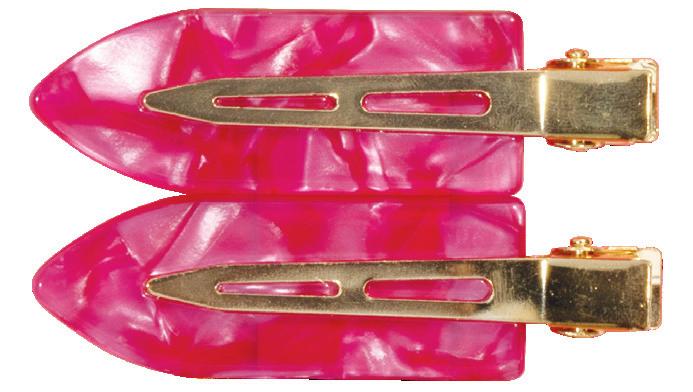

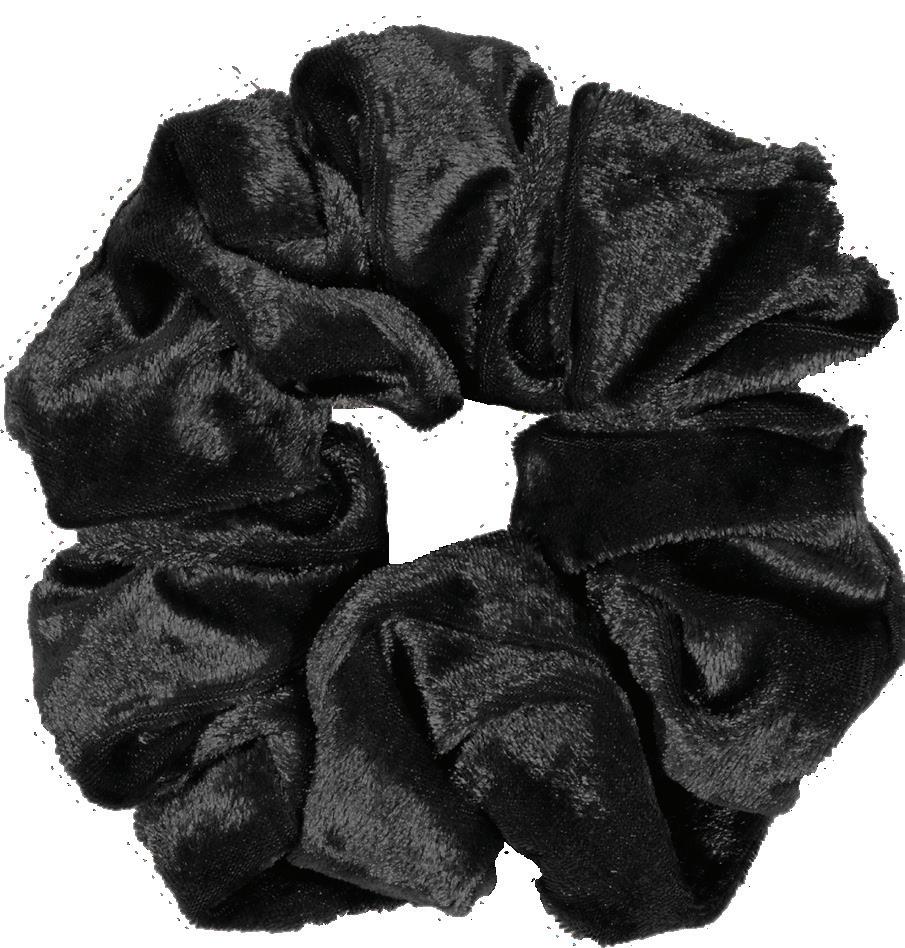

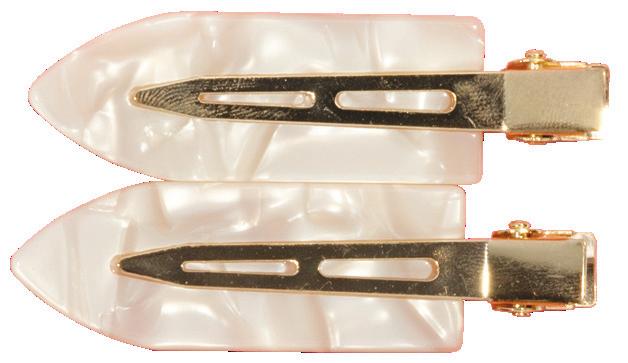


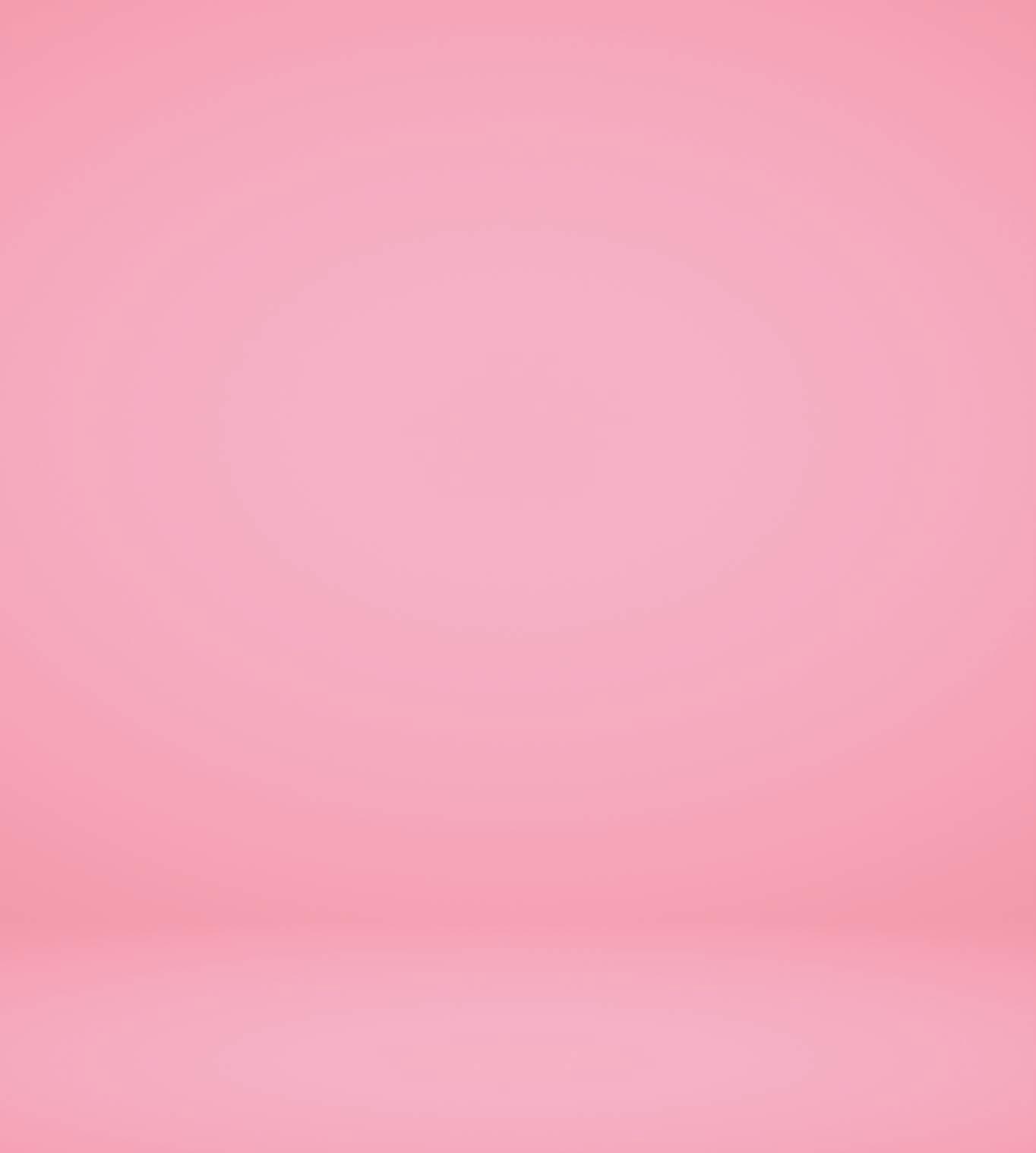

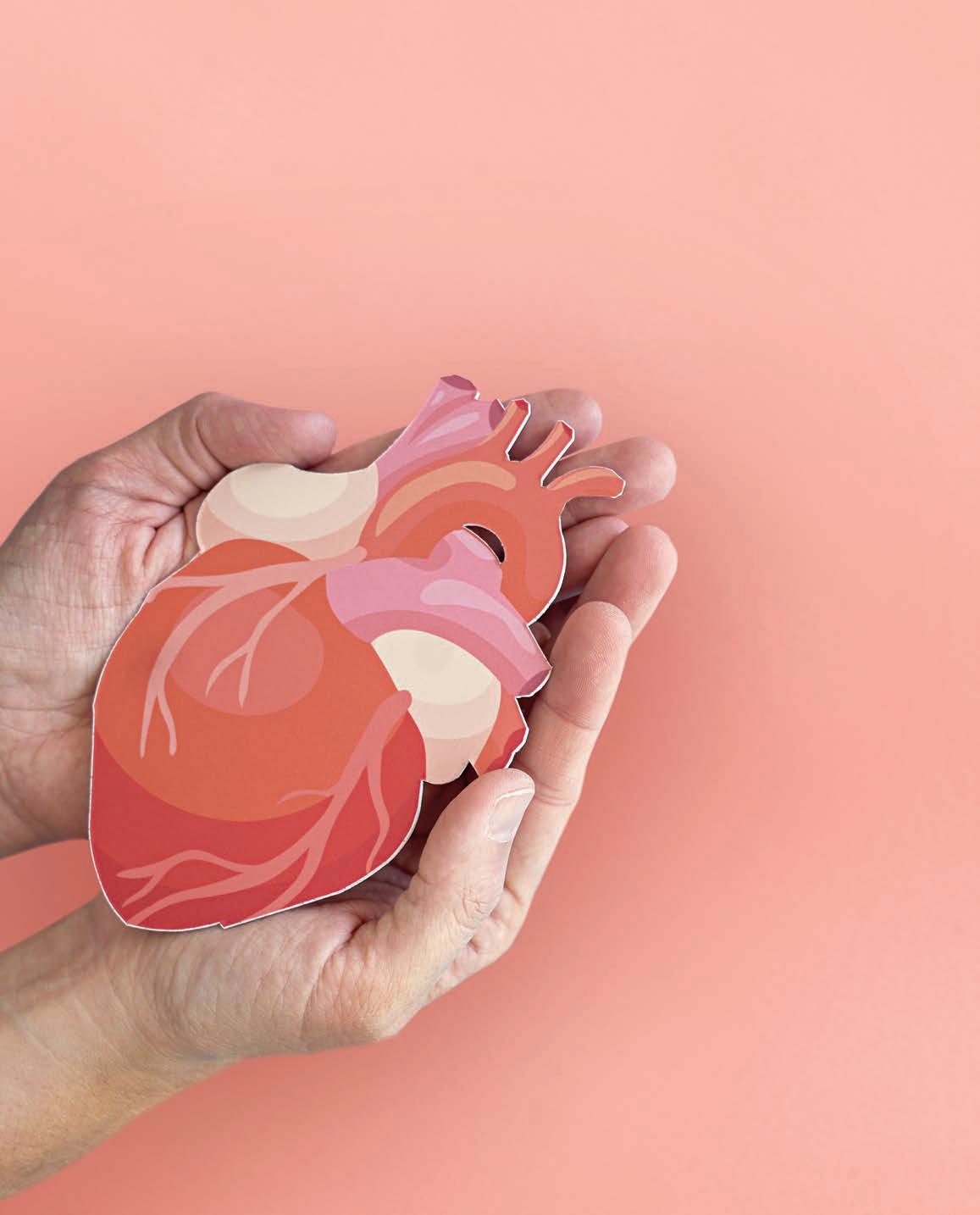
Some problems aren’t always obvious. Here are symptoms you shouldn’t ignore
Words Joanna Hall
Clutching at the chest, sweating profusely and gasping for air is a common way that television shows and movies depict someone having a heart attack.
However, heart problems can show up subtly and differ from person to person, sometimes producing odd symptoms that you could be forgiven for brushing off.
“Chest pain is not the only symptom that you may experience during a heart attack or other heart issue, so it’s important to know your body and recognise when something doesn’t feel right, even if it may seem minor,”
Victor Chang Cardiac Research Institute director Professor Jason Kovacic says.
“Many people who have heart attacks report feeling generally unwell or not themselves beforehand.”
“HEART PAIN MAY BE FELT AT THE CENTRE OF THE CHEST BUT IT CAN ALSO APPEAR IN ONE OR BOTH SHOULDERS, ONE OR BOTH ARMS, THE BACK, NECK, JAW, TEETH AND EVEN IN THE GUMS LIKE YOU’VE GOT A BIT OF A TOOTHACHE.”
Profe

University of Notre Dame
Australia cardiology professor David Playford says the early stages of heart disease are mostly not associated with symptoms. And sometimes some symptoms aren’t directly heart-related but could indicate the presence of a heart problem.
“For example, if you experience pain or fatigue in the legs while walking, you stop and rest and the pain goes away, then you start walking again and the pain comes back,
that’s what we call intermittent claudication,” says Prof Playford, also a consulting clinical and imaging cardiologist with Advara HeartCare in WA.
“It’s caused by too little blood flow to leg muscles during exercise and is a classic symptom of peripheral vascular disease, caused by narrowed arteries to the legs.”
Abnormal blood vessels and other vascular issues can cause pulsatile tinnitus, a ringing in one or both ears
that’s in rhythm with your heartbeat. Additionally, swollen feet, legs and ankles, sometimes called peripheral edema, can be a telltale sign of congestive heart failure.
Prof Playford says unexplained fatigue or feeling short of breath with exercise can be signs of heart valve disease, which can be fatal if not diagnosed and managed.
Prof Kovacic adds another symptom to be aware of is the feeling of extra beats or
a fluttering in the chest, known as palpitations. “This can be a sign of a heart rhythm disturbance called arrhythmia,” he says.
Prof Playford says a common error is thinking that heart pain has to occur over the heart on the left side of the chest.
“Heart pain may be felt at the centre of the chest but it can also appear in one or both shoulders, one or both arms, the back, neck, jaw, teeth and even in the gums like you’ve got a bit of a toothache,” he says.
It’s important to pay close attention to nausea, especially if you’re a woman.
“Although we tend to think of chest pain as the classic heart attack symptom, women may experience other warning signs such as nausea or vomiting, extreme fatigue, fainting, cold sweats, pressure in the upper back, light-headedness and dizziness,”
Prof Kovacic says.
He adds that women tend to develop heart disease later in life than men because their hearts and arteries are protected until middle age by estrogen.
“As estrogen levels drop during menopause, the risk of CVD (cardiovascular diseases) increases and women ‘catch up’ with men,” Prof Kovacic says.

The Heart Foundation’s
Natalie Raffoul says almost 600,000 Australians are living with coronary heart disease, and more than 55,000 people are hospitalised with a heart attack each year.
Prof Playford adds around half of all first heart attacks are fatal.
“For that reason, we want to identify heart disease early before symptoms develop,” he says.
There’s also something called a “silent” heart attack — a heart attack without symptoms or with only mild discomfort.
“Silent heart attacks are not common and they likely affect up to 5 per cent of the general population,” says the Heart Foundation’s Natalie Raffoul, senior manager of healthcare programs and clinical strategy and clinical pharmacist. “They are more common in older people, people with prior cardiovascular disease and those living with diabetes.”

Warren Williams is living proof that regular heart check-ups save lives. The Sydney endurance athlete and running coach was stunned when a random heart check revealed atrial fibrillation in 2010.
“I was shocked. I was 49 years old and the fittest I’d ever been. I was completely asymptomatic,” says Warren, who competed in half marathons and triathlons at the time.
After the diagnosis, he had a pacemaker fitted and returned to training weeks later, eventually resuming competitive running.
But in 2021, he collapsed during a run with friends and was taken to hospital. Doctors discovered he had a ventricular tachycardia episode, which caused a cardiac arrest and a collapsed artery. Warren underwent four surgeries, received an implantable cardioverter defibrillator and spent weeks in intensive care.
“We don’t want to wait until someone has their first symptom because that first symptom could be a heart attack.”
Having a regular heart health check-up is vital.
“People aged 45 years and over — or earlier for First Nations people — should see their GP for a Medicare-subsidised Heart Health Check,” Natalie says. “This is one of the most important steps
you can take to identify and understand your risk factors for developing heart disease.”
Prof Playford says risk factors include high cholesterol, hypertension, diabetes, cigarette smoking and a family history of coronary artery disease.
“The presence of one or more of these increases the likelihood of developing a cardiovascular event,” he says.
Today, at 63, he continues to run and coach and he performs in a band. He champions regular heart health checks and supports the Heart Research Institute and Victor Chang Cardiac Research Institute through public speaking and fundraising.
“Regardless of how fit or healthy you think you are, once you hit 40, get a heart check,” he says.
— Bianca Carmona
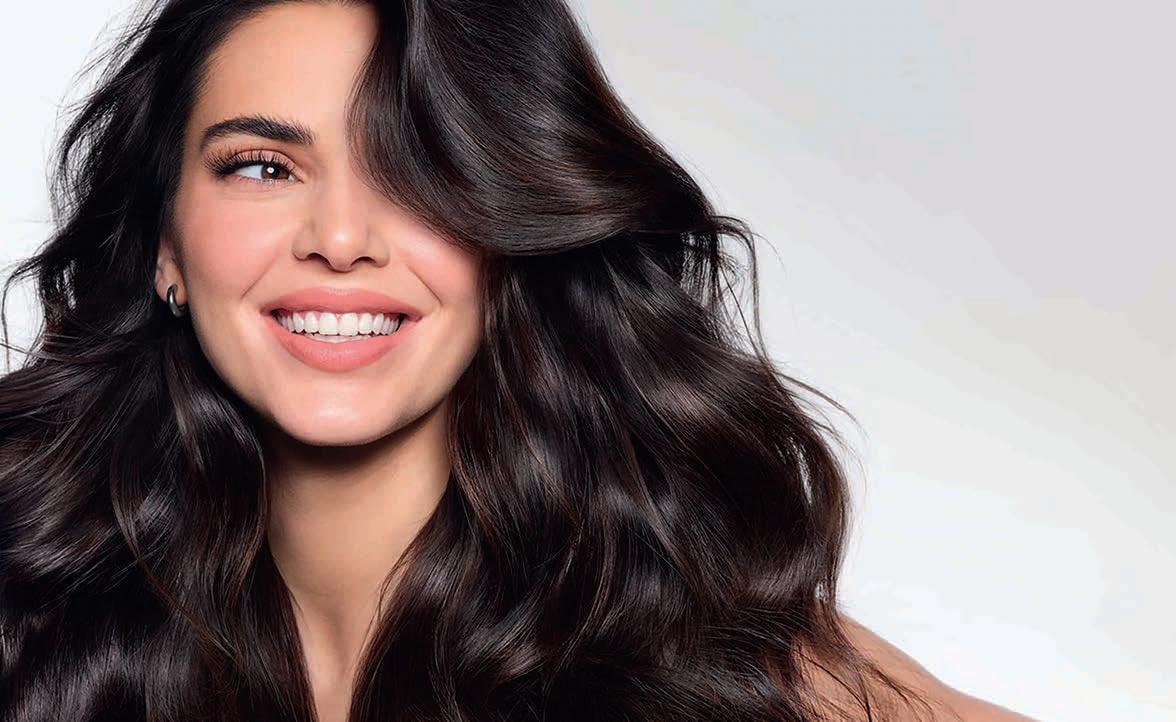


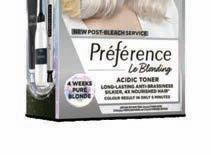


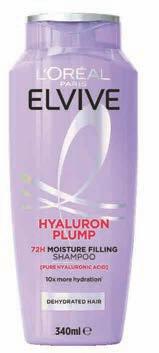
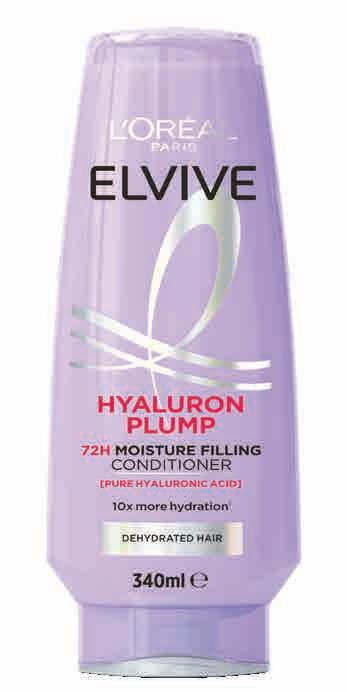




How can you tell if someone has concussion? Here are the symptoms to look out for and what to do
Words
Alex Davies
Most of us hit our heads from time to time, usually not giving it much thought beyond that initial “ouch”. After all, head knocks are a hot topic often reserved for the sporting world, where scientists are exploring the long-term effects, protection strategies and more.
But now, the spotlight is increasing on injuries in nonathletes, too, as experts unravel the mysteries of how these impacts can, well, impact us.
“So much of what we know about head knocks comes from a sporting context, but most concussion injuries are actually caused by things like falls, motor vehicle accidents, and just knocking your head on an object in some way,” says Dr Jemma Keeves, a research fellow at Curtin University.
Her work focuses on mild traumatic brain injury — aka, concussion — which happens when a blow to the head or body (or a sudden change in motion) transmits force to the brain. Statistics suggest there are about 180,000 each year in Australia, although the real number is likely higher.
Thresholds for head injury can vary, which means a minor blow that gives you no trouble might affect your neighbour or partner differently. So, play detective from the start and
search for clues beyond the bump itself.
“Check if the person is conscious and alert. Try asking simple questions like, ‘What’s your name? Do you know where you are?’” advises Sydney-based GP Dr Michela Sorensen.
“Seek immediate medical help if there’s loss of consciousness, confusion, disorientation, unsteadiness, vomiting, bleeding that won’t stop, fluid coming from the nose or ears, or if you have any concerns.”
Nothing raising alarms?
Dr Sorensen recommends: soothing remedies such as ice packs; asking someone to stay with you for 24 hours in case you need help; as well as staying awake for a few hours in case symptoms emerge — a worsening headache, blurred vision or speech changes.
Concussion can be subtle, sometimes making itself known over hours or longer, so it’s about being vigilant and checking in with a doctor if anything changes.
The unpredictable nature of concussion is a health riddle scientists are working hard to solve.
Dr Keeves is part of a groundbreaking project, the Australian Mild Traumatic Brain Injury (AUS-mTBI) Study, which is painting a clearer picture to help experts understand what factors influence recovery.
It draws on volunteer data from HeadCheck, a free app you can use to identify concussion, track symptoms and get personalised tips for managing recovery.
“Five years ago, a doctor might have told you to lie in a dark room and stay pretty immobile for a few days, but we now know that’s not actually helpful,” Dr Keeves explains.
Some rest is needed.
“But then it’s about getting back into some light physical activity if possible and building from there,” she says.
Imagine concussion being diagnosed with a simple blood test. Biomarker research is under way to make that a reality, Dr Keeves says, not to mention next-level brain imaging techniques that may assist with predicting who will take longer to recover.
Fresh technology is also exploring the impact of hormone fluctuations in the menstrual cycle.
Dr Keeves wants to see more awareness of head knocks — from workplaces, where “invisible” symptoms (such as screen sensitivity) can go unnoticed, to health care professionals guiding patients in the first instance.
She says getting resources to vulnerable people — in violent situations, for example — must also be a priority.

Hannah Duley, 36, travelled a long road to recovery after being concussed in a car accident in 2018.
“My concussion wasn’t diagnosed when I first went to hospital, but over the following week. I just didn’t feel like myself. My GP prescribed rest for two weeks, which eventually turned into an eight-month journey of seeing different specialists.
I was struggling with fatigue, headaches, tinnitus, noise sensitivity, irritability; my working memory and speech were impacted, too. There’s also anxiety and pressure to get back to regular life, which ultimately makes recovery harder.
For me, the biggest help was alternative therapies like acupuncture and reiki, as well as working with an osteopath and chiropractor. My symptoms have slowly improved, and today I’d say I’m 90 per cent better.
My advice? Listen to your body — it’s always best to be conservative when it comes to your head. And be empathetic to people with head injuries. This is a form of brain damage, and it needs to be taken seriously.”
Everything you need to know about staying healthy this season
Words Liz McGrath
How does the immune system change as we age, and what can we do to support it?
Dr Carolien van de Sandt, of the Doherty Institute in Melbourne, says the human immune system evolves drastically through our lives.
“Newborns initially rely on maternal antibodies, which provide protection for about six months until their own immune system develops,” she explains.
“During childhood, exposure to various viruses helps train T and B cells, building adaptive immunity through infection and vaccination.
“Adults have a well-trained immune system capable of recognising past viruses, though adaptability can decrease when viruses mutate.
“As we age, however, our immune responses become less efficient, which explains why older people are more vulnerable to severe infections and why vaccinations may help in providing a boost.”
How does stress impact the immune system, and what can we do to mitigate its effects?
“The first few minutes of a stress response can actually enhance your immune system, putting it on high alert for any
potential invading pathogens that may come your way,” says the Doherty Institute’s Professor Katherine Kedzierska.
“But studies have shown that prolonged periods of stress increase the release of stress hormones that can suppress your immune system.”
She says a good night’s sleep can help us cope better in stressful situations.
“However, while lower stress levels may give you a stronger immune response, that’s not going to prevent infections by itself,” she cautions.
How do lifestyle factors such as diet, exercise and sleep affect immune function?
“When we eat well, move regularly and get good-quality sleep, we supply our immune system with the nutrients and tools it needs to function optimally,” says Sydneybased nutritionist Latoya Cruz, also known as the Virtual Nutritionist.
“When we skip exercise, consume a diet lacking nutrients and have poor sleep, we’re more prone to inflammation, which inhibits your immune system’s ability to function optimally. Smoking, consuming alcohol and too much caffeine, and living in
a state of constant stress are three things we should be doing less of in order to protect our body’s natural defences.”
Reduce refined sugar intake and remove processed foods from your diet in order to “reduce inflammation and support your resistance to illness and infection”, Latoya says.
Are there specific foods that have been shown to support immune health?
“Nutrients known to support the immune system can be found in foods rich in zinc, vitamin C and vitamin D,” Latoya says.
There is also a suggestion that fermented foods like yoghurt, which contain probitics, can help support immunity.
Other foods that positively impact immune health include those rich in vitamin E, selenium, iron, magnesium, protein and prebiotics, she says.
What role do vaccines play in enhancing immunity, and how effective are they?
“Vaccines are important for training and boosting our adaptive immune system to recognise and eliminate viruses and other pathogens without
causing disease,” Dr van de Sandt says. “Vaccines expose your immune system to an inactive or weakened version of the virus, which trains it to recognise and mount a stronger and faster immune response when you’re exposed to the real thing, resulting in milder disease outcomes.
“The effectiveness of vaccines varies depending on the type and the disease it targets as well as personal circumstances.”
What are the latest updates and recommendations for the 2024-2025 flu vaccine?
Infectious disease physician and clinical microbiologist at the University of Queensland, Professor Paul Griffin, says after a challenging 2024 flu season the message for 2025 is be prepared.
“We saw more than 350,000 reported flu cases last year, complicated by higher than expected rates of other respiratory diseases including Covid-19, mycoplasma and whooping cough,” he says. “We’re still tracking higher than usual numbers of these, which we’re continuing to monitor.”
What are the most effective ways to naturally boost your immune system?
It turns out that some of the most effective ways to support our immune system are actually quite simple.
Latoya says eating a balanced diet, moving your body often, drinking plenty of water, getting out in the sunshine, breathing in fresh air, and goodquality sleep all come out tops.
“Foods rich in vitamin C and zinc are great for immune health. So, oranges, strawberries, broccoli and brussels sprouts for vitamin C; and oysters, red meat and poultry for zinc,” Latoya says.


“WHEN WE EAT WELL, MOVE REGULARLY AND GET GOODQUALITY SLEEP, WE SUPPLY OUR IMMUNE SYSTEM WITH THE NUTRIENTS AND TOOLS IT NEEDS TO FUNCTION OPTIMALLY.”
Dr van de Sandt adds a diverse repertoire of “friendly” microbes in the gut can help fight off harmful pathogens, as they indirectly teach your immune system when to be alert or relax.
“It’s recommended you eat a variety of fibre-rich foods, prebiotics and fermented foods like yoghurt and kimchi, which can promote microbial diversity,” she says.
The World Health Organization has recommended trivalent vaccines be used for the 2025 southern hemisphere flu season, based on its analysis of the strains most likely to be prevalent.
“And we’re seeing a range of exciting vaccine developments, including new options for RSV, Covid-19, shingles and boosters for pneumonia and whooping cough,” Prof Griffin says.
He recommends returning to basic preventative measures such as hand washing, masks where needed and coughing and sneezing into our elbows.
What are some common misconceptions about the immune system?
“People often expect a black and white answer — that something protects or it doesn’t protect,” Prof Kedzierska says.
“The truth is the immune system is incredibly complex and the answer is often more nuanced.
“Two key misconceptions persist: First, that vaccines become useless when virus strains mutate.
“In reality, while antibodies may become less effective, T-cell responses often continue providing protection against severe disease. Second,
people misunderstand vaccine impact, thinking protection is only individual.
“Vaccines don’t only protect the recipient but can also reduce virus transmission through herd immunity, crucially protecting the vulnerable like infants, the elderly and the immunocompromised.”
Adds Latoya: “Most people only think about their immune system once they become sick.
“In reality, immune system support should be a prevention, not a cure, and we should have good practices in place to support our immune system day in, day out — not just in seasons of illness.”










A guide to what you need and when

Looking after our skin is not a one-size-fitsall deal.
Shaped by both our genetics and environment, our skin is constantly evolving as we age. Recognising this complexity also highlights the need for a personalised and flexible skincare routine that addresses the specific needs of our skin at different life stages. Whether experiencing the vibrancy of youth in our teens and 20s, the transitions of adulthood in our 30s and 40s, or the wisdom of later years in our 50s, 60s and beyond, customising our skincare regimen is key to preserving its vitality and glow.
It is most important to follow a simple skincare routine — cleanse morning and night and follow with a lightweight moisturiser. Adolescence brings hormonal changes, which during puberty can increase oil production, leading to clogged pores and breakouts. Acne is common in this age group, so the use of noncomedogenic products, which do not clog pores, are ideal.
A good skincare routine starts here and is crucial for managing blemishes and ensuring long-term skin health. Additionally, daily sun protection is essential to prevent UV damage, which can worsen blemishes and accelerate signs of ageing.
20s
In your 20s, skin typically maintains its smooth, youthful appearance due to strong collagen and elastin production. But the skin’s regenerative processes start to slow and the importance of preventive skincare emerges. The sun, particularly cumulative sun exposure, can accelerate premature ageing, causing fine lines, pigmentation and loss of elasticity, so consistent sun protection is important Introducing active ingredients into your routine can help delay visible signs of ageing For example, a vitamin C serum to protect the skin’s appearance and promote a brighter, youthful complexion
Those early signs of ageing start to become noticeable as collagen fibres thin out and lose structure, leading to fine lines, particularly around the eyes and mouth. The need for consistent sun protection becomes even more important
as skin cell regeneration slows down and contributes to uneven texture and a dull complexion. Adding ingredients such as vitamin A is important for preventing visible ageing. Your moisturiser should also become thicker; keeping the skin hydrated helps combat dryness and maintain a healthier, more radiant appearance as skin transitions through this decade.
As we enter our 40s, more prominent signs of ageing develop due to thinning skin. With less collagen and weaker elastin fibres, skin tends to lose its vibrancy and plumpness, which makes fine lines and wrinkles more visible. Your skincare routine should now incorporate retinoids and peptides to strengthen the skin’s resilience.
Pigmentation is the other ageing factor in your 40s, especially around the eyes. This is the time to start playing with anti-ageing eye creams and serums that target pigmentation and discolouration.
In our 50s, as the body’s cell-renewal process slows down, older skin cells are left sitting on the skin surface for longer. Collagen production slows down, most commonly resulting in crepiness around the eyes and neck. Building on the skincare from your teens (good cleanser), 20s (hydrating moisturiser and SPF), 30s and 40s (serums with active ingredients such as vitamin A, vitamin C and peptides), the ingredients tie in together to form the foundations of your skincare routine.
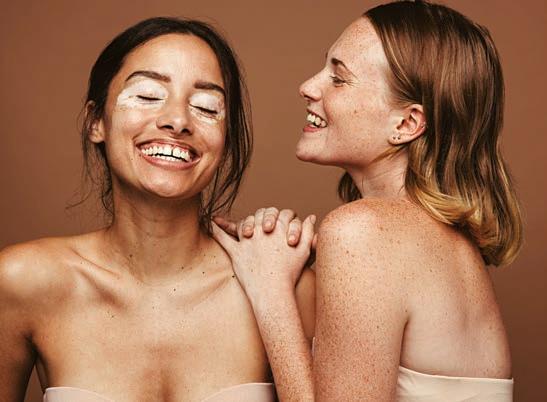
From shopping thrills to sugar hits, constantly craving that rush on repeat can be a problem — here’s what to do instead
Words Elissa Doherty
It was during a rough patch in life that business boss Barb de Corti discovered she was a junkie. Her drug? Shopping.
She’d get an instant buzz by clicking the buy button, transporting her from the pain of her marriage break-up.
“I was a dopamine junkie and chasing quick fixes that were keeping me in a loop of highs and lows,” she says. “There was something about hitting that ‘buy’ button that felt like a quick mood boost, even though it was usually short-lived.”
The term “dopamine junkie” is a relatively new buzzword as interest grows in our body’s “feel-good hormones”.
It describes a dependence on pleasurable activities, food or substances that
trigger the brain to release the chemical that acts as our brain’s reward and motivation system.
Dopamine can even be released by the thought of something we enjoy, such as eating chocolate or buying a new dress.
For Barb, this meant being drawn into a trap of indulging her love of shopping, sugar and even working longer hours on the business she founded, green cleaning company Enjo Australia.
It was a pattern that consumed her for eight years in her 40s and 50s, leaving her racked with guilt and a credit card debt she shudders to think about now (“I could have made a deposit on a house”). And, ultimately, unhappy and unfulfilled.



Barb’s wake-up call came when a psychiatrist diagnosed her with depression and explained she needed to activate less dopamine — and more serotonin, another feel-good hormone.
“It was eye-opening,” Barb says. “The psychiatrist pointed out that while dopamine gives us those short-term ‘hits’ of happiness, like the thrill I got from shopping or eating sugar, it’s serotonin that brings that deeper, more lasting sense of contentment and wellbeing.”
She was prescribed antidepressants and made big lifestyle changes such as taking up running and meditation, cutting out sugar and practising gratitude.
The impact of hormones on our life choices has become a hot topic, particularly amid the explosion of social media and smartphones, which experts say are sparking a rise in behaviour addictions.
Sydney clinical psychologist Dr Anastasia Hronis, author of The Dopamine Brain, says people are becoming more curious about how hormones influence us.
“I think people are developing more of an interest in the brain, and people want the knowledge and tools to arm themselves to make healthy decisions for themselves,” Dr Hronis says.
“We also have a greater awareness these days of the ways in which technology and tech companies can keep us hooked on certain platforms.
“With this in mind, it’s important for people to understand why they might spend so long scrolling
TikTok or playing video games, and that it’s not just a lack of self-control but technology, which has been carefully constructed to be ‘sticky’.”
Dr Hronis says it’s also helpful to understand what activates our dopamine levels and how to moderate them.
“If we continue to seek out things that boost our dopamine, eventually we will build a tolerance and those things won’t feel as rewarding anymore,” she says.
“We want to consider healthy ways we can activate various ‘feel-good’ hormones and neurotransmitters in the brain — dopamine, serotonin and oxytocin (and endorphins).”
She says music, movement and social connection are great examples: “Combine all three and you have a Zumba class!”
She cautions against a TikTok trend where people are undergoing dopamine detoxes (they say it’s crucial for survival).
“People also tend to do quite extreme ‘detoxes’,” she says. “The trend made its way through social media, and people were doing 24 hours of ‘detoxing’, where they’d deprive themselves of anything pleasurable or that evoked joy.
“Realistically, this is unlikely to do much other than create discomfort for us for 24 hours. Long-lasting, meaningful change often does not come within 24 hours of doing something drastic.”
Western Health psychiatrist Dr Naveen Thomas says dopamine can lead to behaviours with dangerous long-term consequences.
“The excessive release of dopamine can contribute to addictive behaviours, including

“TRUE HAPPINESS AND FULFILMENT DON’T COME FROM CONSTANT LITTLE HITS; THEY COME FROM BUILDING HABITS AND ROUTINES THAT NOURISH ME ON A DEEPER LEVEL.”
Barb de Corti
substance use and gambling, as it reinforces the brain’s reward pathway,” says Dr Thomas, clinical services director of the Mental Health and Wellbeing division.
Serotonin, however, helps regulate mood and encourage feelings of contentment, helping to reduce anxiety and sadness, he says.
“Interestingly, increasing serotonin levels can sometimes reduce dopamine levels, potentially diminishing the individual’s ability to experience pleasure and leading to apathy,” he says.
“Managing these molecules through lifestyle choices, such as regular exercise and social engagement, can help maintain a balance between dopamine and serotonin, supporting both pleasure and contentment.”
The Florey mental health researcher Professor Anthony Hannan says no two people respond the same way to these hormones, or “chemical messengers”, as the brain is made up of hundreds of billions of cells and influenced by environmental and genetic factors.
“Mental health is a very personal and individual ‘state of mind’,” Prof Hannan says. He emphasises that addiction is not a “dependence on dopamine”. Rather, he describes it as a “complex mental state” in which “a drug, or behaviour such as gambling, has ‘hijacked’ ancient parts of the human brain that evolved to motivate behaviours which increased survival”, such as eating and sex. He says a healthy diet, exercise, stress management and adequate sleep are among the best ways to improve mental health.
Barb is proof positive that lifestyle strategies can work, but not without dedication. She says she has a better balance in life and no longer calls herself a “dopamine junkie”. Focusing on experiences, time in nature and running marathons has worked wonders.
“True happiness and fulfilment don’t come from constant little hits; they come from building habits and routines that nourish me on a deeper level,” she says. She even banned herself from buying anything new for a year.
“That challenge taught me so much about contentment and appreciating what I already have today. I feel grounded and truly at peace with where I am.”
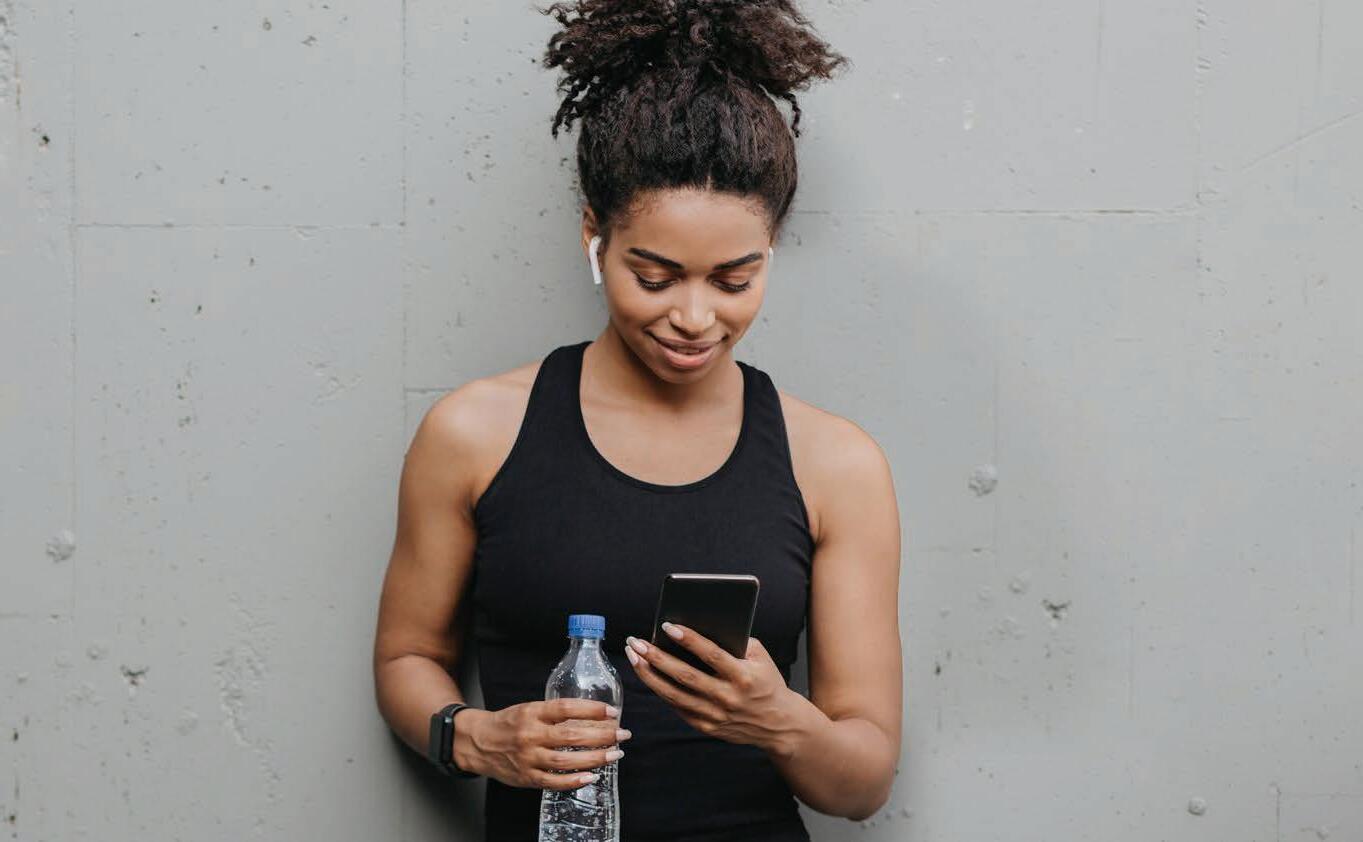
Don’t let your health checks slide — make them a priority

General practitioner
What are your health priorities?
If pop-up ads and social media were used as a guide it would seemingly be soft hair, wrinkle-free skin and a bikini-ready body.
Sorry, as a doctor they are not my idea of health priorities. Knowing how to reduce your risk of conditions such as cancer, stroke and heart attack, as well as vaccine-preventable illnesses and occupational and rarer genetic conditions, is what I call worthwhile preventative pursuits!
So far, many of you are nodding as you try to eat healthily and exercise, as well as have your immunisation and health screening diary all up to date. Well done, you. If that’s not you, please don’t stop

reading — no judgment here. Maybe you’ve been too caught up in other life priorities to get that health check.
Is that national bowel screening envelope languishing in a drawer? Have ‘they’ stopped sending you reminders for your screening tests because you just haven’t replied?
Time passes quickly but your risk factors don’t stop growing if you don’t address them.
We doctors get it: Life priorities can change. All too often I’ve seen something serious crop up in a patient’s life and their health prevention routine slips down the list.
Yes, if you are faced with a life-threatening diagnosis you need to concentrate on treatment for that, for now. However, while lifestyle modifications and health checks are your choice, they are an investment in the future, so please don’t let them slide completely.
Too often I’ve seen patients doing well coming out of their cancer treatment who have let their other risk factors and conditions fall by the wayside.
I find myself saying, ‘Hang on, you’ve beaten cancer. Let’s revisit those cardiovascular risks again. You don’t want to go and have a heart attack after you’ve come this far.’
I know, sometimes there just doesn’t seem to be enough time left in the day for yourself.
Family carers are a good example. The backbone of our health system, these wonderful people spend all their time ensuring their care recipient is looked after, and too often their own health agenda slips o the radar.
Maybe if I put it this way it will hit home: To be a good carer for your loved one, you need to make sure you are looking after yourself.
Please revisit your health check calendar and chat with your GP about your risks and what immunisations and checks may be (over)due. We will welcome you back.
If you don’t know what your disease risks are, your GP can help tailor a health check calendar for you. A basic adult health check starts with working out your risks.
There are the general population risks and on top of that your family history, age and medical and immunisation history.
Personal lifestyle factors, such as toxin exposure (not only smoking), may also impact your risk level.
A general physical examination is vital, including a skin check and weight and blood pressure check, along with listening to your heart, lungs and feeling your abdomen.
Based on the health check, your GP may recommend tests. I’m often asked, but have to say that there is no barrage of tests that will exclude everything.
However, by correlating your risk factors, your GP can work out a list of baseline and screening tests that are important.
Some screening tests vary with age, gender and family history. I don’t have enough space to list all the tests here, but I recommend having a look at healthdirect.gov.au/healthscreening-tests and then chatting with your GP.
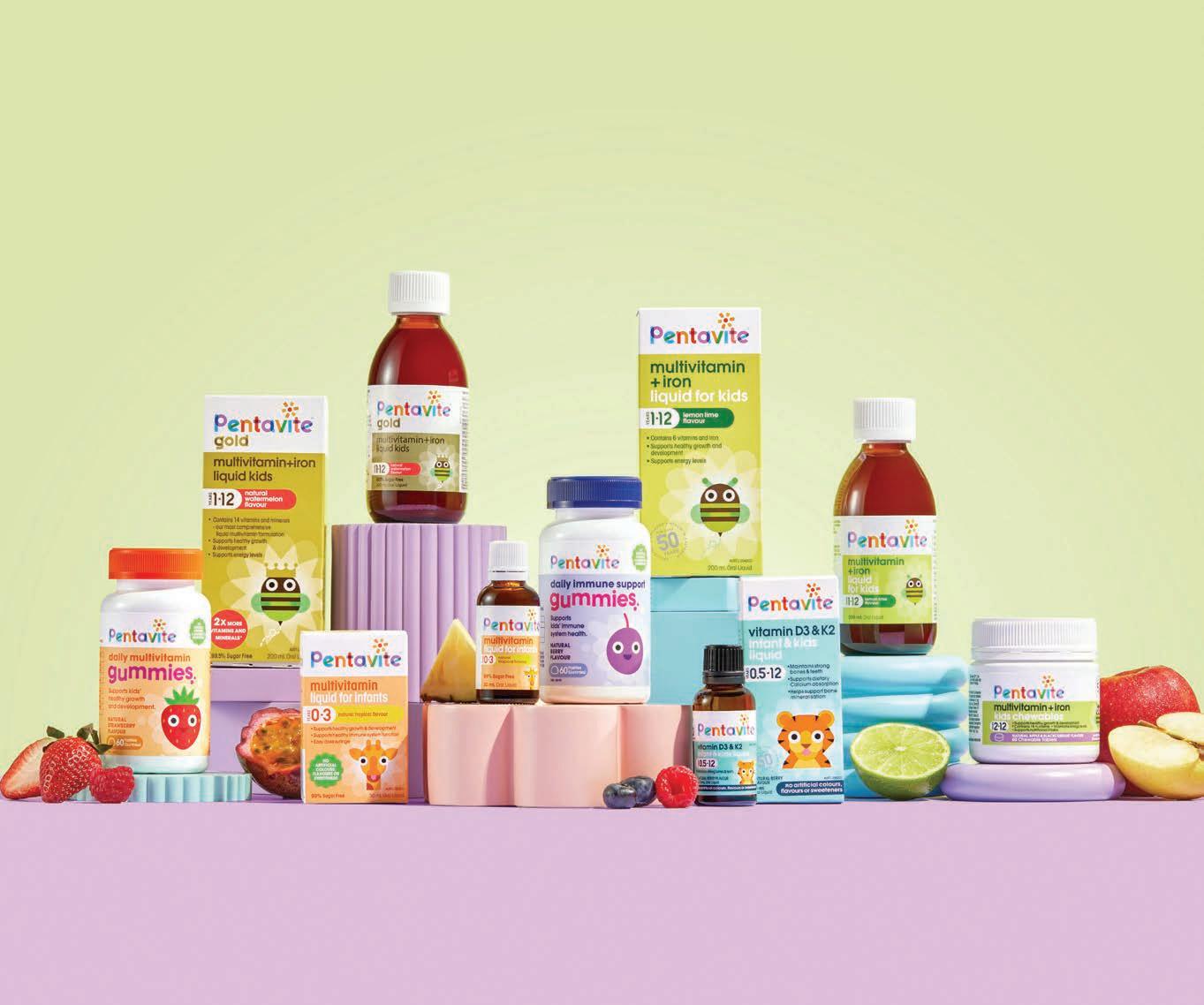
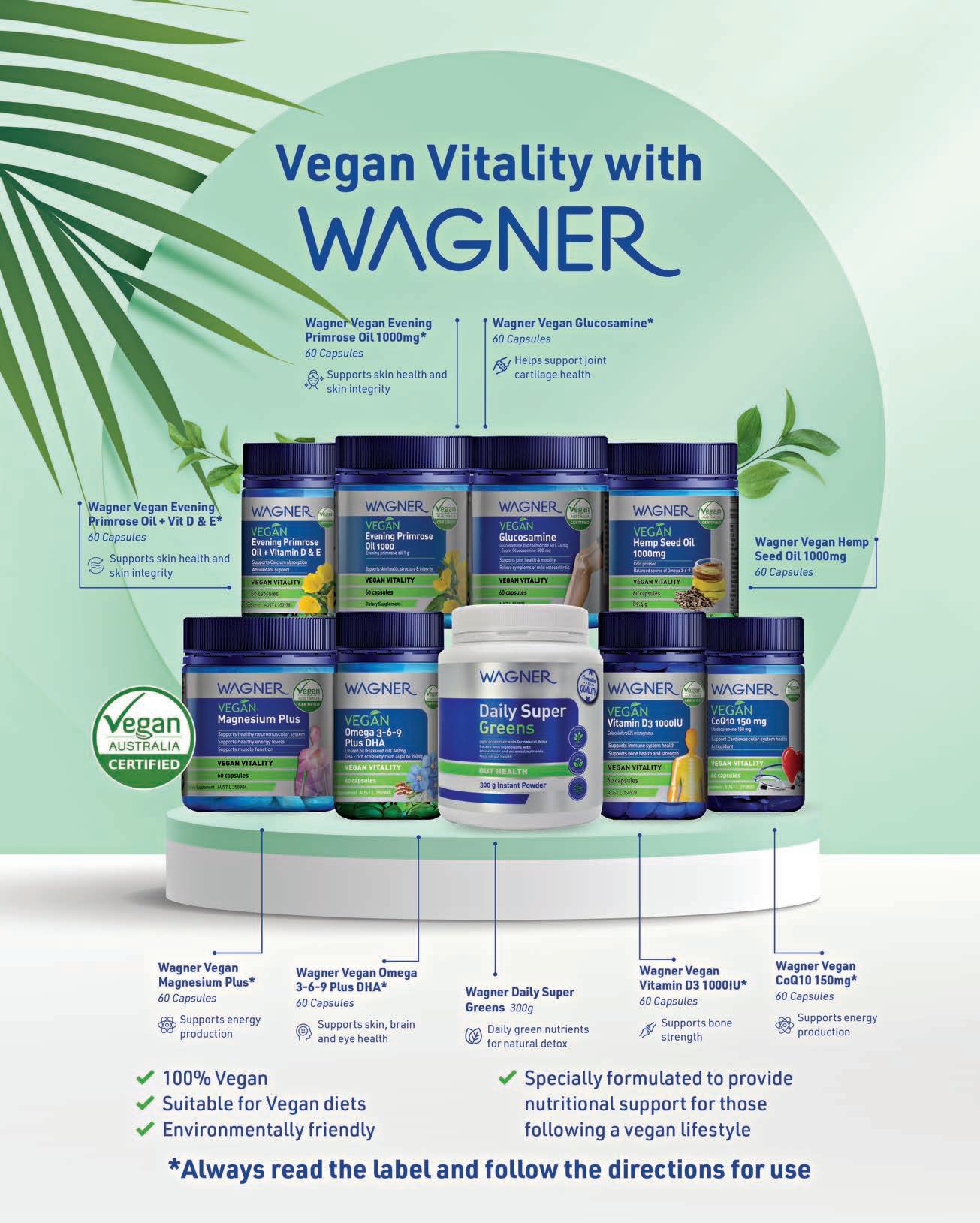

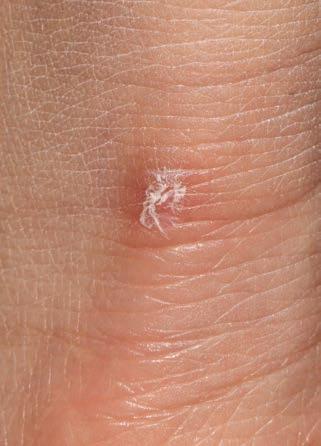
DERMATOLOGIST RECOMMENDED SKINCARE BRAND IN AUSTRALIA*

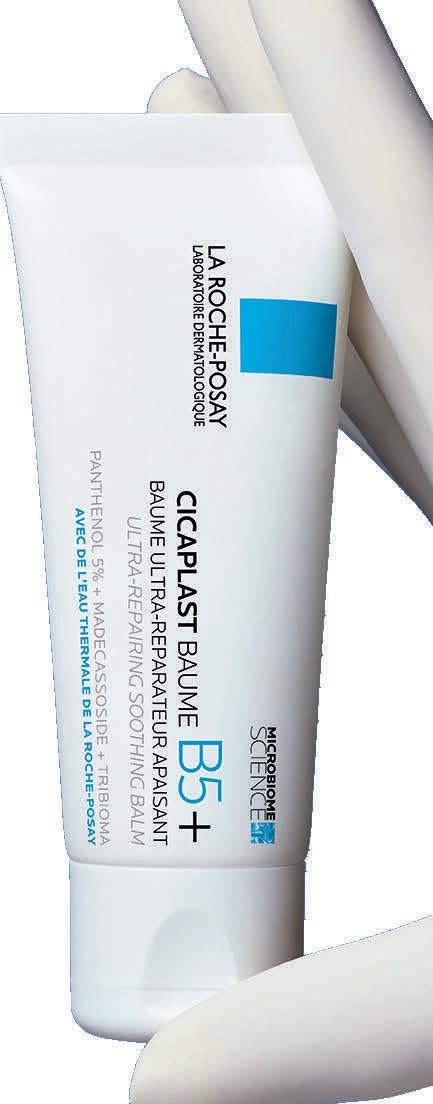
Words Liz McGrath

Gone are the days when retirement meant staying close to home. Today’s older Australians are more adventurous than ever, investing heavily in travel experiences and often bringing their families along for the journey.
“We’re seeing a significant shift in how older Australians approach travel,” says David Sumich, managing director at National Travel Group, which also encompasses National Seniors Travel.
“You can’t look at this group as one cohort anymore — their interests and capabilities vary widely, from active adventures to more structured experiences.”
This diversity is reflected in trending travel styles, he says.
“While some over-55s are tackling challenging cultural tours in Japan or embarking on Borneo adventures, others prefer the convenience of luxury cruising or scenic rail journeys,” he explains.
“The key is matching the travel style to individual preferences and capabilities.”
According to Flight Centre’s Global Leisure chief executive James Kavanagh, travellers over the age of 60 now represent more than half of the organisation’s bookings.
“They’re also investing more in travel now than they did last year, with the average spend for over-60s up 14 per cent,” James says.
“Couples in this age group are spending 53 per cent more on holidays than their younger counterparts.”
Aussie Baby Boomers are getting more adventurous.
A recent Forward Travel study shows the travel preference of Australian tourists aged 55 plus has radically changed in recent years. Once attracted to traditional, well-known destinations, these travellers are now exploring lesser-known parts of the world, driven by an appetite for meaningful and authentic experiences.
Based on Australian government figures (2018-19 and 2022-23), the countries that have seen the biggest rises include the Maldives (257 per cent), Bangladesh (165 per cent) and Colombia (145 per cent), with once-popular spots such as the Cook Islands, China and Switzerland falling out of favour.
Similarly, Skyscanner’s Travel Trends 2025 report highlights that Australian travellers are increasingly drawn to shared experiences, from art exhibitions to authentic Wild West adventures, reflecting a broader trend towards community and connection in travel.
“(This year) is about travellers seeking experiences they can share with others — from
watching their favourite sport up close to gazing at the Milky Way from thousands of light years away,” the report says.
The bucket list is still a popular concept, with Flight Centre reporting a strong demand for once-in-a-lifetime experiences among older Aussies.
“Experiences like seeing the northern lights, going on safari in South Africa or spending an extended summer in Europe have become increasingly popular,” James says.
Cruising is another popular option, thanks to its accessibility and onboard amenities.
“Luxury cruising (is) trending as older travellers prioritise style and comfort, fine dining experiences and unique entertainment experiences,” James says.
David adds cruises can offer an educational component.
“Some of the smaller cruise lines like Silversea are focusing on expedition cruising where people are learning while they travel, with guest lectures from a whole range of people such as former FBI agents,” he says.
“Cultural experiences in countries like Japan, with its temples and cherry blossoms, and Borneo, where people can immerse themselves in vibrant, age-old, Indigenous cultures, are very much in demand.”
David says the appeal of rail journey continues to grow, with services such as The Ghan, Indian Pacific and Canada’s Rocky Mountaineer offering magnificent scenery in comfort.
“Destinations like Tasmania and New Zealand (also) remain popular, offering shorter, manageable travel options with stunning landscapes, rich

cultural experiences and a wide range of outdoor activities, from hiking and wildlife spotting to exploring historic sites,” he says.
The travel specialists say the industry itself is adapting to meet changing demands from older travellers.
Solo travel options have expanded, with many companies now offering
dedicated singles tours without the need to pay supplements.
Multigenerational travel and “SKI trips” (spending kids’ inheritance) are also trending, with Baby Boomers funding family adventures, James says.
“Escorted tours can be an excellent option for less confident travellers,” David suggests.
“Modern tours have become more focused, typically covering one or two countries rather than rushing through many
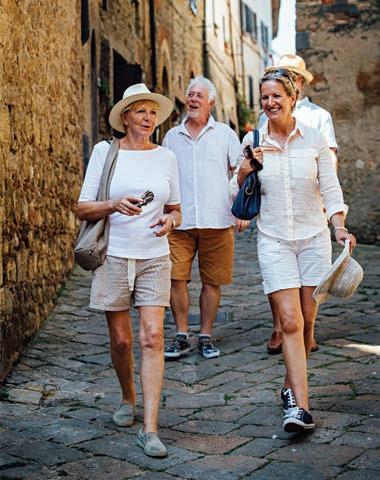


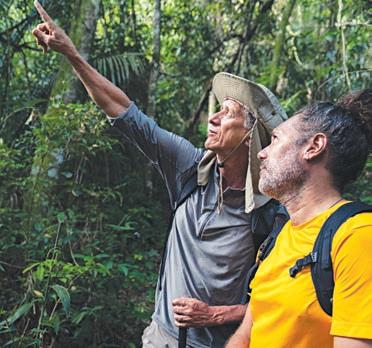
destinations. These smaller groups of about 20 people often have specific themes, such as culture or art, and the experience is comprehensive and reassuring.
“You’re taken care of from airport pickup to return home, with a tour manager throughout the journey and local guides at each destination.”
James suggests using a travel agent to help book your holiday. There’s often a misconception that using an agent will cost you more, but you can save money with the exclusive deals they have access to, including seniors’ discounts.
“You’ll also have peace of mind knowing someone’s doing all the heavy lifting, who is there on the ground back home to support you should any issues arise on your trip,” he says.

✓ Never skimp on travel insurance — look for policies without age limits
✓ Book through a travel agent for exclusive deals and on-the-ground support
✓ Visit your doctor eight weeks before departure for a checkup to ensure you are fit for travel and to discuss any medication you need to take with you
✓ Investigate what medication you can take depending on where you are headed and whether you need to check it in or take it as carry-on on your flight
✓ Consider your mobility requirements when choosing tours
✓ Look into solotraveller specific tours that waive single supplements, if that suits your situation
✓ Book shorter, focused tours rather than trying to see too much
✓ Consider shoulderseason travel for better deals and smaller crowds
✓ Plan multigenerational trips well in advance to accommodate everyone’s needs
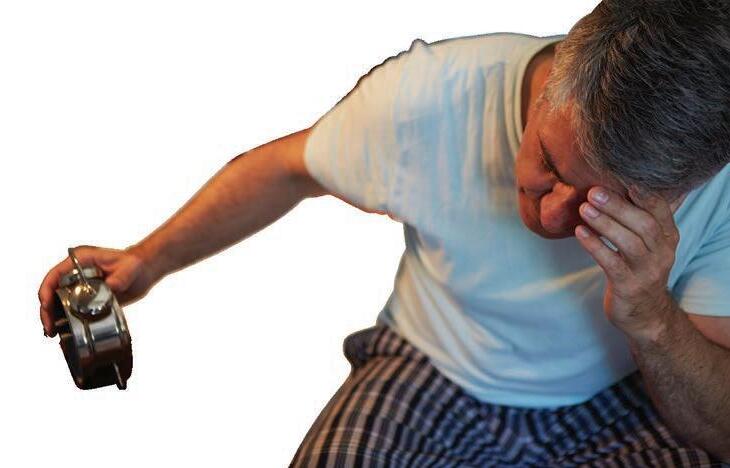
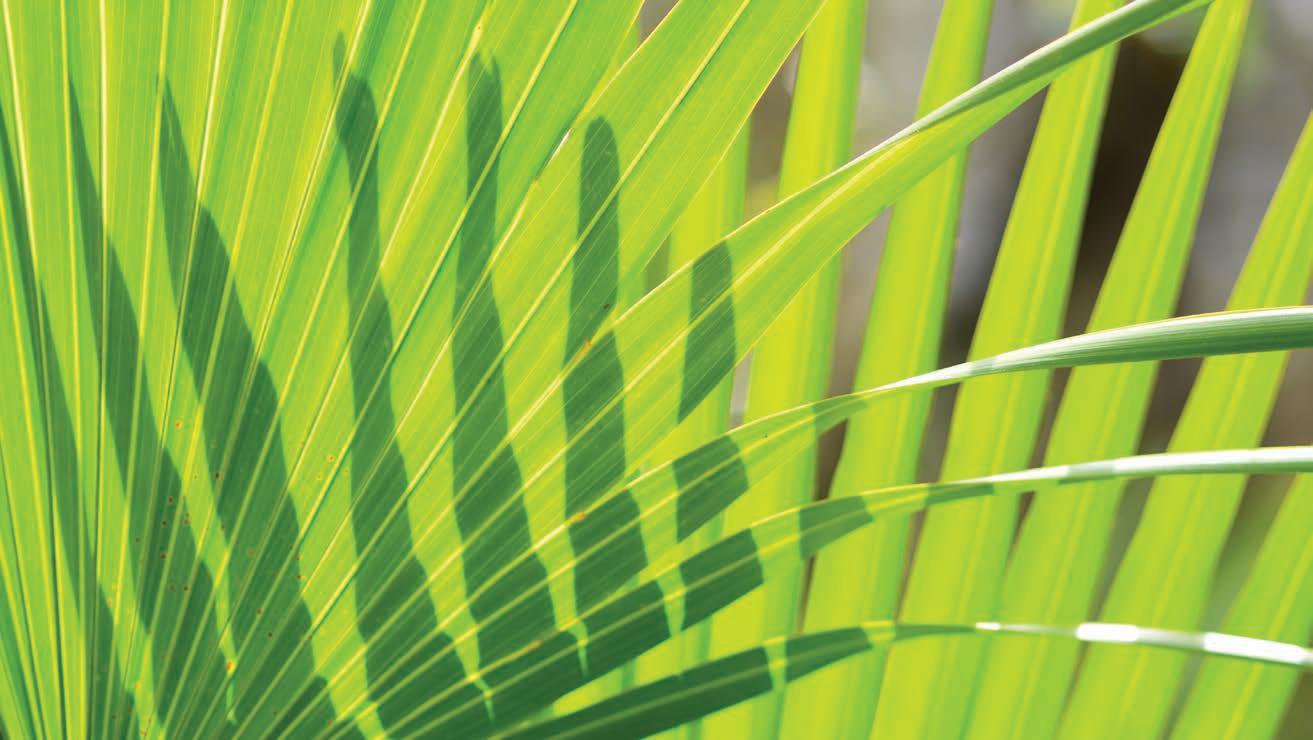
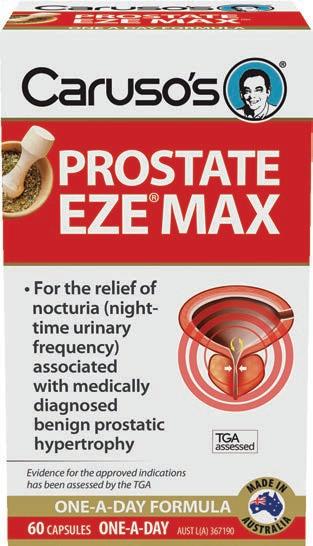
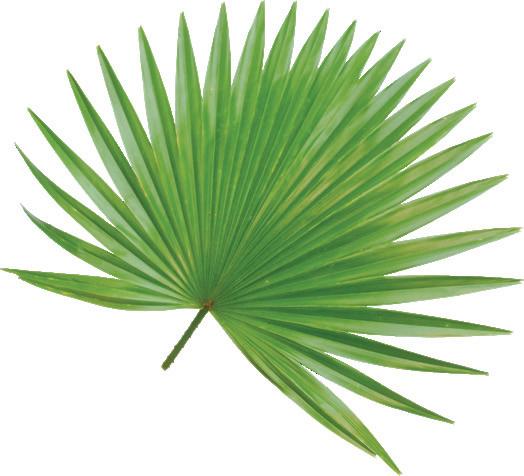
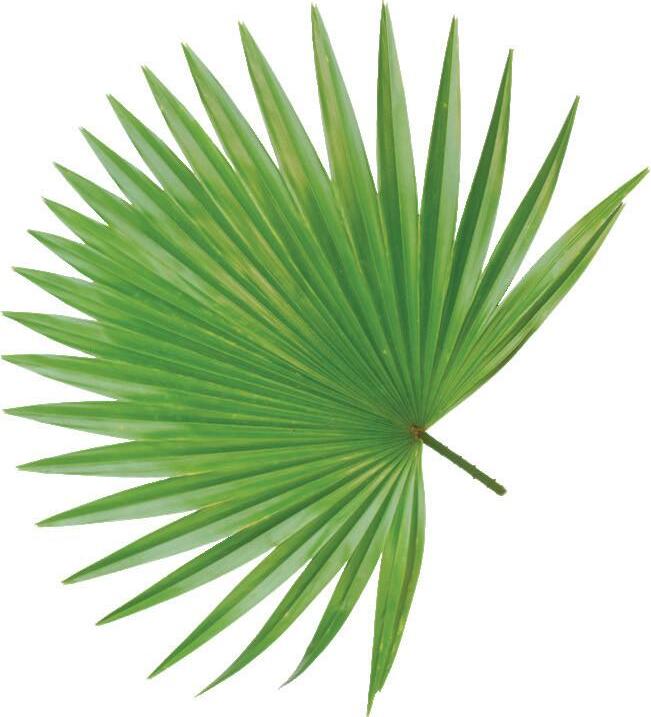






Relish the chance to tingle your tastebuds with recipes that are made to last — if you can resist
RHUBARB & RED ONION RELISH
MAKES 4 x 300ml (1¼ cup) jars
• 1kg rhubarb stalks, washed, trimmed and cut into 5cm lengths
• 2 tbsp caster sugar
• 500ml (2 cups) red wine vinegar
• 80ml (⅓ cup) vegetable oil
• 500g red onion, thinly sliced
• 50g grated fresh ginger
• 1 tsp ground cumin
• 1 tsp ground coriander
• ½ tsp ground fenugreek
• 2-3 garlic cloves, crushed
• 500g apples, peeled and grated
• 200g (1 scant cup) brown sugar
• 1-2 tsp salt
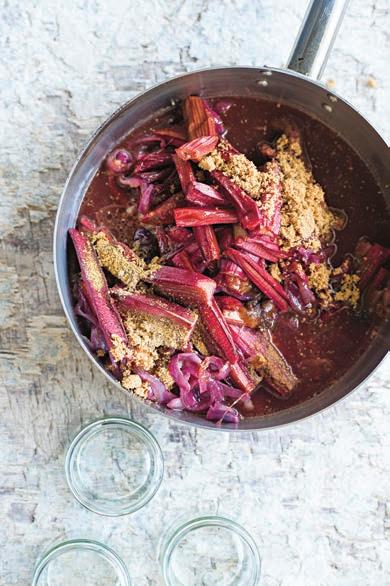
Lovely with cheddar, eggs or at a barbecue or family lunch, this is an excellent relish to stock in the pantry or give as a gift.
Roasting the rhubarb really intensifies the flavour, so don’t skip this step. It also cuts down on cooking time, once it’s in the pot.
Preheat the oven to 180C. Spread the rhubarb evenly over 2 baking trays. Sprinkle with the caster sugar and 80ml (⅓ cup) of the vinegar.
Mix with your hands to combine. Roast the rhubarb for about 20 minutes until soft and slightly caramelised. Meanwhile, heat the vegetable oil in a non-reactive, medium-sized saucepan. Add the onion and saute over medium heat for about 8 minutes, until soft and translucent. Add the ginger, spices and garlic and saute for 2 minutes until fragrant, stirring constantly.
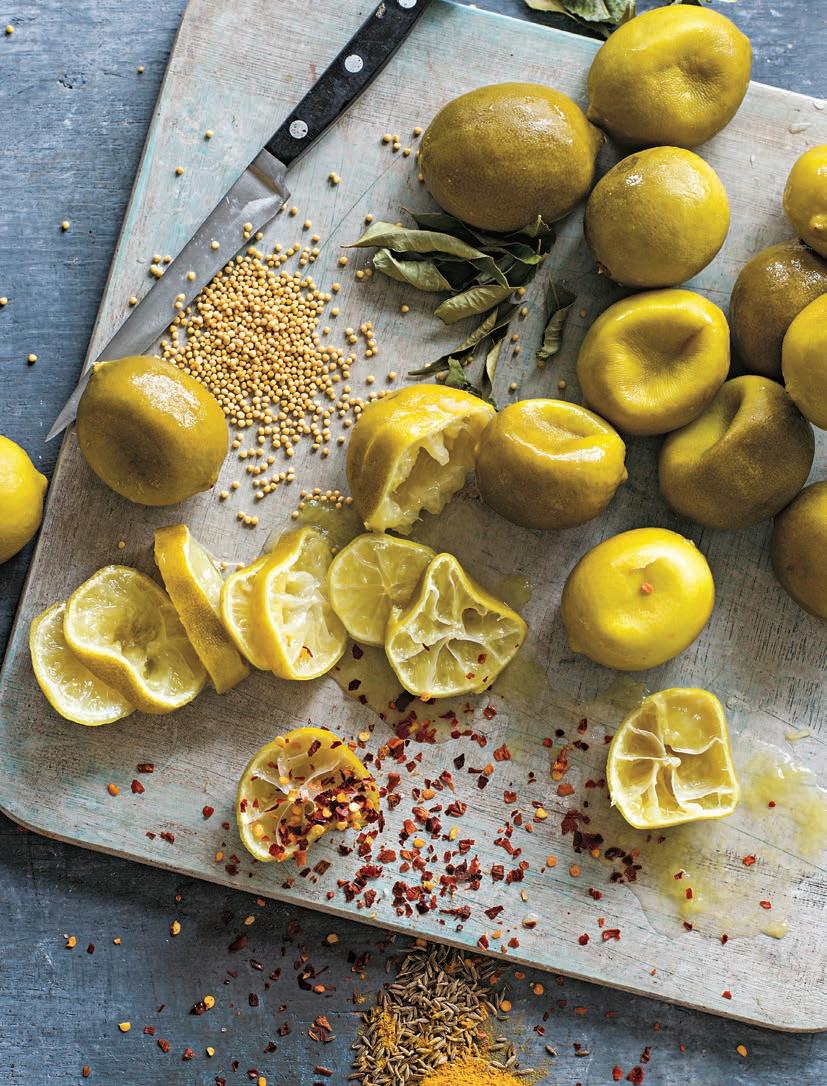
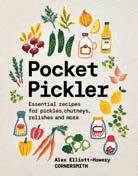
Add the roasted rhubarb to the pan, along with the remaining vinegar, grated apple, brown sugar and salt, stirring to combine well. Reduce the heat to low.
Simmer, uncovered, for about 30 minutes, stirring now and then, until the relish is thick and glossy, with no puddles on the surface. Meanwhile, sterilise your jars and lids. Carefully fill the hot jars with the hot relish.
Images and edited recipes from Pocket Pickler by Alex Elliott-Howery, published by Murdoch Books, RRP $29.99. Photography: Alan Benson
Remove any air bubbles by gently tapping each jar on the work surface and sliding a clean butter knife or chopstick around the inside to release any hidden air pockets.
Wipe the rims of the jars with paper towel or a clean damp cloth and seal immediately. Leave to cool on the benchtop, then store in the fridge for up to 6 months.
Once opened, refrigerate and use within 3 months.

MAKES 3-4 x 300ml (1¼ cup) jars
• 1kg limes (preferably unwaxed)
• 3 litres (12 cups) water
• 80ml (⅓ cup) vegetable oil
• 500g onions, thinly sliced
• 3-4 garlic cloves, crushed
• 375ml (1½ cups) white wine vinegar
• 110g (½ cup) caster sugar
• 1 tbsp salt
• 1 tsp fenugreek seeds, toasted and ground (see tip)
• 2 tsp cumin seeds, toasted and ground (see tip)
• 2 tsp coriander seeds, toasted and ground (see tip)
• 1-2 tsp chilli flakes
• 1⁄2 tsp ground turmeric
• 6-8 curry leaves
TIP: To toast the spice seeds, gently fry them in a small frying pan without any oil for a minute or two until aromatic, stirring constantly so they don’t burn. It’s best to toast them separately, as fenugreek seeds need only a very quick fry to avoid bitterness. Grind to a powder using a spice grinder or mortar and pestle.
This pickle is wonderful with curries, seafood and fried eggs. You can also mix a tablespoon through yoghurt to make a flavoursome marinade for chicken or fish.
Put the limes in a saucepan with the water. Simmer over medium heat for 20-30 minutes until soft.
Strain the limes, then leave to cool slightly. Cut the limes into very thin strips, or finely dice them. Set aside in a bowl, making sure you add all the lime pulp.
Heat the vegetable oil in a large, non-reactive saucepan. Saute the onion over medium heat for about 8 minutes, until soft, translucent and sweet.
Add the garlic and saute for 1-2 minutes until fragrant.
Turn the heat down to low. Add the lime, vinegar, sugar, salt, spices and curry leaves, stirring to combine. Simmer for 15 minutes or until the
sauce thickens, stirring often so it doesn’t stick to the pan.
Don’t let it dry out too much as you need moisture to cover the limes once they’re packed into the jars.
Meanwhile, sterilise your jars and lids.
Carefully fill the hot jars with the hot pickle. Remove any air bubbles by gently tapping each jar on the work surface and sliding a clean butter knife or chopstick around the inside to release any hidden air pockets.
Wipe the rims of the jars with paper towel or a clean damp cloth and seal immediately.
Leave to cool on the benchtop, then store in a cool, dark place for up to 6 months. Let the lime pickle sit for at least 2 months before eating; it will be even better after 6 months. Once opened, refrigerate and use within 6 months.
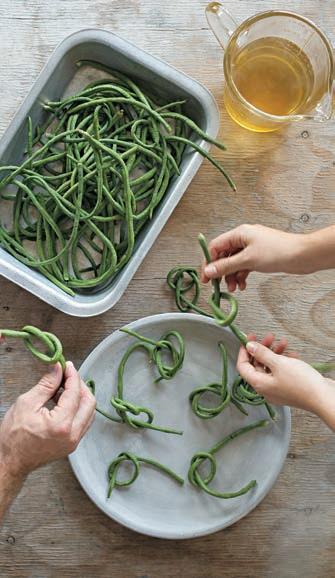
• 1 big bunch of snake (long) beans, about 300-400g
• 1 tsp chilli flakes (optional) KNOTTED SNAKE BEAN PICKLES
MAKES 1 x 750ml jar
• 500ml (2 cups) white wine vinegar
• 250ml (1 cup) water
• 75g (⅓ cup) caster sugar
• 2 tsp salt
• ¼ tsp ground turmeric
• ½ tsp black peppercorns
• 1 tsp dill seeds
• 2 garlic cloves, peeled
Green beans make great pickles! And these knotted snake bean pickles are delicious and adorable. They are best kept in the fridge, as snake beans tend to get a bit slimy over time. Wash the beans and trim off any blemished ends. Tie any long beans into loose knots or coils.
Make your brine by combining the vinegar, water, sugar, salt and turmeric in a non-reactive, medium-sized saucepan. Place over low heat and stir to dissolve the sugar and salt. Bring to simmering point, add your knotted beans and blanch for 2-3 minutes, then turn off the heat.
Put the peppercorns and dill seeds in the bottom of a clean jar. Add the garlic and chilli flakes, if using, then carefully pack the beans in.
Add the hot brine, making sure the beans are completely submerged. Remove any air bubbles by gently tapping the jar on the work surface and sliding a clean butter knife or chopstick around the inside to release any hidden air pockets.
Wipe the rim of the jar with paper towel or a clean damp cloth and seal immediately. The beans will keep in the fridge for up to 3 months.
Powerful change starts with the smallest of actions. Follow these experts for guidance along the path to healthy renewal
He’s worked with some of Hollywood’s biggest names, including Jennifer Lopez, 50 Cent and Kendall Jenner, but according to New York-based trainer Jay Cardiello, they all have one thing in common when it comes to better health and fitness — it takes time. Jay, who has teamed up with Brisbane wellness brand Kailo for a 12week “transformation program”, says it starts with just one minute of exercise a day, plus some simple self-love practice. Here, Jay and members of his team share 12 ways to change up your health for the better.
CELEBRITY TRAINER, FITNESS AND MINDSET EXPERT
1Give yourself the love you seek
Often, we look outward for validation, affection and support, believing someone else will fill the voids we feel. But the truth is that lasting fulfilment starts from within. Write a letter to the parts of yourself you’ve ignored or judged harshly. Embrace your imperfections and appreciate the resilience that’s carried you this far. Each day, speak kindly to yourself — give yourself the encouragement, grace and forgiveness that you would give to someone you love. Only when you truly love yourself can you be open to healthy, fulfilling relationships with others.
Embrace the power of small steps
Lasting change doesn’t require drastic shifts. Small, consistent actions in fitness or personal growth lead to the most powerful transformations.
Redefine failure
View setbacks as learning opportunities rather than defeats. Success is a journey; each failure is a stepping stone to greater resilience and growth.
Prioritise your mind-body connection
Recognise that physical and mental health are interdependent. Invest in both through activities that calm your mind and challenge your body, such as strength training, meditation or breathwork.
Stay present
Focus on the current moment rather than past regrets or
future anxieties. Mindfulness boosts not only performance but also personal fulfilment and contentment.
Set non-scale goals
Avoid fixating on external measures of success, such as weight or money. Set meaningful, internal goals that encourage personal growth and long-term wellbeing.
Build a supportive environment
Surround yourself with people who uplift you, whether family, friends or mentors. A positive support system fuels motivation and emotional resilience.
Be your own competition
Instead of comparing yourself to others, focus on being better than the person you were yesterday. This mindset drives sustainable selfimprovement.

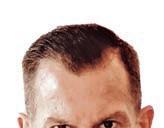

Life rarely goes as planned, so develop mental flexibility. Embrace change as an opportunity for growth and adjust your approach as needed.
My “regression to progression” concept in fitness emphasises taking a step back to build a solid foundation, ensuring long-term growth and resilience. This approach means focusing on fundamental movements and correcting form rather than rushing to lift heavier weights or attempting advanced exercises. Individuals can avoid injury, improve stability and create a more substantial base for future challenges by prioritising the basics. In this view, fitness isn’t about quick fixes but sustainable progress. Regressing temporarily allows for realignment and reinforces the importance of small, deliberate steps, leading to greater strength, endurance and overall success in the long run. This mindset can be applied to any goal, reminding people that sometimes stepping back is the best way forward.
“INSTEAD OF COMPARING YOURSELF TO OTHERS, FOCUS ON BEING BETTER THAN THE PERSON YOU WERE YESTERDAY.”
Consider adding red to your wardrobe when you need a surge of energy, strength or confidence. Red is a powerful colour that psychologically signifies action, courage and vitality. Wearing red, especially during challenging workouts or high-stakes moments, can help reinforce a mindset of strength and focus, giving you the edge you need to push through. Embrace the colour’s symbolism to amplify your confidence and remind yourself of the inner power you carry. Incorporating red can be a simple, effective way to tap into that extra motivation.

COURTENAY DUBOIS TRANSFORMATIVE THERAPIST, RELATIONSHIP AND BEHAVIOURAL CHANGE EXPERT
6Release limiting beliefs
The most transformative change occurs when we uncover and release our limiting beliefs. These often hidden barriers hold us back from reaching true potential, influencing everything from relationships to health and even career success.
7Cultivate a consistent mindset for lasting change
Mindset shifts are powerful, but consistency is key. Establishing daily habits that reinforce new beliefs — such as focusing on desired outcomes and taking aligned action — rewire the mind over time to achieve.



8
yourself by feeling each breath
To stay present, focus on sensations in your abdomen with each breath. Notice the rise and fall of your stomach as you engage the diaphragm rather than the chest. This belly-centred breathing grounds you in the moment, allowing you to feel fully present. Practices such as these help to deepen your awareness and create a steady, calming anchor, making it easier to remain centred and composed amid the demands of everyday life.
For deep relaxation, try extending your exhale longer than your inhale. Inhale slowly for a count of four, then exhale for six or eight. This technique activates the parasympathetic nervous system, calming your body and easing stress. Exercises such as these help enhance mental clarity and reduce anxiety, equipping you with simple, effective tools to reset and recharge throughout the day.
NUTRITIONIST, PODCASTER AND BESTSELLING AUTHOR
10
Make yourself a priority
This might sound like a strange one as it doesn’t involve taking green powder or guzzling herbs but it’s arguably one of the most important ones: When your mindset is clear and you’re making health changes because you value yourself, then anything is possible.
Overeating and emotional eating are a biggie when it comes to sabotaging our health goals. Mindful eating is all about taking a moment to be present when you eat — take in the sounds, smells, tastes. Chew your meal a few more times than usual; this will also help your mind tell your body when it’s satiated or full. Mindful eating is becoming more popular. It’s a great way to get back to connecting to yourself, your body, your meal prep and your health goals.
12
When in doubt, eat your greens!
This is an oldie but a goodie. Generally speaking, all green food is high in phytochemicals (that just means plant nutrients). Think broccoli, kale, asparagus, brussels sprouts, zucchini, avocado, spinach, chard, sprouts, salad greens and herbs such as parsley and coriander. Did you know that broccoli contains more vitamin C than oranges? Green vegies are the heroes of clean eating.
For more on the Kailo 12-week transformation program visit kailo.com.au

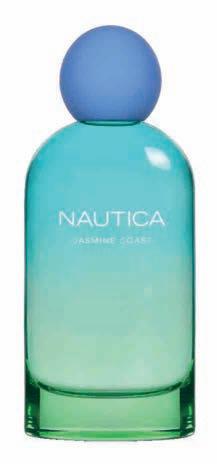
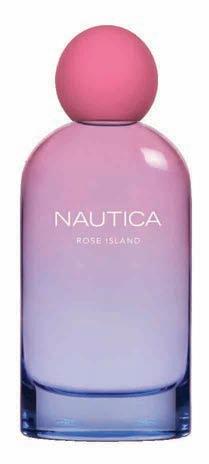
Whether it’s a colour-packed room or playful touches here and there, you can harness the power of dopamine decor to elevate your mood
Words Liz McGrath
Melissa Walsh, a mum of two from City Beach in Perth, loves colour so much she had her house painted bright blue.
“I love colour inside the house, in my ceramics, paintings and cushions, but I wanted it outside, too — it makes me happy — and so I have the only blue house in the street,” she says with a laugh.
Melissa may not know it by name, but she was an early adopter of “dopamine decor”.
What is it?
Temple & Webster director of insights and trends Lucy Sutherland says dopamine decor is about creating interiors that make us feel happy and energised.
“We know through colour psychology that colour impacts mood, so dopamine decor harnesses this knowledge to infuse joy into our lives,” Lucy says.
And, adds Roger Wei, the online furniture retailer’s head of design and product development, that feeling of comfort and happiness is unique to each person.
“For some, it might mean a minimalist space with clean lines and little clutter, while for others, it’s a home filled with texture, colour and personality,” Roger explains.
Where is it from?
The trend evolved from the “dopamine dressing” movement during Covid, with bright colours and the move towards patterns and textures contrasting with neutral, minimalist interiors, Lucy says.
“With so much time at home, our attention turned from what we were wearing to our interiors, and we adopted the same principles of dopamine dressing to our homes,” she says.
“The popularity of the trend also ties in with the wellness theme of recent years.
“Dopamine is a feel-good hormone that impacts wellbeing by evoking happiness and inspiring creativity, so increasing dopamine levels at home has many benefits.
“Simple things like creating interiors that make you happy can make a big difference!”
Are there psychological benefits?
Yes, says clinical psychologist
Donna Stambulich: “As a psychologist, I’ve observed first-hand how our environment can profoundly impact our mental state.”
Donna, the founder of North Perth Psychology Centre, says the colours and objects we surround ourselves with “aren’t just decorative
choices; they’re powerful tools for emotional regulation and self-expression”.
“In my practice, I often encourage clients to be mindful of their living spaces and how these spaces make them feel.
“Whether it’s a vibrant piece of art that ignites creativity or a soothing blue wall that promotes relaxation, our homes can be active participants in our mental health journey.”
Lucy suggests revamping your space with moodboosting colours.
“Different dopamine colours have different effects,” she says. “Yellows encourage conversation and energy; blues and greens are good for relaxation; reds stimulate
“BRINGING IN TEXTURES AND CURVY SHAPES AND EMBRACING NATURE CAN HELP CREATE SPACES THAT SPARK JOY.”
appetite and heart rate; and warmer colours like yellow or orange boost creativity in home offices.”
Saturated colours can be hard to live with, so try toneddown versions for the same effect and play with patterns to diffuse the impact of a colour or to introduce more than one shade, Roger advises.
Shape can also play a big role in guiding how you feel.
“Exaggerated shapes can be playful, unexpected and sophisticated,” Roger says. “Bringing in textures and curvy shapes and embracing nature can help create spaces that spark joy.”
Arranging your room to make the most of sunshine and introducing plants or green as a colour are other ideas to enhance mood.
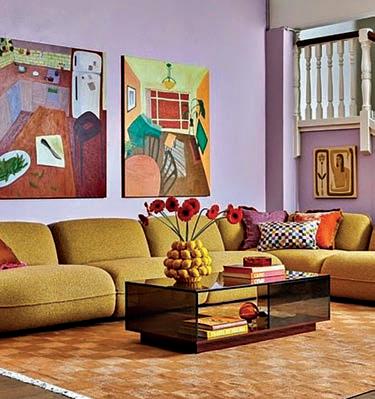

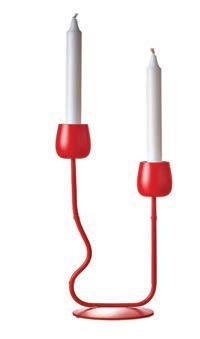

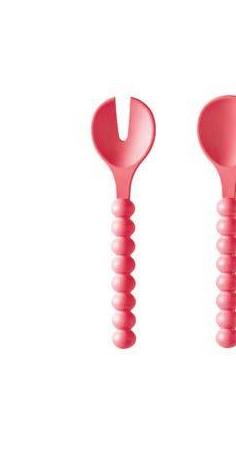
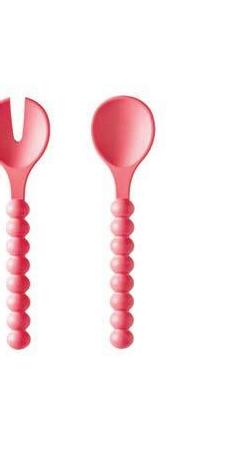




✓ START WITH THE SPACES YOU SPEND THE MOST TIME IN “If the kitchen is your favourite space, consider adding items that make it cosier like a beautiful runner or new counter stools,” Roger says. “My partner spends a lot of time in his artist studio, so I got him a relaxing armchair and an ottoman, which brings me joy when I see him use it to read or nap.”
AND

CLOCKWISE FROM TOP LEFT
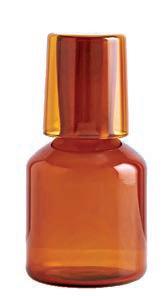

Pencil coat stand, $79, australianbeddingcompany.com.au; Silverpäron candlestick/tealight holder, $12, ikea.com; &Tradition Flowerpot VP10 pendant, $355, mrandmrsdesigner.com.au; Cloud serving spoons, $49, maisonbalzac.com; Chilli chair, $1599, futureclassicsfurniture.com.au; The Baskets, $69, mustardmade.com; Jaded champagne glasses (set of two), $59, kipandco.com.au; J’ai Soif carafe and glass, $89, maisonbalzac.com; Resin branch vase, $300, greenhouseinteriors.com.au; Daisy knit cushion cover, $59 (without insert), castleandthings.com.au
✓ SMALL IS GOOD “When it comes to home decor and furnishings, small things — like a new candle or set of towels — can make a big difference,” Roger says. “Lighting with floor and table lamps is also a great way to add warmth and mood.”
✓ CREATE IMPACT WITH A COMFY CHAIR YOU LOVE “If you’re going to spend money on one thing, choose a beautiful occasional chair that’s textured, comfortable and all about you and your space,” Lucy adds. “There’s so much range in terms of colour, texture and shape.”

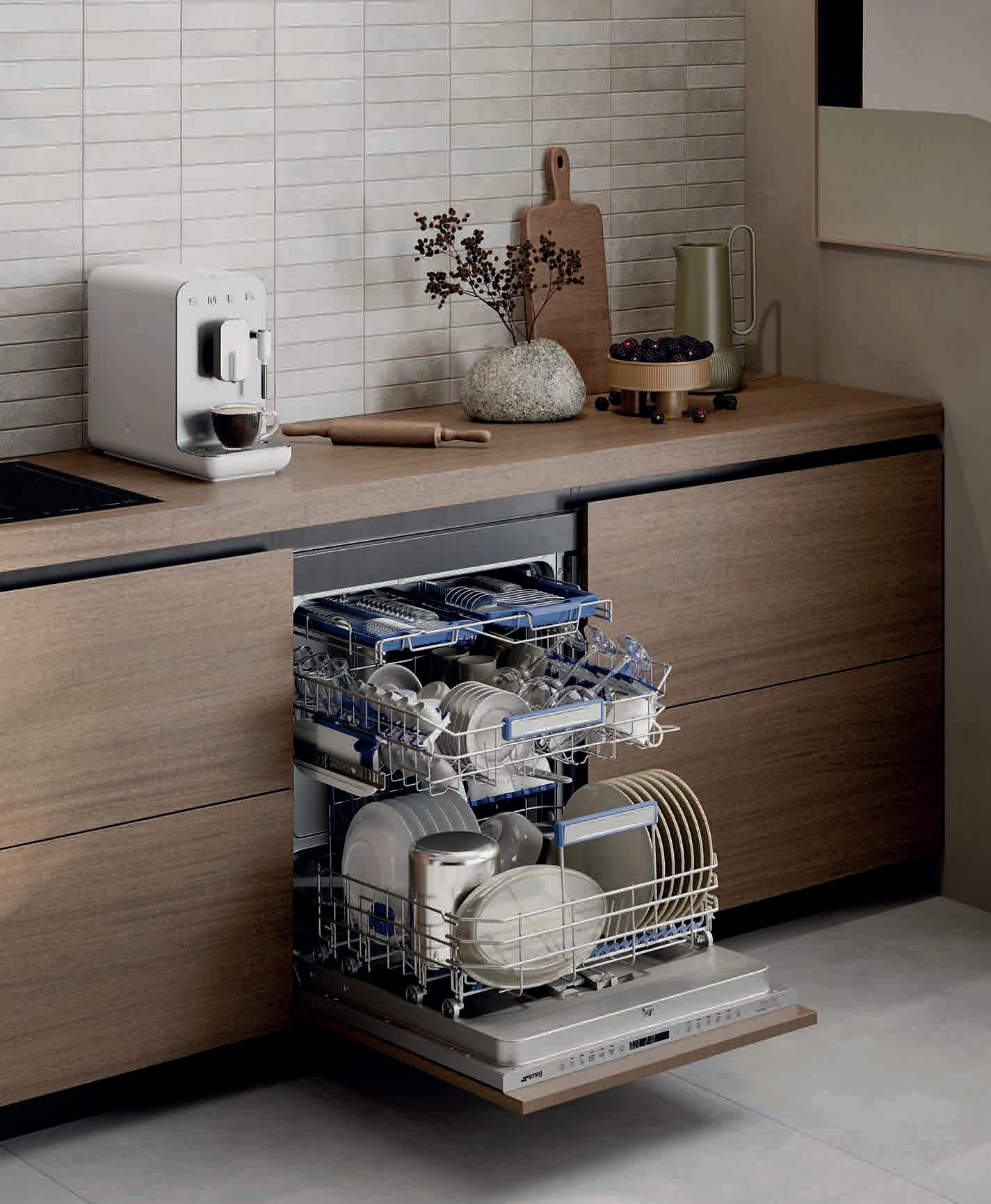
Canstar award winning Smeg Diamond dishwashers are unmatched for cleaning and performance with the patented Planetary wash system.

Nicole Alexander (Penguin Random House)
RRP $34.99
In the summer of 1944, battle-worn soldier Canning Christie and his father Michael return from North Africa carrying unseen wounds. While Canning struggles with fractured memories of war, Michael hides his burdens behind a charismatic demeanour. As Canning is drawn to the vineyard on their land, he finds purpose in winemaking and hope in a chance encounter with neighbour Grace Huntley. But the ghosts of his past refuse to fade, pushing him towards uneasy alliances and forcing him to confront painful truths — including his father’s growing recklessness. It is a masterfully crafted tale of resilience, secrets and redemption set against the rugged beauty of rural South Australia. With rich historical detail and vivid storytelling, Nicole captures the emotional depth of homecoming and the struggle to rebuild in the aftermath of war.
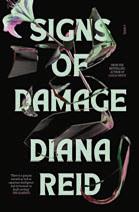
Diana Reid (Ultimo Press)
RRP $34.99
Trauma has an uncanny way of impacting people differently. For some, it can affect their entire being, for others it can be delayed, only to impact them later in life. In her latest novel, Diana explores the ramifications of trauma when Cass, 13, goes missing while holidaying with her friend Anika Kelly’s family in the south of France. She is discovered several hours later and nothing is really thought of it again. But 16 years later when Cass has a seizure and collapses at Anika’s dad’s funeral, the present and past collide. Are Cass’s seizures due to epilepsy or a psychosomatic reaction to something that happened to her while locked in an old icehouse? And why does Anika think it’s her fault? Push comes to shove at Anika’s sister Skye’s wedding when Cass’s boyfriend, Sam, is involved in a tragic accident. Or is it? This is a clever plot involving secrets and repressed memories — and assumptions, right or wrong.
Greta J. Bradman (HarperCollins) RRP $36.99
Greta, a psychologist, explores the core values that can help guide us to experience meaningful lives. She explains how values shape our perceptions and actions, even when unconscious. This book’s potency lies in its practicality, providing tools to identify both core and threat-based values. By understanding these drivers, readers

Janette Paul (Pan Macmillan Australia)
RRP $34.99
This heartwarming novel illustrates the healing power of unexpected friendships — found in the unlikeliest of places. It follows Coral, Andie and Mara, who are at a crossroads in their lives, with the story unfolding on a rehabilitation hospital balcony. A 30-something Andie is visiting the man who pushed her out of the way of a speeding car, Coral is in her 50s and caring for her mum who has had a fall, while Mara, in her 20s, is steeling herself to work alongside her law firm’s prickly senior partner after she sustained a fall as well. As they connect with the patients and each other, their shared experiences become a powerful bond of support and understanding. This is a story that reminds us that even in the face of adversity, hope and healing can be found in the most unexpected places, often through the simple act of human connection.
can align their choices with what really matters, leading to greater authenticity and purpose. From exploring topics such as the power of meaning in an uncertain world to the imposter syndrome phenomenon, Greta’s explanations and relatable examples offer a roadmap for navigating life’s complexities with intention and achieving a life well-lived.

ADHD
Lisa Dee (Scribe)
RRP $32.99
As a health coach with ADHD, Lisa is well placed to offer up the mindset shifts, systems, habits and foods that have helped her to thrive.
Naomi Watts (Penguin )
RRP $36.99
The home-grown Hollywood star has been vocal about her own experiences with menopause — and now she is helping others with personal stories, tips and advice from doctors and hormone experts.
THE FOURTH TRIMESTER
Amelia Lamont (Penguin) RRP $36.99
“The Midwife Mumma” provides practical advice for those crucial first 12 weeks with a newborn, including feeding, sleeping, health checks, mental health and milestones.
Tasmanian Autumn Festival, Tasmania, April 1-30
Experience the charm of the Derwent Valley and Central Highlands as this month-long festival celebrates the area’s history, vibrant culture and breathtaking landscapes. Explore Tassie’s oldest pubs, savour seasonal produce, enjoy fine wine and admire handcrafted creations by local artisans. From guided tours and workshops to exhibitions and selfdrive routes, this event offers unforgettable experiences for adventurers, foodies and culture seekers. tasmanianautumn festival.com.au
and May 3-4
Spanning two weekends, this celebration showcases the region’s rich heritage in wine, cider, spirits and fresh local produce, all just 35 minutes from Perth. Indulge in award-winning wines, gourmet dishes and seasonal delights as you explore lush orchards and vineyards. Enjoy guided tours, intimate tastings, interactive workshops, familyfriendly activities and live artisan demonstrations across various venues. bickleyharvest festival.com
Festival of Outback Opera, Queensland, May 13-19
This extraordinary event brings worldclass performances to iconic outback locations, featuring awardwinning soprano Sumi Jo on stage in Winton and Longreach. Dress up for the Gala Ball, share a singalong at the pub or marvel under the stars at Dark Sky Serenade. Indulge in fine dining and exquisite vocals at the Long Lunch, or enjoy the hit show Are You Lonesome Tonight as it tours nationally, stopping in the outback. oq.com.au/whats-on/ festival-of-outbackopera
Sydney, Sydney, May 23-June 14
For 23 dazzling days and nights, Sydney will once again transform into a vibrant playground of creativity, innovation and technology. Celebrating its 15th year, this award-winning festival promises an unforgettable fusion of art, music, ideas and mouth-watering cuisine. Prepare to be mesmerised as famous landmarks and urban spaces come alive with breathtaking 3D light projections and captivating art installations. Groove to live music, enjoy performances that push creative boundaries and dive into deep conversations with thought-provoking panels. vividsydney.com
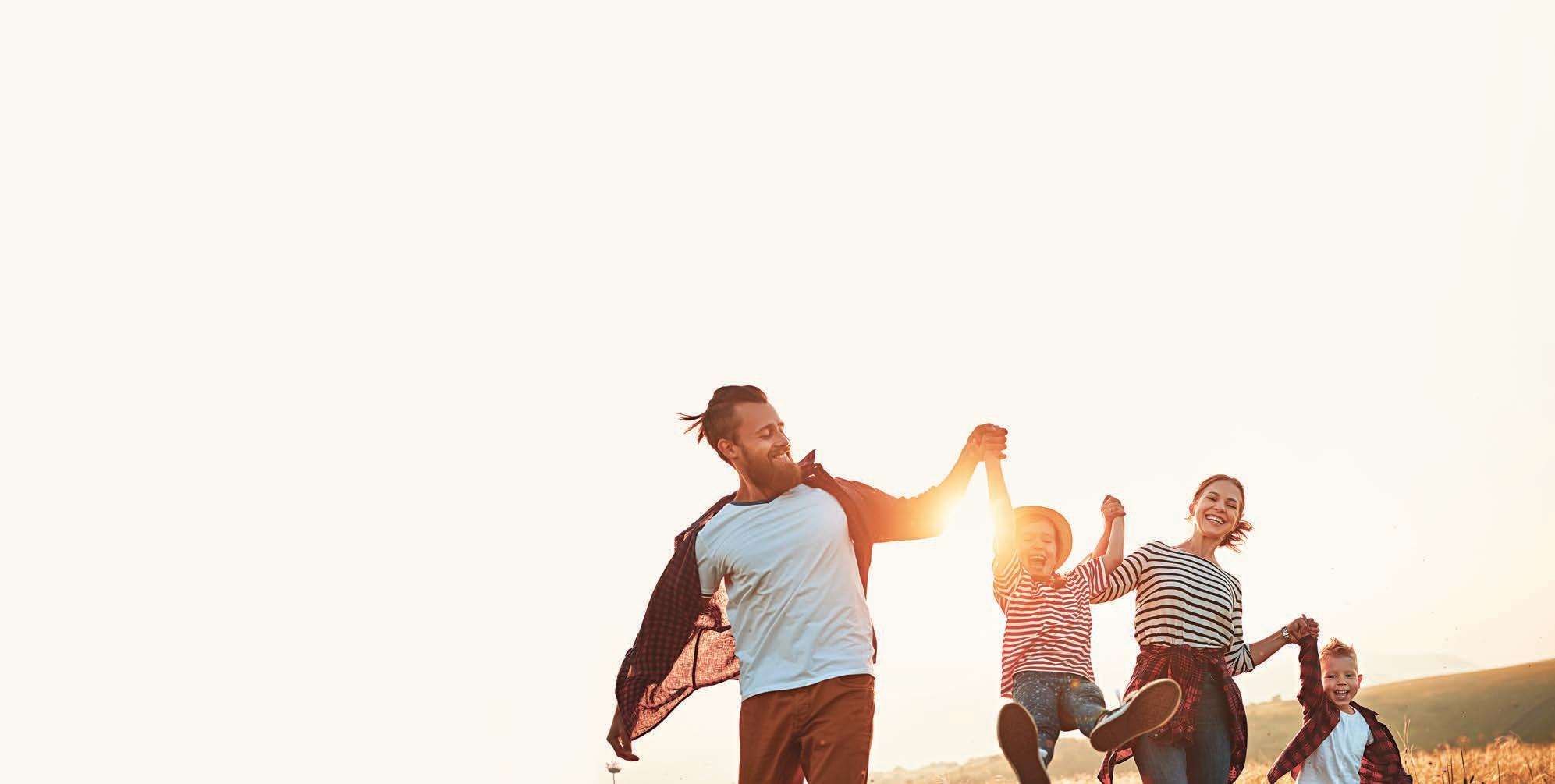

MENTAL AS ANYONE WITH J.MO
Join journalist Jonathon “J.Mo” Moran as he delves into mental health through interviews with high-profile people in this podcast sponsored by Chemist Warehouse. Each session highlights the issues of mental health in an uplifting way.

From anxiety and depression to panic attacks and grief, no topic is off limits for host Marc Fennell. This podcast from Beyond Blue shares the mental health journeys of everyday Australians — to help you with yours.

LET’S TALK ABOUT MENTAL HEALTH
Counsellor Jeremy Godwin offers research-backed, practical tips for better mental health. Each episode tackles specific topics, such as stress, imposter syndrome and overthinking, and provides simple strategies to improve your wellbeing.

WE CAN DO HARD THINGS
Glennon Doyle, wife Abby Wambach and sister Amanda Doyle talk honestly about life’s challenges, such as parenting, divorce, loneliness and addiction. Guests include Dolly Parton, Michelle Obama and Reese Witherspoon.
Cooly Rocks On, Queensland, June 4-8
Step back in time and celebrate the motors, music and lifestyle of the past at Australia’s favourite nostalgia festival. Wander through Coolangatta’s streets, lined with more than 900 cars showcasing hot rods, custom vehicles, scooters, bikes and more. Dance to the vibrant beats of rock ’n’ roll, swing, rockabilly and tribute acts from across the globe. Enjoy the Elvis tribute competition and experience the charm of yesteryear with the pin-up pageant and the 1940s-style Moonlight Swing Dance. Plus, check out the variety of retro goods and vintage memorabilia at the bustling beachfront markets. coolyrockson.com


This work-break timer keeps you active with tailor-made reminders to take breaks from sitting. Set intervals from five minutes to two hours to maintain a healthier work routine.
June 9
Watch some of the biggest names in Australian sport face Australia’s coldest ice bath, before the iconic clash between AFL clubs Collingwood and Melbourne. This event unites the nation in support of Australian of the Year Neale Daniher, FightMND patron and co-founder, and everyone impacted by motor neurone disease (MND), by raising awareness and critical funds for groundbreaking research. Donate or join the cause by hosting your own Big Freeze event, whether it’s a DIY slide, ice bath challenge or ice bucket plunge. Chemist Warehouse has been a proud partner of FightMND, through the Daniher’s Drive event, since 2017. fightmnd.org.au
1 What is the name of Google’s next-generation AI model, announced in December 2023?
2 What phobia describes the fear of flowers?
3 Which Australian professor pioneered the bionic ear (cochlear implant), of which the first prototype was implanted in a person in 1978?
4 Who are the new co-hosts of Channel 7’s The House of Wellness television show?
5 Katalin Kariko and Drew Weissman won the 2023 Nobel Prize in Physiology or Medicine for their discoveries that led to the development of an effective vaccine against what disease?
6 In what year did singer/ songwriter Prince release his hit album and song 1999?
7 Who directed and co-wrote the screenplay of the original Mad Max film, released in 1979?
8 Who was the first Australian-born governorgeneral of Australia?

Get your daily HIIT exercises at home with no equipment. With quick, build-your-own, science-based workouts, it’s perfect for busy lifestyles and can adjust to your fitness level and goals.

Set fitness goals, track your workouts, set training routines, get personalised plans and discover new ways to get fit and strong with 800-plus exercises. Join a community for added motivation.
9 What agricultural tool is the man holding in the famous 1930 Grant Wood painting American Gothic?
10 Kourtney, Kim and Khloe are the three Kardashian daughters of Robert and ex-wife Kris, but what is the name of Robert and Kris’s only son?
11 In what month does autumn start in Australia?
12 What is the chronic condition that inflames and narrows the airways in the lungs?
13 Who, with Yitzhak Rabin and Shimon Peres, jointly received the Nobel Peace Prize in 1994?
14 Is pumpkin a fruit or vegetable?
15 In what 1989 film, starring Meg Ryan and Billy Crystal, is the iconic quote, “I’ll have what she’s having”?
16 What is the only fruit to have its seeds on the outside skin?
17 Which ancient Greek physician is regarded as the “Father of Medicine”?
18 British author E.L. James is famous for writing which 2011 erotic romance novel?
19 Cowboy, golden barrel and saguaro are varieties of which plant?
20 In which country is the Day of the Dead holiday (honouring deceased friends and loved ones) celebrated?
21 In what season do the leaves of trees turn red, orange and yellow?
22 The spice paprika is created from dried and ground what?
23 In what Australian state or territory was champion cricketer Shane Warne born?
New The House of Wellness TV co-host Melissa Doyle is embracing pottering about at home, pared-back beauty and letting go of perfection
Words Bianca Carmona
After years of juggling a busy family life with job demands, Melissa Doyle is delighting in a new rhythm; one that prioritises health, balance and meaningful connections.
But that doesn’t mean the beloved TV and radio presenter is disappearing from our screens. Mel has taken up a new role as co-host of The House of Wellness TV show, with AFL identity Shane Crawford.
“Wellness is an area that fascinates me and I know I’m not alone,” Mel says. “I’m excited to explore such an important area and learn as much as I can.”

Mel wears Scanlan
Theodore bustier, jeans and blazer, Ole Lynggaard
She says the TV show — which returns to Channel 7 this month in a new prime-time Friday night slot with a new line-up of presenters — aims to be a trusted guide in a world overloaded with wellness advice.
“We’ll find answers, debunk myths and share some great tips we can all use to make our lives happier
and healthier,” she says.
Having spent years waking up at 3am to co-host Sunrise breakfast TV, Mel knows the challenges of having a healthy routine amid a demanding career.
“When I was hosting Sunrise, then coming home to two small children, my plate was so full that I didn’t have time for much else. I had to be at ease with the inconsistency and just do my best,” she says.
Now, life looks very different for Mel. “I have the time to focus on my health.
I can walk my dog, read a book, stick to a gym routine and plan meals. It’s a luxury I didn’t always have,” she shares.
For Mel, family is everything. She and husband John Dunlop are very close to their adult children, Nick and Talia.
“My family always comes first,” she says. “We’re all homebodies and just love spending time together. Our favourite thing to do is travel as a family.”
Many years of parenting have taught Mel to let go of perfection.
“It’s a cliche, I know, but don’t sweat the small stuff. Happy kids outweigh a messy house,” she says.
“Enjoy the time because it really is fun and precious. You blink and they’ve grown up and left home. Now, I miss their little hands in mine.”
When it comes to beauty, Mel prefers to keep it simple with a consistent skincare routine.
“Maintaining healthy skin is my focus. I can live with the crinkles if my skin looks fresh and healthy,” she says. “As I get older I’m definitely wearing less make-up. No one wants cakey foundation sitting in our laugh lines, so I’m leaning towards tinted moisturisers or serums instead of foundation.”
She keeps fit with a mix of gym workouts and daily walks with her border collie. As for downtime, she likes to spend that at home.
“My favourite way to unwind is on the couch in front of the telly. I also love reading. And sometimes just pottering around the house with music on is all I need.”


